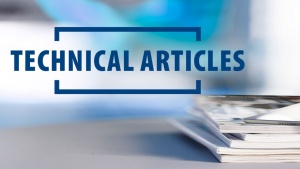
A slewing bearing is a large, specialized bearing structure capable of simultaneously withstanding substantial axial loads, radial loads, and overturning moments. It integrates multiple functions such as support, rotation, transmission, and fixation. Due to its complexity and critical role in equipment, it is essential to conduct thorough inspections during installation and follow strict maintenance and storage guidelines to prevent damage and ensure proper operation.1. Installation of the Slewing BearingBefore installation, inspect the mounting surface of the host machine. The supporting structure must possess sufficient strength, and the connection surface should be machined flat, free of debris and burrs. If machining cannot achieve the required flatness, high-strength structural plastic fillers can be used to correct the surface and provide vibration damping.Each raceway ring of the slewing bearing has a quenched soft zone, indicated by an "S" mark on the end face. During installation, this soft zone should be positioned in a non-load or infrequently loaded area (the plug hole is always located in the soft zone).The bearing should be radially positioned first, and installation bolts should be tightened in a crisscross pattern. Check the bearing's rotational condition during this process. Bolts must be tightened with sufficient preload, typically 70% of the bolt material's yield strength. Quenched and tempered flat washers should be used with the bolts, and spring washers are strictly prohibited.2. Maintenance of the Slewing BearingAfter installation and 100 hours of continuous operation, all mounting bolts should be checked to ensure the preload torque meets specification. Repeat this inspection every 500 hours of operation.Upon installation, the bearing must be filled with an appropriate amount of grease. Rotate the bearing while applying grease to ensure even distribution. Over time, some grease will inevitably dissipate, so it is recommended to replenish the grease every 50–100 hours during normal operation.3. Transportation and StorageDuring transportation, the bearing should be placed horizontally on the vehicle with measures in place to prevent sliding and vibration. Auxiliary supports should be added if necessary.
2025-07-01
More >>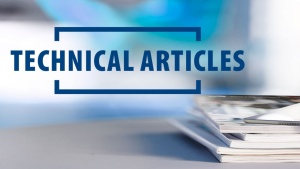
Slewing bearings, also known as slewing rings or turntable bearings, are essential components in many mechanical systems where rotational movement and load support are required. Their versatility and ability to handle axial, radial, and moment loads make them ideal for numerous applications across various industries.1. Construction MachineryOne of the most common applications of slewing bearings is in construction machinery. Equipment such as tower cranes, mobile cranes, and excavators rely on slewing bearings to provide smooth and stable rotation. These bearings enable machines to lift and maneuver heavy loads efficiently while maintaining structural integrity.Example: In excavators, slewing bearings allow the upper structure to rotate 360 degrees on the undercarriage, enhancing operational flexibility on construction sites.2. Renewable Energy: Wind TurbinesIn wind energy systems, slewing bearings are used in both pitch and yaw systems. Pitch bearings adjust the blade angle to optimize energy capture, while yaw bearings rotate the nacelle to face the wind direction. These components must withstand harsh environmental conditions and operate with high reliability over long periods.Keywords: wind turbine bearing, pitch bearing, yaw bearing3. Material Handling EquipmentSlewing bearings are critical in material handling systems such as conveyor systems, stackers, and turntables. They allow for the rotation and positioning of loads, improving efficiency and automation in warehouses and production lines.4. Medical EquipmentHigh-precision slewing bearings are also used in medical devices such as CT scanners and surgical tables. Their smooth, controlled movement and precision positioning are vital in ensuring patient safety and diagnostic accuracy.Example: In CT scanners, slewing rings enable the rotation of the imaging system around the patient, allowing for high-resolution 3D imaging.5. Offshore and Marine ApplicationsIn offshore platforms and ships, slewing bearings are used in cranes, winches, and azimuth thrusters. These environments demand corrosion-resistant materials and high-load capacities due to exposure to saltwater and extreme weather conditions.6. Solar Tracking SystemsWith the rise of solar energy, slewing drives (which include slewing bearings and a worm gear mechanism) are widely used in solar tracking systems. They enable solar panels to follow the sun’s movement across the sky, maximizing energy output.Keywords: solar tracker bearing, slewing drive, photovoltaic tracking systemChoosing the Right Slewing Bearing for Your ApplicationWhen selecting a slewing bearing, it’s important to consider the specific requirements of your application, including:Load type and magnitude (axial, radial, moment)Rotational speed and precisionEnvironmental factors (temperature, moisture, dust)Installation space and maintenance accessConsulting with experienced slewing bearing manufacturers can help ensure optimal performance and lifespan of the bearing in your machinery.ConclusionSlewing bearings are indispensable in modern mechanical systems, offering reliable rotational motion and load support in a compact design. From heavy-duty cranes to precision medical equipment, the applications of slewing bearings continue to expand with advancing technology. Understanding their uses can help engineers, designers, and procurement professionals make informed decisions when integrating these components into their equipment.Looking for quality slewing bearings for your application? Contact our technical support team to find the best solution for your project.
2025-06-23
More >>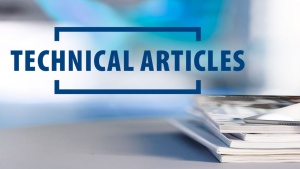
Slewing bearings, also known as slewing rings or turntable bearings, are critical components in a wide range of industrial applications. From cranes and wind turbines to excavators and radar systems, slewing bearings enable rotational movement while supporting axial, radial, and moment loads. Choosing the right type of slewing bearing can significantly impact the performance, durability, and efficiency of your equipment.1. Single-Row Ball Slewing BearingThis is the most commonly used slewing bearing type. It consists of a single row of steel balls and features a compact design with light weight. Single-row ball slewing bearings can accommodate axial, radial, and tilting moment loads, making them suitable for light to moderate duty applications such as small cranes, solar trackers, and packaging equipment.Advantages: Simple structure, cost-effective, easy to installApplications: Construction machinery, transport systems, food processing equipment2. Double-Row Ball Slewing BearingWith two rows of balls, this bearing type offers greater load-carrying capacity, especially for axial loads. It is ideal for applications where higher precision and stability are required. The double-row configuration also reduces internal clearance, resulting in better positioning accuracy.Advantages: Higher load capacity, improved stabilityApplications: Lifting platforms, industrial robots, wind energy systems3. Three-Row Roller Slewing BearingThis design separates axial and radial loads into three raceways, each row carrying a different type of load. Three-row roller slewing bearings provide the highest load capacity and rigidity among all types. Due to their size and complexity, they are typically used in heavy-duty applications.Advantages: Maximum load capacity, excellent stiffnessApplications: Large cranes, mining equipment, offshore platforms4. Crossed Roller Slewing BearingCrossed roller bearings use cylindrical rollers arranged at right angles to one another, allowing them to handle high loads in all directions with great precision. They are especially suitable for applications requiring high rotational accuracy and rigidity.Advantages: High precision, compact designApplications: Machine tools, radar systems, medical equipmentHow to Choose the Right Slewing BearingWhen selecting a slewing bearing, consider the following factors:Load type and magnitude (axial, radial, moment)Rotational speed and precision requirementsOperating environment and temperatureInstallation space and weight constraintsWorking with a reliable slewing bearing manufacturer can help ensure that you choose the right product tailored to your specific application.ConclusionUnderstanding the different types of slewing bearings and their respective advantages is essential for engineers and equipment manufacturers. Whether you're designing a lightweight solar tracker or a heavy-duty crane, selecting the right slewing ring bearing can make all the difference in performance and longevity.For more information about slewing bearings or to request a quote, feel free to contact our technical team.
2025-06-16
More >>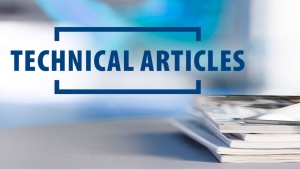
Agricultural machinery bearings are important basic components of agricultural machinery equipment. Their accuracy, performance, life and reliability play a decisive role in the accuracy, performance, life and reliability of the main machine. Among agricultural machinery products, bearings are high-precision products that require not only the comprehensive support of theories from many disciplines such as mathematics and physics, but also the services of many disciplines such as material science, heat treatment technology, precision machining and measurement technology, numerical control technology, effective numerical methods, and powerful computer technology. So what types of bearings are used in the various types of agricultural machinery we commonly use?Crusher: 6205RS, 6206RS, 6207RS, 6208RS, 6309RS.Rice mill: 1206, 1207, 1308, 1310, 1312, 1213, 1217.Corn thresher: 6201RS, 6203RS, 1203, 1204, 1205, 6205RS, 6206RS, 6305RS, 6307RS, 6308RS, UCP205, UCP206, UCP207.Wheat planter: Hexagon 6204RS, Square eye 6205RS.Planter: 6806-2RS, 6807-2RS.Corn planter: 6004RS, 6204RS.Grain storage conveyor: 6203RS, 6204RS, 6205RS, 6207RS, 6208RS, 6307RS, 6308RS.Warp reducer: 7207 (30207), 7208 (30208).Well machine gearbox: 42211, 42215, 42304, 42306, 42310, 42312.If you need bearings for agricultural machinery, please feel free to contact us.
2025-06-09
More >>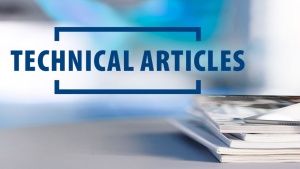
When it comes to selecting the right bearing for applications requiring high load capacity, compact design, and smooth operation, double row deep groove ball bearings offer a highly efficient solution. These bearings are an extension of the widely used single row deep groove ball bearings, with two rows of rolling elements instead of one, providing enhanced performance and durability in demanding industrial environments.What Are Double Row Deep Groove Ball Bearings?Double row deep groove ball bearings are engineered to support both radial and axial loads in both directions. The two rows of balls increase the load-carrying capacity significantly without increasing the bearing’s outer dimensions excessively. This makes them ideal for applications where space is limited but performance cannot be compromised.Key Features and Advantages High Load Capacity:The additional row of balls allows for a greater distribution of load, making these bearings suitable for heavier-duty applications compared to their single row counterparts. Compact Design:Despite the increased load capacity, double row deep groove ball bearings maintain a relatively compact footprint, which is crucial for space-constrained applications. Excellent Running Accuracy:These bearings are manufactured with precise tolerances, ensuring smooth operation and reduced vibration, which is essential for high-speed applications. Versatility:They are available in both open and sealed designs, providing flexibility depending on the operating environment and lubrication requirements. Low Maintenance Requirements:Many sealed versions come pre-lubricated, reducing the need for frequent maintenance, a key advantage in automated or hard-to-access machinery. Common ApplicationsDouble row deep groove ball bearings are widely used in: Electric motors Gearboxes Agricultural machinery Fans and blowers Conveyors Automotive components Their ability to handle combined loads and operate at relatively high speeds makes them a go-to choice for engineers across various industries.Choosing the Right BearingWhen selecting a deep groove ball bearing, it's essential to consider factors such as load type, speed, temperature, and environmental conditions. Consulting with bearing manufacturers or technical experts can help ensure optimal performance and extended service life. Double row deep groove ball bearings are a reliable and efficient choice for many industrial applications. Their unique combination of compact design and high load capacity makes them indispensable in modern engineering. Whether you're upgrading existing equipment or designing new machinery, understanding the capabilities of these bearings can help you make informed decisions that improve performance and reduce downtime.
2025-06-03
More >>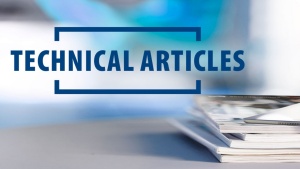
Radial clearance out of toleranceCause analysis1. The value of the ring size sorting is inaccurate due to accidental errors in sorting, measurement system errors, etc.2. When measuring radial clearance, the steel balls are unevenly divided, the measuring position is inaccurate, and the hand thrust is inconsistent.3. The bearing parts are not clean enough and contain dirt and dirty oil.4. The cage is riveted too tightly and deformed, resulting in the center of the steel ball not being distributed on the center circle of rotation of the bearing rolling element.Solution1. Find the pattern and correct the sorting size or clearance.2. Standardize the clearance measurement operation.3. Demagnetize and clean the bearing again.4. Replace the cage and standardize the assembly operation.5. Replace the cage and strengthen the inspection.Rotational accuracy out of toleranceCause analysis1. During the grinding process of the ring, the parallelism of the center plane of the raceway to the reference end face is out of tolerance.2. The reference surfaces of the inner and outer raceways are damaged.3. The surfaces of the inner and outer raceways are damaged or dirty.4. The diameter variation of the inner and outer raceways is large, and the groove shape is out of tolerance or deformed.5. When the last steel ball is installed, the outer ring is deformed and the steel ball surface is scratched.6. There may be mixed balls installed, and the diameter variation of the steel ball batch is too large.7. The cage is deformed.8. The thickness variation Ki or Ke of the inner diameter or outer diameter surface of the raceway of a single ring exceeds the tolerance, resulting in Kia or Kea exceeding the tolerance.9. When using a spindle for measurement, the spindle's rotation accuracy or the center hole is worn, the surface is scratched, there is dirt inside, and the top surface is worn.Solution:1. Strictly inspect and prevent such parts from entering the assembly process.2. Find out the cause of the damage and eliminate it.3. Eliminate the factors that cause the raceway damage and re-demagnetize and clean.4. Prevent such parts from entering the assembly process.5. Adjust equipment parameters and improve assembly technology.6. Strengthen inspection and standardize operation.7. Establish specifications to reduce deformation.8. Strictly inspect and prevent such parts from entering the assembly process.9. Eliminate various influencing factors and grind the spindle and top.Dimensional accuracy exceeds toleranceCause analysis1. The previous process missed inspection.2. The dimensional stability of precision bearing rings is poor.3. The instrument has large error or incorrect adjustment, and the force applied during measurement is uneven.4. The temperature difference in the assembly inspection environment is large, and the standard parts and rings are not kept at a constant temperature enough.5. The standard parts used in grinding and finished product inspection are not suitable.Solutions1. Strictly inspect to prevent such incidents from happening.2. Summarize experience and improve process.3. Improve detection methods and skills.4. Ensure constant temperature time and improve working environment.5. Use calibration standard parts and instruments to standardize detection procedures.The dust cover and sealing ring are loose or leaking grease seriouslyCause analysis1. The tooth groove size is too large, and the dust cover or sealing ring cannot be tightened.2. The dust cover and sealing ring are not processed properly.3. The grease injected into the bearing may have too low viscosity or other items may be unqualified.4. Too much grease injected.Solutions1. Strengthen inspection and improve tooling.2. Unqualified parts are prohibited from entering the assembly room.3. Strengthen inspection and add qualified grease. 4. Add grease according to the specified requirements.
2025-05-26
More >>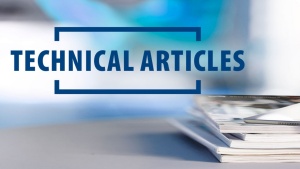
Deep groove ball bearings are among the most commonly used bearing types in the world due to their versatility, simplicity, and ability to handle both radial and limited axial loads. However, one question that often arises among engineers and maintenance professionals is: Do deep groove ball bearings suffer from alignment issues? The short answer is yes, but the implications and solutions are worth a closer look.Understanding Misalignment in Deep Groove Ball BearingsMisalignment occurs when the inner and outer rings of the bearing are not properly aligned with each other. This can happen due to improper installation, shaft deflection, or housing inaccuracies. While deep groove ball bearings are designed to accommodate slight misalignments, they are not as tolerant as self-aligning ball bearings or spherical roller bearings. Deep groove ball bearings are not suitable for applications where alignment errors are expected, as they are not designed to compensate for angular misalignment. This means, in practical terms, even a small degree of misalignment can lead to increased stress on the bearing raceways and balls, resulting in premature wear, higher operating temperatures, and even bearing failure.Causes of MisalignmentSome of the most common causes of misalignment in deep groove ball bearings include: Improper mounting or installation Shaft deflection under load Misaligned bearing housings Thermal expansion differences between components In high-speed or high-precision applications, even minimal misalignment can significantly shorten the lifespan of the bearing.How Misalignment Affects Bearing PerformanceWhen a deep groove ball bearing is misaligned, the load is not evenly distributed across the rolling elements. This can cause: Uneven wear on the raceways Increased vibration and noise Higher friction and heat generation Reduced bearing life In some cases, the cage may also become damaged due to skewed movement of the balls within the races.Solutions to Address Alignment IssuesEven though deep groove ball bearings have limited capacity to accommodate misalignment, there are several strategies engineers can adopt to minimize risks: Precision Installation: Using proper tools and techniques during installation helps ensure the bearing is seated correctly. Avoid forcing the bearing into position. Alignment Tools: Use laser alignment tools or dial gauges to confirm shaft and housing alignment before mounting. Design Considerations: If alignment errors are expected, consider using self-aligning ball bearings or spherical bearings instead. Monitoring and Maintenance: Regular inspections can help detect early signs of misalignment, such as unusual noise or vibration. Use of Floating Bearings: In some assemblies, allowing one bearing to float axially can reduce the stress caused by thermal expansion and misalignment. While deep groove ball bearings are robust and reliable, they are sensitive to misalignment. Ensuring proper alignment during installation and operation is critical to maximizing bearing performance and service life. For applications where alignment cannot be guaranteed, it may be better to choose a bearing type specifically designed to handle such conditions.
2025-05-19
More >>
Deep groove ball bearings are among the most common types of rolling-element bearings, widely used in a variety of industries due to their versatility, reliability, and cost-effectiveness. Whether you're working in automotive manufacturing, electric motors, or general industrial machinery, understanding the different types of deep groove ball bearings can help optimize performance and reduce maintenance costs.What Is a Deep Groove Ball Bearing?A deep groove ball bearing is a type of rolling bearing that features deep raceway grooves on both the inner and outer rings. These grooves enable the bearing to carry radial loads and a limited amount of axial loads in both directions. Known for their low friction and high-speed capabilities, deep groove ball bearings are ideal for high-precision and high-efficiency applications.Common Types of Deep Groove Ball BearingsDeep groove ball bearings come in a variety of types and configurations to suit different operational needs. Below are the most commonly used types:1. Single Row Deep Groove Ball BearingsThis is the most widely used type. It is suitable for high-speed applications and supports both radial and axial loads. These are typically used in electric motors, gearboxes, and household appliances.Key Features: Simple design High-speed capability Low maintenance 2. Double Row Deep Groove Ball BearingsThese bearings are similar to two single row bearings mounted side by side. They can support higher radial loads and are often used when space is limited.Applications: Agricultural machinery Pumps Compressors 3. Sealed and Shielded BearingsTo protect against contamination and retain lubrication, deep groove ball bearings are available with shields (metal covers) or seals (rubber or synthetic). Sealed bearings are especially useful in dusty or moist environments.Benefits: Extended bearing life Improved performance in harsh conditions 4. Miniature Deep Groove Ball BearingsThese are small-sized bearings used in compact applications such as medical instruments, robotics, and small electric motors.Characteristics: Lightweight High precision Quiet operation 5. Ceramic Hybrid Deep Groove Ball BearingsThese incorporate ceramic balls with steel races. They offer higher speed capabilities and excellent resistance to wear and corrosion.Advantages: Lower thermal expansion Longer service life Reduced lubrication requirements How to Choose the Right Deep Groove Ball BearingWhen selecting a deep groove ball bearing for your application, consider the following factors: Load requirements: Determine both radial and axial load capacities. Speed ratings: Ensure the bearing can operate at the desired RPM. Operating environment: Consider exposure to dust, moisture, or chemicals. Size constraints: Choose the right dimensions for your machinery. Lubrication and sealing: Decide between open, shielded, or sealed bearings based on maintenance possibilities. Deep groove ball bearings are essential components in countless mechanical systems. Understanding the different types and their specific advantages can help engineers, technicians, and procurement professionals make informed decisions. By selecting the right bearing type for your application, you'll enhance equipment efficiency, reduce downtime, and extend operational life. For technical support or help selecting the right deep groove ball bearing, feel free to contact our engineering team. We supply a wide range of bearing solutions tailored to your industry needs.
2025-05-13
More >>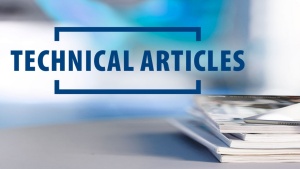
Stainless steel deep groove ball bearings are an essential component in many industrial and mechanical applications. Known for their durability, corrosion resistance, and versatility, these bearings are particularly suitable for environments where traditional steel bearings may struggle. This article provides an in-depth look at stainless steel deep groove ball bearings, their benefits, applications, and key considerations for selection.What Are Stainless Steel Deep Groove Ball Bearings?Stainless steel deep groove ball bearings are a type of rolling-element bearing made from stainless steel materials such as AISI 440C or AISI 304. These bearings are designed to handle both radial and axial loads, making them highly versatile for various applications.Unlike standard steel bearings, stainless steel bearings offer enhanced resistance to moisture, chemicals, and extreme temperatures, making them the ideal choice for challenging environments.Key Features and Benefits of Stainless Steel Deep Groove Ball Bearings Corrosion Resistance:Stainless steel bearings are highly resistant to rust and corrosion, making them suitable for applications in humid, wet, or chemically aggressive environments. Durability in Extreme Conditions:These bearings can operate effectively in a wide range of temperatures, from cryogenic conditions to high-heat environments, without deforming or losing performance. Low Maintenance Requirements:Stainless steel bearings require less frequent maintenance and lubrication compared to standard steel bearings, reducing downtime and operational costs. High Precision and Smooth Operation:Deep groove ball bearings are designed for smooth rotation, reducing friction and vibration, which ensures quiet and efficient operation. Longer Service Life:The combination of corrosion resistance and wear resistance gives stainless steel bearings a longer lifespan, even in demanding conditions. Applications of Stainless Steel Deep Groove Ball BearingsDue to their unique properties, stainless steel deep groove ball bearings are widely used in industries where high performance and durability are required. Common applications include: Food and Beverage Processing:These bearings are ideal for food-grade environments where cleanliness and resistance to moisture and cleaning agents are essential. Medical Equipment:Stainless steel bearings are often used in medical devices such as diagnostic machinery and surgical tools due to their non-corrosive properties and high precision. Marine Applications:In marine environments, where exposure to saltwater can cause rust, stainless steel bearings provide long-lasting performance. Chemical Processing:Stainless steel bearings resist chemical corrosion, making them ideal for applications in chemical plants and laboratories. Outdoor Equipment:Products like agricultural machinery and outdoor motors benefit from the corrosion resistance and durability of stainless steel bearings, especially when exposed to rain and dust. Cryogenic Applications:These bearings can operate in extremely low temperatures, making them suitable for refrigeration systems and scientific equipment. Technical Considerations When Selecting Stainless Steel Deep Groove Ball BearingsWhen choosing stainless steel deep groove ball bearings, it’s critical to consider the following factors to ensure optimal performance: Material Grade: AISI 440C: Offers excellent hardness, wear resistance, and corrosion resistance, suitable for most industrial applications. AISI 304: Provides high corrosion resistance but lower hardness, ideal for lighter-duty applications. Load Requirements:Assess the radial and axial loads the bearing will need to handle. If the application involves high axial loads, consider bearings with a larger contact angle. Operating Speed:Stainless steel bearings can operate at high speeds, but ensure that the chosen lubrication and seal type are appropriate for the speed requirements. Seals and Shields: Rubber Seals (2RS): Provide better protection against moisture and contaminants, ideal for wet or dirty environments. Metal Shields (ZZ): Allow for higher speeds with minimal friction, suitable for clean environments. Lubrication:Use food-grade or chemical-resistant lubricants for specialized applications. Proper lubrication is crucial to minimize friction and heat generation. Temperature Range:Verify that the selected bearing can withstand the operating temperature of your application. For high-temperature environments, consider bearings with specialized grease or coatings. Advantages of Using Stainless Steel Bearings Over Standard Steel Bearings Moisture Tolerance: Stainless steel bearings outperform standard steel bearings in humid and wet environments, preventing rust and failure. Hygiene Compliance: Stainless steel is suitable for industries with strict hygiene requirements, such as food processing and pharmaceuticals. Reduced Downtime: Longer service life and lower maintenance needs translate to reduced downtime and increased productivity. Versatility: Stainless steel bearings can be used in a wide range of applications, from high-speed machinery to low-temperature environments. Stainless steel deep groove ball bearings offer a perfect balance of durability, corrosion resistance, and versatility for demanding industrial applications. Whether you’re working in food processing, marine environments, or chemical plants, these bearings provide reliable performance and a longer service life compared to traditional steel bearings.When selecting stainless steel deep groove ball bearings, consider factors such as material grade, load requirements, and operating conditions to ensure the best fit for your application. If you’re looking for high-quality stainless steel bearings or need guidance on selecting the right bearings for your needs, don’t hesitate to contact us. Our experts are ready to help you find the ideal solution for your business.
2025-05-07
More >>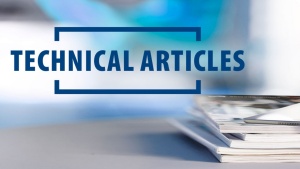
Deep groove ball bearings are widely used in various industries due to their versatility, reliability, and simplicity. One of the critical aspects that determines their performance in specific applications is the type of seal or shield used to protect the bearing from contaminants. The two most common options are rubber seals (often referred to as contact seals) and metal shields (non-contact shields).In this article, we will explore the key differences between rubber seals and metal shields, their advantages, and the types of applications where each is best suited.What Are Rubber Seals and Metal Shields?Rubber seals and metal shields are designed to protect the internal components of a deep groove ball bearing by preventing the entry of contaminants such as dust, dirt, and moisture. They also help retain the lubricant inside the bearing, ensuring smooth operation and a longer service life. Rubber Seals (Contact Seals):Rubber seals are made from synthetic rubber materials, such as nitrile or fluororubber, and are attached to the bearing. These seals make contact with the inner ring of the bearing, providing a tight seal that effectively blocks contaminants. Metal Shields (Non-Contact Shields):Metal shields are thin steel plates that are fixed to the outer ring of the bearing and extend close to the inner ring without making direct contact. This creates a small gap, allowing the bearing to operate at higher speeds while still providing basic protection. Key Differences Between Rubber Seals and Metal Shields Protection Against Contaminants: Rubber Seals: Provide superior sealing performance by tightly blocking out contaminants such as dust, moisture, and other particles. They are ideal for harsh environments where exposure to dirt and debris is common. Metal Shields: Offer moderate protection by preventing larger particles from entering the bearing. However, they are less effective against fine dust or liquids. Speed Capability: Rubber Seals: Due to the contact between the seal and the inner ring, rubber-sealed bearings generate more friction, which can limit their maximum operating speed. Metal Shields: Allow for higher speeds as there is no direct contact between the shield and the inner ring, resulting in less friction. Friction and Heat Generation: Rubber Seals: The contact between the seal and the bearing ring generates friction, which can lead to increased heat and energy consumption. Metal Shields: Produce minimal friction, making them more suitable for applications where high-speed performance and low heat generation are critical. Lubrication Retention: Rubber Seals: Provide better retention of lubricant within the bearing, which is essential for applications where relubrication is difficult or infrequent. Metal Shields: Offer less effective lubrication retention, making them more suitable for applications where regular maintenance and lubrication are possible. Durability: Rubber Seals: May degrade over time when exposed to extreme temperatures or certain chemicals. However, advanced rubber materials like fluororubber can withstand more demanding conditions. Metal Shields: Are more resistant to wear and suitable for environments with high temperatures or exposure to corrosive substances. Applications of Rubber Seals and Metal Shields Rubber Seals Applications:Rubber-sealed deep groove ball bearings are commonly used in environments where contamination is a significant concern, such as: Agricultural equipment exposed to dirt and moisture. Food processing machinery requiring protection against liquid contamination. Automotive components like wheel hubs and electric motors. Outdoor applications where environmental exposure is unavoidable. Metal Shields Applications:Metal-shielded deep groove ball bearings are ideal for high-speed applications and clean environments, such as: Industrial machinery operating at high speeds. Electric motors and generators with regular maintenance schedules. HVAC systems where dust exposure is minimal. Applications where heat generation needs to be minimized. Choosing the Right Option for Your ApplicationWhen deciding between rubber seals and metal shields for deep groove ball bearings, consider the following factors: Operating Environment: If the bearing is exposed to dust, moisture, or harsh chemicals, rubber seals are the better choice. For clean, high-speed environments, metal shields are more suitable. Speed Requirements: For high-speed applications, opt for metal-shielded bearings to minimize friction and heat. Lubrication Needs: If relubrication is difficult or infrequent, rubber seals will better retain the lubricant. Temperature and Chemical Exposure: For high-temperature or chemically aggressive environments, metal shields or high-performance rubber seals should be used. The choice between rubber seals and metal shields in deep groove ball bearings depends on the specific requirements of your application. Rubber seals offer superior protection and lubrication retention, making them suitable for challenging environments. On the other hand, metal shields excel in high-speed applications and clean conditions.By understanding the differences between these two options, you can select the most suitable bearing for your needs, ensuring optimal performance and longevity. If you have questions about choosing the right deep groove ball bearings for your application, feel free to contact our team. We’re here to help you find the best solution for your requirements.
2025-04-28
More >>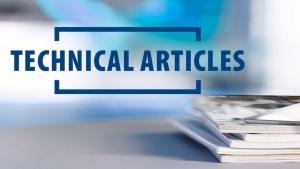
In the ever-evolving motorcycle industry, performance and reliability are key factors that determine the success of every component. Among the most essential yet often overlooked parts are deep groove ball bearings. These compact yet powerful components play a critical role in ensuring smooth operation, high-speed performance, and long-term durability in motorcycles of all types.What Are Deep Groove Ball Bearings?Deep groove ball bearings are the most commonly used type of rolling bearings. They feature deep raceway grooves in which the balls move, allowing them to support both radial and axial loads. Their versatility, low friction, and ability to operate at high speeds make them ideal for a wide range of motorcycle applications.Key Applications in Motorcycles Engine and Transmission SystemsDeep groove ball bearings are widely used in motorcycle engines and gearboxes. Their high-speed capability ensures smooth rotation of the crankshaft and gearbox shafts, reducing vibration and heat generation. Wheels and HubsWheel hubs rely heavily on deep groove ball bearings for stability and efficiency. These bearings provide consistent performance under heavy loads and high speeds, contributing to better handling and safety. Clutch and Brake SystemsIn clutch mechanisms and braking systems, these bearings help maintain smooth engagement and response. Their compact design allows for easy integration without adding excess weight. Electric MotorcyclesWith the rise of electric motorcycles, the demand for high-precision, low-noise bearings has grown. Deep groove ball bearings meet these needs by offering silent operation and extended service life. Key Benefits High-Speed Performance: Perfect for engines and wheels, deep groove ball bearings can operate efficiently at high RPMs. Low Maintenance: With proper lubrication, these bearings require minimal maintenance, reducing overall service costs. Long Lifespan: High-quality materials and precision engineering contribute to longer operational life. Cost-Effective: Their simple design and widespread availability make them an economical choice for manufacturers and service providers alike. When sourcing motorcycle bearings, it’s crucial to partner with a reliable bearing supplier who understands the industry’s technical requirements. Factors such as material quality, tolerance levels, and sealing options can significantly impact performance. We offer a wide range of deep groove ball bearings designed specifically for the demands of the motorcycle industry. With years of experience and a commitment to quality, we ensure that every product meets international standards and delivers exceptional value.
2025-04-22
More >>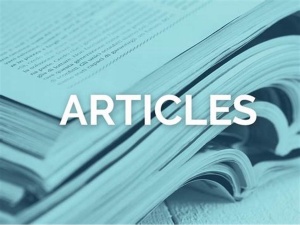
Deep groove ball bearings are one of the most versatile and widely used types of bearings in industrial and mechanical applications. Known for their ability to accommodate radial and axial loads, they are commonly found in electric motors, pumps, gearboxes, and other machinery. One critical factor that often influences their performance is their limiting speed. Understanding what the limiting speed is and how it affects the functionality of deep groove ball bearings can help engineers optimize their machinery for maximum efficiency and longevity.What is the Limiting Speed of a Deep Groove Ball Bearing?The limiting speed of a deep groove ball bearing refers to the maximum rotational speed the bearing can achieve without exceeding its thermal or mechanical limits. Operating a bearing beyond its limiting speed can lead to overheating, excessive wear, and even failure.The limiting speed is influenced by various factors, including: Bearing Size and Type: Smaller bearings generally have higher limiting speeds compared to larger ones. Lubrication: Adequate and effective lubrication is essential to reduce friction and heat generation at high speeds. Load Conditions: Bearings experiencing lighter loads can typically run at higher speeds than those under heavy loads. Material and Design: High-quality materials and advanced bearing designs can enhance speed capabilities. How is the Limiting Speed Determined?Manufacturers determine the limiting speed of deep groove ball bearings based on standardized testing under specific conditions. The value is often provided in the bearing’s technical datasheet and is typically expressed in revolutions per minute (RPM).It’s important to note that the listed limiting speed is a guideline for safe operation under normal conditions. If your application involves extreme temperatures, heavy loads, or high vibration, additional adjustments may be necessary.Factors Affecting the Limiting Speed Lubrication Type: Bearings lubricated with grease generally have lower limiting speeds than those lubricated with oil. High-speed applications often require specialized lubricants with low viscosity to minimize friction. Operating Temperature: Excessive heat can degrade lubrication and reduce bearing performance. Efficient heat dissipation is essential to maintain the bearing’s functionality at high speeds. Precision Grade: Bearings with higher precision grades (e.g., P5 or P4) have better speed capabilities due to their tighter tolerances. Bearing Clearance: Proper internal clearance ensures smooth operation at high speeds. Bearings with too little or too much clearance may experience performance issues. How to Optimize Deep Groove Ball Bearings for High SpeedsTo safely operate your deep groove ball bearings near their limiting speed, consider the following best practices: Use High-Performance Lubricants: Choose lubricants specifically designed for high-speed applications. Maintain Proper Alignment: Misalignment can increase friction and heat, reducing the effective speed limit. Monitor Operating Conditions: Regularly monitor temperature, vibration, and lubrication levels to ensure the bearing is performing within acceptable limits. Consider Hybrid Bearings: Hybrid deep groove ball bearings, which combine steel rings with ceramic balls, can achieve higher speeds due to their lighter weight and reduced friction. Why Understanding Limiting Speed MattersOperating a bearing beyond its limiting speed can lead to: Overheating and thermal damage. Increased wear and shortened bearing life. Higher energy consumption and reduced efficiency. By understanding the limiting speed and how it applies to your specific application, you can ensure optimal performance, reduce downtime, and extend the lifespan of your bearings.The limiting speed of deep groove ball bearings is a vital consideration for any high-speed application. By understanding the factors that influence this parameter and implementing best practices for bearing selection, lubrication, and maintenance, you can maximize the efficiency and longevity of your machinery. If you’re looking for high-quality deep groove ball bearings or need technical advice on selecting the right bearings for your high-speed applications, feel free to reach out to us. Our team of experts is here to help you find the best solutions for your needs.
2025-04-16
More >>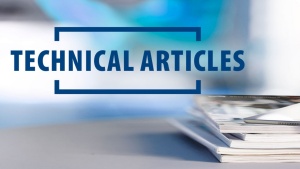
Deep groove ball bearings are among the most widely used bearing types in various industries due to their versatility, durability, and ability to handle both radial and axial loads. However, one often overlooked yet critical aspect of their design is the sealing and dust protection system. A well-designed sealing mechanism not only improves performance but also significantly extends the bearing's service life.Why Sealing and Dust Protection MatterIn real applications, bearings are exposed to a range of contaminants such as dust, moisture, and chemicals. Without proper sealing, these external particles can enter the bearing and cause premature wear, corrosion, or even failure. At the same time, seals help retain lubricants inside the bearing, ensuring smooth operation.Common Types of Bearing Seals and ShieldsDeep groove ball bearings typically come with one of the following protection designs:1. Rubber Seals (Contact Seals - RS/2RS): These are made from synthetic rubber bonded to a steel insert. They provide excellent protection against dust and water ingress and are ideal for harsh environments. The contact between the seal and the inner ring also helps retain lubricants.2. Non-contact Rubber Seals (RZ/2RZ): These seals offer lower friction compared to contact seals while still providing a good barrier against contaminants. They are suitable for high-speed applications where minimal friction is essential.3. Metal Shields (Z/2Z): Metal shields are not in contact with the inner ring, which reduces friction and heat generation. While they offer less protection against fine dust or liquids, they are effective in cleaner environments and high-speed operations.Choosing the Right Seal DesignThe selection of a sealing design depends on several factors:- Operating environment: Dusty, humid, or chemically aggressive environments require better sealing.- Speed and friction requirements: High-speed applications may benefit from non-contact seals or shields to reduce heat and energy loss.- Maintenance strategy: Sealed bearings are often used in maintenance-free applications, whereas shielded bearings might require periodic relubrication.Balancing Protection and PerformanceWhile seals provide better protection, they also introduce friction, which can slightly reduce efficiency and generate heat. Therefore, it's important to balance sealing performance with operational requirements. Always consult application engineers when selecting the most suitable deep groove ball bearing for your application.Understanding the sealing and dust protection design of deep groove ball bearings is essential for achieving optimum performance and reliability. If you're looking for high-quality deep groove ball bearings with reliable sealing solutions, feel free to contact our team for more information and product recommendations.
2025-04-09
More >>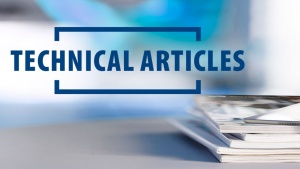
When selecting or maintaining deep groove ball bearings, one component that is often overlooked—but critically important—is the bearing cage. Also known as a retainer, the cage plays a vital role in ensuring the balls are evenly spaced and guided within the raceways. This article explores the importance of bearing cages, the types available, and how each influences the performance of deep groove ball bearings.What Is a Bearing Cage?A bearing cage is a mechanical component that separates and maintains the relative spacing of the rolling elements (balls) in a deep groove ball bearing. It helps distribute the balls evenly around the raceway and reduces friction and wear between the balls themselves.Without a properly designed cage, the bearing may suffer from increased vibration, noise, or even premature failure.Common Types of Bearing CagesSeveral cage materials are commonly used in deep groove ball bearings, each offering different benefits depending on the application:1. Steel Cage Material: Pressed or machined carbon steel or stainless steel. Advantages: High strength, good for high-speed and high-load applications. Typical Uses: Electric motors, automotive, industrial machinery. Keywords: steel cage, steel bearing cage 2. Brass Cage Material: Machined brass or bronze. Advantages: Excellent resistance to wear and corrosion; ideal for heavy-duty environments. Typical Uses: Gearboxes, pumps, and marine applications. Keywords: brass cage, brass bearing cage 3. Nylon Cage (Polyamide Cage) Material: Polyamide 66 reinforced with glass fiber. Advantages: Lightweight, low noise, cost-effective. Limitations: Not suitable for high-temperature applications. Typical Uses: Household appliances, small motors, fans. Keywords: nylon cage, polyamide cage How Does the Cage Design Affect Bearing Performance?The design and material of the cage directly influence: Speed capability: Steel and brass cages usually support higher speeds. Noise and vibration: Nylon cages reduce noise, suitable for low-noise environments. Lubrication retention: Some cages help retain grease better. Temperature resistance: Metal cages withstand higher operating temperatures. Choosing the right bearing cage is essential for ensuring the longevity and reliability of your deep groove ball bearing.While often overlooked, the cage in a deep groove ball bearing is a crucial element that can significantly affect performance, durability, and application suitability. Whether you need a steel cage for high-speed machinery, a brass cage for harsh environments, or a nylon cage for quiet operation, understanding the differences will help you make a better-informed decision.
2025-04-02
More >>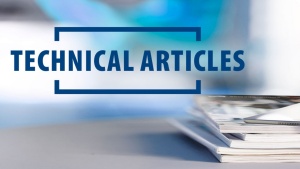
Deep groove ball bearings are widely used in various industries due to their high-speed capability, low friction, and ability to handle both radial and axial loads. However, when exposed to harsh environments—such as high humidity, chemicals, or saltwater—these bearings are at risk of corrosion, which can significantly reduce their lifespan and performance.To address this issue, different corrosion-resistant treatment technologies have been developed to enhance the durability of deep groove ball bearings. In this article, we will explore some of the most effective methods used in the industry today.1. Stainless Steel Bearings (AISI 440C & AISI 316)One of the most common solutions for corrosion resistance is using stainless steel deep groove ball bearings. Two popular stainless steel grades used in bearings are: ◆AISI 440C Stainless Steel: This material offers excellent hardness and wear resistance while providing moderate corrosion resistance. It is commonly used in food processing, medical equipment, and marine applications. ◆AISI 316 Stainless Steel: Known for its superior corrosion resistance, AISI 316 is ideal for applications exposed to seawater, acids, and aggressive chemicals. However, it has lower hardness compared to 440C, making it suitable for light to medium-load applications. 2. Anti-Corrosion CoatingsApplying specialized coatings on bearing surfaces significantly improves their resistance to rust and corrosion. Some of the most effective coatings include: ◆Zinc Coating (Zinc Plating): A cost-effective option that provides moderate corrosion protection, commonly used in general industrial applications. ◆Nickel Coating: Nickel-plated deep groove ball bearings offer enhanced resistance to moisture and chemicals, making them ideal for humid and mildly corrosive environments. ◆Teflon (PTFE) Coating: Teflon-coated bearings reduce friction while offering excellent chemical resistance, often used in pharmaceutical and food-processing industries. ◆Black Oxide Coating: This treatment improves corrosion resistance and reduces friction, extending the bearing’s operational life in challenging environments. 3. Ceramic Hybrid BearingsFor applications requiring extreme corrosion resistance, ceramic hybrid bearings are an excellent choice. These bearings feature ceramic rolling elements (such as silicon nitride - Si3N4) combined with stainless steel or coated steel raceways. Advantages include: ◆Superior corrosion resistance compared to standard steel bearings ◆Lower friction and reduced heat generation, enhancing efficiency ◆Non-magnetic and electrically insulating properties, beneficial for specialized applications in medical industries While ceramic hybrid bearings are more expensive, their extended service life and improved performance make them a worthwhile investment for critical applications.4. Polymer & Plastic BearingsFor applications where metal corrosion is a major concern, polymer or plastic deep groove ball bearings provide a viable alternative. These bearings are made from materials such as PEEK (Polyether Ether Ketone), PTFE, or UHMWPE, offering: ◆Excellent resistance to chemicals and moisture ◆Lightweight and self-lubricating properties ◆Non-conductive and non-magnetic characteristics Although plastic bearings have lower load capacity compared to metal bearings, they are highly effective in environments where corrosion is a primary issue.Choosing the Right Corrosion-Resistant TreatmentWhen selecting the best corrosion-resistant deep groove ball bearing, consider the following factors: ◆Environmental Conditions: High humidity, salt exposure, and chemical presence require advanced coatings or stainless steel materials. ◆Load and Speed Requirements: Stainless steel bearings provide better load capacity, while hybrid or polymer bearings are suitable for specialized applications. ◆Cost vs. Performance: Ceramic hybrid bearings offer superior longevity but come at a higher price, while coated steel bearings provide a budget-friendly alternative. Corrosion is one of the biggest challenges for deep groove ball bearings, especially in demanding environments. By using stainless steel materials, specialized coatings, ceramic hybrids, or polymer alternatives, manufacturers can significantly extend bearing life and improve machine reliability. Selecting the right corrosion-resistant deep groove ball bearing ensures optimal performance, reduces maintenance costs, and enhances overall system efficiency. For industries operating in harsh conditions, investing in high-quality, corrosion-resistant bearings is essential to maintaining long-term operational success.
2025-03-25
More >>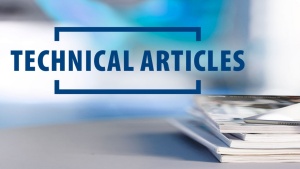
Deep groove ball bearings are among the most widely used bearing types, known for their versatility, durability, and high-speed performance. However, like all mechanical components, they are prone to failure due to operational and environmental factors. Understanding the common failure modes of deep groove ball bearings can help in early detection, preventing costly breakdowns and ensuring longer service life.Below, we explore the most frequent causes of deep groove ball bearing failure and how to effectively prevent them.1. Fatigue Failure (Spalling)What It Is:Fatigue failure, also known as spalling, occurs when repeated stress causes small cracks to form on the bearing surface. Over time, these cracks expand, leading to material flaking and surface deterioration.Causes: Excessive load or improper load distribution Poor lubrication leading to increased friction Misalignment or improper installation Contaminants in the lubricant Prevention Tips:✔ Ensure correct load capacity and avoid overloading.✔ Use high-quality lubricants and maintain proper lubrication schedules.✔ Check for shaft misalignment and correct improper mounting.✔ Install seals or shields to prevent contamination.2. Wear and AbrasionWhat It Is:Bearing wear is a gradual loss of material from the raceways and rolling elements due to continuous friction and surface contact. This can lead to reduced efficiency and premature failure.Causes: Insufficient or degraded lubrication Ingress of dust, dirt, or metal particles Frequent stop-start operations Prevention Tips:✔ Regularly inspect and replace lubricants as needed.✔ Use sealed or shielded bearings in dusty or contaminated environments.✔ Ensure proper alignment and avoid unnecessary friction.3. Corrosion and RustingWhat It Is:Corrosion occurs when moisture or chemicals attack the bearing surfaces, leading to rust formation and deterioration of bearing performance.Causes: Exposure to water, humidity, or aggressive chemicals Use of low-quality or contaminated lubricants Prolonged storage in damp conditions Prevention Tips:✔ Store bearings in dry, controlled environments.✔ Use corrosion-resistant coatings or stainless steel bearings in harsh conditions.✔ Apply anti-corrosion lubricants for added protection.4. Overheating and Thermal DamageWhat It Is:Excessive heat can cause the bearing material to soften, expand, or degrade, leading to reduced load capacity and increased wear.Causes: Insufficient or incorrect lubrication Excessive rotational speed beyond the bearing’s design limit Excessive load leading to increased friction Poor heat dissipation in the system Prevention Tips:✔ Use lubricants with the correct viscosity and temperature resistance.✔ Monitor operating conditions and avoid overloading.✔ Ensure the system has adequate cooling or heat dissipation.5. Cage Damage or FractureWhat It Is:The bearing cage holds the rolling elements in place, and if it becomes damaged or fractured, the bearing may fail prematurely.Causes: Shock loads or impact forces Improper installation causing uneven stress Lubrication failure leading to excessive friction Prevention Tips:✔ Avoid sudden impact loads during operation.✔ Follow correct installation procedures to prevent stress concentration.✔ Maintain proper lubrication to reduce stress on the cage.ConclusionUnderstanding and preventing deep groove ball bearing failures is essential for maintaining smooth operation, reducing downtime, and extending bearing lifespan. By identifying early warning signs and following proper maintenance practices, you can significantly improve the reliability of your machinery. We offer high-quality deep groove ball bearings designed for maximum durability and performance. Contact us today for expert advice on selecting the right bearing for your application!
2025-03-20
More >>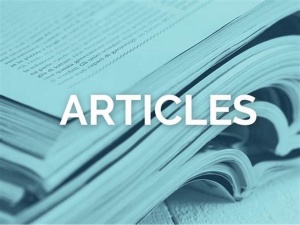
Deep groove ball bearings are widely used in various applications due to their versatility and reliability. One critical aspect of their performance is the clearance, which can significantly affect their functionality and lifespan. This article aims to provide essential technical information about the clearance of deep groove ball bearings, helping you make informed decisions in your applications.What is Bearing Clearance?Bearing clearance refers to the internal space between the rolling elements and the bearing races. In the case of deep groove ball bearings, this clearance is crucial for ensuring smooth operation, reducing friction, and accommodating thermal expansion. The appropriate clearance level can lead to optimal performance and extended service life.Types of Clearance Radial Clearance: This is the space between the balls and the inner and outer races when the bearing is unloaded. It is crucial for allowing the balls to move freely and preventing excessive friction. Axial Clearance: This refers to the space available for axial movement. While deep groove ball bearings can accommodate axial loads, the axial clearance must be managed to avoid undue stress on the bearing. Importance of Proper ClearanceEnsuring the correct clearance is vital for several reasons: Temperature Regulation: Bearings can heat up during operation, and adequate clearance allows for thermal expansion without causing damage. Load Distribution: Proper clearance helps distribute loads evenly across the rolling elements, reducing wear and prolonging bearing life. Vibration and Noise Reduction: Adequate clearance minimizes vibrations and operational noise, contributing to a smoother user experience. Choosing the Right ClearanceWhen selecting deep groove ball bearings, consider the following factors to determine the appropriate clearance: Application Requirements: Understand the load conditions and operational environment. High-speed applications may require tighter clearances, while heavy load applications may benefit from increased clearance. Temperature Variations: If your application experiences significant temperature fluctuations, opt for bearings with higher clearance to accommodate thermal expansion. Lubrication: The type of lubrication used can also influence the required clearance. Grease-lubricated bearings may necessitate different clearance levels compared to oil-lubricated ones. Conclusion Understanding the clearance of deep groove ball bearings is essential for ensuring optimal performance and longevity. By considering the type of clearance, its importance, and how to choose the right level, you can enhance the efficiency of your machinery and reduce maintenance costs.
2025-03-10
More >>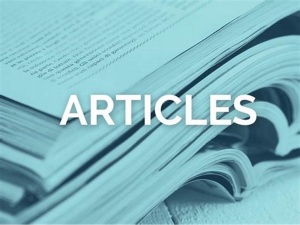
Deep groove ball bearings are among the most widely used bearing types in industrial and mechanical applications due to their versatility, durability, and ability to handle both radial and axial loads. One critical aspect of these bearings that often determines their suitability for specific applications is their tolerance class. This article will explore the importance of tolerance classes in deep groove ball bearings, explain the key standards, and provide practical insights to help you select the right bearing for your needs.What Are Tolerance Classes in Deep Groove Ball Bearings?Tolerance classes define the precision level of a bearing’s dimensions and running accuracy. These tolerances are standardized to ensure consistency and reliability across manufacturing processes. For deep groove ball bearings, tolerance classes are particularly important in applications where precision, speed, and minimal vibration are critical, such as in electric motors, machine tools, and medical equipment.The most widely recognized standard for bearing tolerances is set by the International Organization for Standardization (ISO) and the American Bearing Manufacturers Association (ABMA). These standards classify bearings into different tolerance grades based on their dimensional and rotational accuracy.Key Tolerance Classes for Deep Groove Ball BearingsNormal Tolerance (ISO Class 0 / ABMA Class ABEC 1)These bearings are suitable for general-purpose applications where high precision is not required.Commonly used in automotive components, conveyor systems, and household appliances.Cost-effective and widely available.P6 Tolerance (ISO Class 6 / ABMA Class ABEC 3)Offers higher precision than normal tolerance bearings.Ideal for applications requiring moderate precision, such as industrial pumps, gearboxes, and agricultural machinery.Provides better running accuracy and reduced vibration.P5 Tolerance (ISO Class 5 / ABMA Class ABEC 5)High-precision bearings designed for applications demanding tight tolerances.Used in machine tools, electric motors, and robotics.Ensures smooth operation at high speeds and under heavy loads.P4 Tolerance (ISO Class 4 / ABMA Class ABEC 7)Ultra-high precision bearings for critical applications.Commonly found in medical devices, and high-speed spindles.Delivers exceptional rotational accuracy and minimal noise.P2 Tolerance (ISO Class 2 / ABMA Class ABEC 9)The highest precision grade available.Used in extremely demanding applications, such as precision measuring instruments and advanced robotics.Offers unmatched accuracy and performance.Why Tolerance Class MattersSelecting the correct tolerance class for your deep groove ball bearings is crucial for optimizing performance and longevity. Here’s why:Precision: Higher tolerance classes ensure tighter dimensional and rotational accuracy, reducing vibration and noise.Speed: Precision bearings can operate at higher speeds without compromising performance.Load Capacity: Bearings with tighter tolerances distribute loads more evenly, reducing wear and tear.Application Suitability: Choosing the right tolerance class ensures the bearing meets the specific requirements of your application, whether it’s a low-speed conveyor or a high-speed spindle.How to Choose the Right Tolerance ClassWhen selecting a deep groove ball bearing, consider the following factors:Application Requirements: Determine the level of precision and speed needed for your application.Operating Conditions: Consider factors such as load, temperature, and lubrication.Cost vs. Performance: Higher tolerance classes are more expensive, so balance your budget with the required performance.Industry Standards: Ensure the bearing complies with relevant industry standards (e.g., ISO, ABMA).Applications of Deep Groove Ball Bearings by Tolerance ClassNormal Tolerance (ABEC 1): Automotive wheels, conveyor rollers, and household appliances.P6 Tolerance (ABEC 3): Industrial fans, pumps, and agricultural equipment.P5 Tolerance (ABEC 5): Machine tools, electric motors, and robotics.P4 Tolerance (ABEC 7): Medical devices, and high-speed spindles.P2 Tolerance (ABEC 9): Precision instruments and advanced scientific equipment.Understanding the tolerance classes of deep groove ball bearings is essential for selecting the right bearing for your application. Whether you need a cost-effective solution for general-purpose use or a high-precision bearing for critical operations, choosing the appropriate tolerance class ensures optimal performance and reliability.
2025-03-03
More >>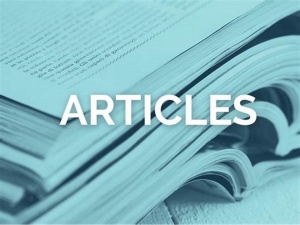
Deep groove ball bearings are widely used in various industries due to their high efficiency, durability, and ability to handle both radial and axial loads. However, one common issue that affects their performance is vibration. Excessive vibration can lead to premature bearing failure, increased noise levels, and reduced operational efficiency. In this article, we will explore the causes of deep groove ball bearing vibration, its effects, and practical ways to minimize it.What Causes Deep Groove Ball Bearing Vibration?Several factors contribute to vibration in deep groove ball bearings, including: Manufacturing Defects – Even slight imperfections in the raceway or rolling elements can create uneven motion, leading to vibration. Improper Lubrication – Inadequate or contaminated lubricant increases friction, causing irregular movement and vibration. Bearing Misalignment – Poor installation or misalignment with the shaft can result in unbalanced forces, which amplify vibrations. Wear and Fatigue – Over time, deep groove ball bearings experience wear due to continuous operation, leading to surface damage and increased vibration. External Loads and Impacts – Sudden shocks or excessive loads can cause deformation, affecting the smooth operation of the bearing. Effects of Bearing VibrationExcessive vibration in deep groove ball bearings can have several negative consequences: Increased Noise Levels – Vibrating bearings generate noise, which can be problematic in precision applications. Reduced Bearing Lifespan – Continuous vibration accelerates wear and can lead to premature bearing failure. Energy Loss and Efficiency Reduction – High vibration levels increase friction, leading to energy inefficiencies. Potential Equipment Damage – If not addressed, vibration can spread to other machine components, causing more extensive damage. How to Reduce Deep Groove Ball Bearing VibrationTo ensure smooth operation and longevity, it is essential to control and minimize vibration in deep groove ball bearings. Here are some effective measures: Use High-Quality Bearings – Investing in precision-manufactured deep groove ball bearings reduces the likelihood of defects and irregularities. Proper Lubrication – Regularly check and use the correct lubricant to minimize friction and wear. Ensure Correct Installation – Proper alignment and mounting techniques help prevent unnecessary stress and misalignment. Perform Routine Maintenance – Regular inspections and vibration analysis can help detect early signs of wear, allowing timely replacements. Monitor Load Conditions – Avoid excessive or sudden impact loads that could lead to bearing deformation and vibration. ConclusionDeep groove ball bearing vibration is a critical factor that affects performance, efficiency, and lifespan. By understanding the causes and implementing proper maintenance and installation techniques, you can significantly reduce vibration and enhance the reliability of your bearings. Regular monitoring and proactive measures will ensure smooth operation and extended service life. For more information on deep groove ball bearings and vibration analysis, feel free to contact us or explore our range of high-quality bearings designed for optimal performance.
2025-02-24
More >>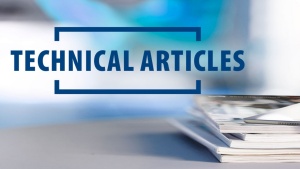
Deep groove ball bearings are among the most widely used bearings in industrial and mechanical applications due to their versatility, durability, and ability to handle both radial and axial loads. However, one critical factor that often determines their performance is precision. In this article, we’ll explore the importance of deep groove ball bearing precision, how it’s measured, and what you need to know to select the right bearings for your application.What is Bearing Precision?Bearing precision refers to the level of accuracy and consistency in the manufacturing of bearings. For deep groove ball bearings, precision is crucial because it directly impacts factors such as noise, vibration, rotational speed, and overall efficiency. Higher precision bearings are designed to operate with minimal deviation, ensuring smoother performance and longer service life.Key Factors Affecting Deep Groove Ball Bearing PrecisionDimensional AccuracyDimensional accuracy refers to how closely the bearing’s dimensions (inner diameter, outer diameter, and width) match the specified tolerances. Even minor deviations can lead to improper fitment, increased friction, and premature wear.Geometric PrecisionGeometric precision involves the roundness of the bearing rings and the uniformity of the rolling elements. Imperfections in shape can cause uneven load distribution, leading to increased stress and reduced bearing life.Surface FinishThe smoothness of the bearing’s surfaces, including the raceways and rolling elements, plays a significant role in reducing friction and wear. A high-quality surface finish ensures smoother operation and better performance.Clearance and PreloadInternal clearance and preload settings affect how the bearing handles loads and thermal expansion. Precision bearings are manufactured with tight tolerances to ensure optimal clearance and preload for specific applications.Understanding Precision GradesDeep groove ball bearings are classified into different precision grades based on international standards such as ISO and ABEC (Annular Bearing Engineers’ Committee). Here’s a quick overview:ABEC 1 (ISO Normal): Standard precision for general-purpose applications.ABEC 3 (ISO Class 6): Higher precision for applications requiring moderate speed and load.ABEC 5 (ISO Class 5): Very high precision for high-speed and high-load applications.ABEC 7/9 (ISO Class 4/2): Ultra-high precision for critical applications like aerospace and medical equipment.Choosing the right precision grade depends on your application’s requirements. For example, high-speed machinery or precision instruments may require ABEC 5 or higher, while general industrial applications may only need ABEC 1 or 3.Benefits of High-Precision Deep Groove Ball BearingsReduced Noise and Vibration: High-precision bearings operate more quietly and smoothly, making them ideal for applications where noise reduction is critical.Improved Efficiency: Precision bearings minimize friction, leading to lower energy consumption and improved operational efficiency.Longer Service Life: By reducing wear and tear, high-precision bearings offer extended durability and reliability.Enhanced Performance: Precision bearings ensure consistent performance, even under demanding conditions.
2025-02-17
More >>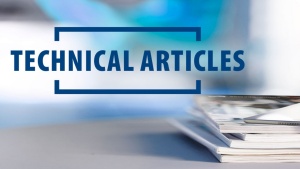
Deep groove ball bearings are among the most widely used types of bearings in industrial and mechanical applications. Their ability to handle radial and axial loads, along with their low friction and high-speed capability, makes them a popular choice in electric motors, pumps, gearboxes, and household appliances. However, like all mechanical components, their service life is influenced by several factors. Understanding these factors can help extend the lifespan of your bearings, reduce maintenance costs, and improve overall machine efficiency. Key Factors Affecting Deep Groove Ball Bearing Life The longevity of a deep groove ball bearing depends on various factors, including load conditions, lubrication, contamination control, and installation accuracy. Let’s take a closer look at each of these aspects. 1. Proper Lubrication Lubrication is one of the most critical factors affecting bearing life. Without proper lubrication, friction and wear increase, leading to premature failure. When selecting a lubricant, consider: Grease vs. Oil – Grease lubrication is common for sealed or shielded bearings, while oil lubrication is preferable for high-speed applications. Operating Temperature – Choose a lubricant that can withstand the temperature range of your application. Re-lubrication Intervals – Periodically reapply lubricant to prevent drying out or contamination. 2. Load and Speed Considerations Deep groove ball bearings are designed to handle a specific range of radial loads and moderate axial loads, but excessive loading can cause premature wear. Important considerations include: Avoid Overloading – Excessive loads can lead to surface fatigue and early bearing failure. Always ensure the load does not exceed the bearing’s dynamic load rating. Speed Limits – Bearings have a maximum speed rating based on their design and lubrication method. Exceeding this speed can generate excessive heat and shorten the bearing’s lifespan. 3. Contamination Control Dirt, dust, and moisture are major enemies of deep groove ball bearings. Contaminants can cause wear, corrosion, and increased friction. To prevent contamination: Use Sealed or Shielded Bearings – If the application is exposed to dust or moisture, consider using sealed deep groove ball bearings to protect against external contaminants. Keep the Operating Environment Clean – Ensure the surrounding area is free from excessive dust and debris. Proper Handling and Storage – Always store bearings in a clean, dry place to prevent exposure to moisture and dirt before installation. 4. Correct Installation and Alignment Improper installation is a leading cause of premature bearing failure. To ensure proper installation: Use the Right Tools – Never hammer bearings into place; use a bearing press or induction heater to avoid internal damage. Ensure Proper Shaft and Housing Fit – Incorrect fits can lead to slippage, misalignment, and uneven load distribution. Check for Misalignment – Misaligned bearings experience uneven stress, leading to increased wear and early failure. Proper shaft alignment is essential for smooth operation. 5. Regular Maintenance and Monitoring Routine inspections can help identify early signs of bearing wear and prevent unexpected failures. Key maintenance steps include: Check for Unusual Noise or Vibration – Excessive noise or vibration often indicates lubrication failure or bearing wear. Monitor Temperature – Overheating is a common sign of excessive friction due to poor lubrication or overloading. Inspect for Signs of Wear – If you notice pitting, discoloration, or cracks on the bearing surface, replacement is necessary. Maximizing the service life of deep groove ball bearings requires proper lubrication, load management, contamination control, and correct installation. By following these best practices, you can significantly extend bearing lifespan, reduce downtime, and improve the overall efficiency of your machinery. If you’re unsure about the right bearing selection or lubrication method for your application, consulting with a bearing specialist or referring to manufacturer recommendations can help ensure optimal performance. Taking proactive maintenance measures will not only save costs but also enhance the reliability of your equipment in the long run.
2025-02-10
More >>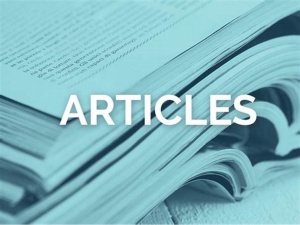
Deep groove ball bearings are essential mechanical components known for their specific design features and structural characteristics. These bearings are widely used across various industries due to their versatility and ability to accommodate both radial and axial loads efficiently.One of the key design features of deep groove ball bearings is their simple yet effective structure. They typically consist of an inner ring, an outer ring, a set of balls, and a cage to hold the balls in place. This design allows for smooth rotation and distribution of loads, making them suitable for a wide range of applications.The deep groove in these bearings refers to the raceway channels in both the inner and outer rings, which enables them to support radial loads and moderate axial loads in both directions. This design feature enhances the bearings' ability to operate at high speeds while maintaining low friction levels, contributing to their overall efficiency.Another notable design characteristic of deep groove ball bearings is their sealed or shielded configurations. Sealed bearings are equipped with rubber or metal seals that protect the internal components from contaminants and retain lubrication, enhancing the bearings' longevity and performance in harsh environments. Shielded bearings, on the other hand, have metal shields that provide protection against debris while allowing for easier access to lubrication.Additionally, deep groove ball bearings are available in various sizes and configurations to suit different applications. Miniature deep groove ball bearings are used in precision instruments and small devices, while larger bearings are employed in heavy machinery and industrial equipment. This versatility in design allows for customization based on specific load requirements and operational conditions.The cage structure in deep groove ball bearings plays a crucial role in maintaining ball alignment and spacing within the bearing, ensuring smooth operation and reducing friction. Common cage materials include steel, brass, and synthetic polymers, each offering unique benefits in terms of durability, heat resistance, and weight. In conclusion, the design features and structure of deep groove ball bearings make them indispensable components in a wide range of applications. Their simple yet efficient design, deep groove configuration, sealing options, size variability, and cage structure collectively contribute to their reliability, performance, and versatility across diverse industries and operational environments.
2025-01-20
More >>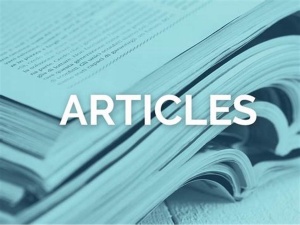
Deep groove ball bearings are versatile components that find widespread utility across various industries due to their unique design and functionality. These bearings are characterized by their ability to accommodate both radial and axial loads, making them essential in a multitude of applications.One of the primary sectors where deep groove ball bearings are extensively utilized is the automotive industry. These bearings play a crucial role in vehicle components such as wheels, gearboxes, engines, and steering systems. Their high load-bearing capacity and low friction properties ensure smooth operation and enhanced efficiency in automotive mechanisms.In the realm of industrial machinery, deep groove ball bearings are indispensable for applications involving rotating parts, such as motors, pumps, and conveyors. Their durability, reliability, and ability to operate at high speeds make them ideal for sustaining heavy loads in industrial settings.Moreover, the manufacturing sector heavily relies on deep groove ball bearings for equipment like machine tools, robots, and printing machinery. These bearings contribute to the precision and accuracy required in modern manufacturing processes, ensuring seamless operation and optimal performance of machinery.In the field of household appliances, deep groove ball bearings are found in items ranging from washing machines and refrigerators to blenders and vacuum cleaners. Their smooth operation and longevity enhance the overall performance and longevity of these appliances, providing consumers with reliable and efficient products. In conclusion, the versatility and reliability of deep groove ball bearings make them indispensable across a wide range of industries and applications. From automotive systems to industrial machinery, manufacturing equipment to household appliances, and even aerospace technologies, these bearings continue to play a vital role in ensuring smooth operation, efficiency, and reliability in various sectors worldwide.
2025-01-14
More >>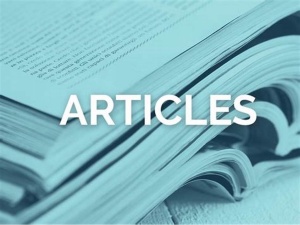
Deep groove ball bearings are widely used in various mechanical applications due to their versatility and high performance. Proper installation and adjustment of these bearings are crucial to ensure optimal functionality and longevity of the equipment. This article provides a detailed guide on the correct procedures for installing and adjusting deep groove ball bearings.1. Pre-Installation Preparation:Before installing a deep groove ball bearing, ensure that the shaft and housing are clean, free of any burrs or damage, and properly aligned. Inspect the bearing for any signs of damage or contamination.2. Mounting the Bearing: Carefully slide the bearing onto the shaft using a suitable tool to avoid applying force to the rolling elements. Ensure that the bearing is seated squarely on the shaft shoulder or in the housing bore. Avoid striking the bearing directly during installation to prevent damage. 3. Securing the Bearing: Use the appropriate method to secure the bearing on the shaft, such as a locknut, adapter sleeve, or interference fit. Follow the manufacturer's recommendations for the correct tightening torque to prevent overloading the bearing. 4. Lubrication: Apply the recommended amount and type of lubricant to the bearing to reduce friction and dissipate heat effectively. Ensure that the lubricant is evenly distributed throughout the bearing to prevent premature wear. 5. Adjustment: After installation, check the bearing for any axial or radial play by applying a load in the appropriate direction. Adjust the bearing clearance if necessary according to the manufacturer's specifications. Proper adjustment helps optimize bearing performance and reduces the risk of premature failure. 6. Testing: Rotate the shaft to ensure smooth operation and check for any abnormal noise or vibration. Monitor the bearing temperature during operation to ensure it remains within the acceptable range. 7. Maintenance: Regularly inspect the bearing for signs of wear, contamination, or lubrication issues. Replace the bearing if any abnormalities are detected during maintenance checks. In conclusion, the correct installation and adjustment of deep groove ball bearings are essential for ensuring reliable and efficient operation of mechanical systems. By following the recommended procedures and guidelines provided by the manufacturer, you can maximize the performance and service life of deep groove ball bearings in your equipment.
2025-01-07
More >>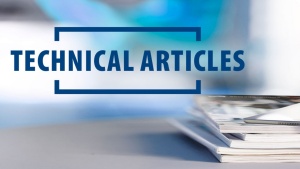
Deep groove ball bearings are a fundamental component in many mechanical systems, known for their versatility and efficiency in handling radial and axial loads. The working principle of deep groove ball bearings revolves around their design, which enables smooth and precise rotation within machinery.At the core of a deep groove ball bearing are two rings—an inner ring and an outer ring—separated by a series of balls running in a continuous groove. These bearings are characterized by their deep raceway grooves, allowing them to accommodate both radial and axial loads in various applications.The operation of deep groove ball bearings is based on the principle of rolling contact, where the balls reduce friction as they roll between the inner and outer raceways. This rolling action minimizes sliding friction, resulting in efficient power transmission and reduced wear on the bearing surfaces.The deep groove design of these bearings enables them to support radial loads, axial loads, or a combination of both, making them suitable for a wide range of applications, from household appliances to industrial machinery. The geometry of the raceways and the arrangement of the balls contribute to the load-carrying capacity and rotational speed capabilities of deep groove ball bearings. In summary, the working principle of deep groove ball bearings relies on their ability to facilitate smooth rotation through rolling contact between the balls and the raceways. This design minimizes friction, ensures efficient load distribution, and enhances the overall performance and reliability of mechanical systems utilizing these bearings.
2025-01-01
More >>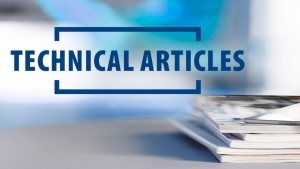
Bearings are essential components in machinery, enabling the smooth rotation of shafts and reducing friction between moving parts. Understanding the working principle of bearings is crucial for grasping their significance in various mechanical systems.1. Rolling Contact PrincipleRolling bearings operate based on the principle of rolling contact. They consist of inner and outer rings with rolling elements such as balls or rollers placed in between. When a load is applied, these rolling elements facilitate smooth rotation by rolling against the inner and outer races, minimizing friction and distributing the load evenly.2. Load DistributionOne of the key functions of bearings is to support and distribute loads efficiently. By using rolling elements, bearings can handle radial, axial, and moment loads, ensuring that forces acting on the shaft are managed effectively without causing excessive wear or damage.3. Friction ReductionBearings work to reduce friction between moving parts within a machine. The rolling contact between the elements and races minimizes sliding friction, allowing for smooth operation and increased energy efficiency. Proper lubrication further enhances the friction-reducing capabilities of bearings.4. Alignment and StabilityIn addition to load-bearing and friction reduction, bearings also contribute to the alignment and stability of rotating components. They help maintain the concentricity of shafts and prevent misalignment, ensuring smooth and reliable operation of the machinery.5. Heat DissipationDuring operation, bearings can generate heat due to friction. The design of bearings includes features for efficient heat dissipation, preventing overheating and ensuring optimal performance and longevity of the components. In conclusion, the working principle of bearings revolves around facilitating smooth rotation, distributing loads effectively, reducing friction, ensuring alignment, and dissipating heat. By understanding these principles, engineers can select and apply the right bearings to enhance the performance and reliability of mechanical systems.
2024-12-25
More >>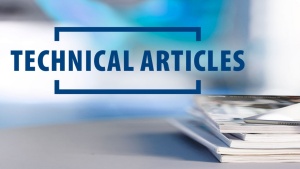
Bearings are crucial components in various mechanical systems, serving the purpose of supporting rotating shafts and reducing friction. Essentially, a bearing is a device used to support a rotating shaft, allowing it to rotate freely relative to fixed components during operation.The design of bearings is aimed at minimizing friction and motion resistance within mechanical systems, thereby prolonging the life of equipment and enhancing efficiency. They typically consist of inner and outer rings, with rolling elements such as balls, rollers, or sliders filling the space in between. These rolling elements create a rolling contact interface within the bearing, enabling it to withstand loads in different directions and facilitate rotation.Bearings come in various types, including rolling bearings and plain bearings. Rolling bearings operate through rolling contact between the rolling elements internally, such as ball bearings and roller bearings, while plain bearings utilize a lubricant to create a sliding surface between components, offering smooth operation by reducing friction. In conclusion, bearings play a fundamental role in the functionality of machinery by supporting rotational motion and minimizing friction, thereby contributing to the overall performance and longevity of mechanical systems.
2024-12-19
More >>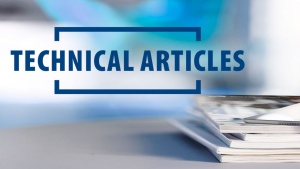
The finishing of the ring rolling surface refers to the final fine processing of the bearing raceway (or groove) after grinding. The reason for finishing is that the quality of the rolling surface of the ring directly affects the working performance and service life of the bearing. However, due to the precision of the grinding machine, vibration, deformation, high temperature and high productivity during grinding, it is generally difficult to achieve the surface roughness, allowable waviness, required geometric shape accuracy and physical and mechanical properties of the surface layer specified by the rolling surface. Therefore, the rolling surface of the ring still needs to be finished after grinding to meet the requirements of technical conditions.After finishing, the following technical requirements are generally required:1. Reduce the surface roughness value. Tests show that the roughness of the ring rolling surface has a direct impact on the service life of the bearing. However, a lower surface roughness value is not always better. Typically, achieving Ra 0.08-0.04 μm is more suitable.2. Reduce circular deviation (i.e. reduce waviness and improve facet). The circular deviation of the ring rolling surface, especially the influence of waviness on bearing vibration, noise, rotation accuracy, load capacity and service life, has been confirmed by many tests and has been highly valued by the bearing industry, which has put forward specific requirements and taken effective measures.3. Improve the geometric shape accuracy of the groove (raceway) cross section. Both theory and practice show that the geometric shape accuracy of the groove (raceway) has an important influence on the life of the bearing. At present, higher and higher requirements are placed on the shape accuracy of the groove arc profile and the raceway convex profile.4. Improve the physical and mechanical properties of the rolling surface. Because the rolling surface is affected by the grinding force and grinding heat as high as 750-1200°C during grinding, the metal crystal structure of the surface layer (4-6μm) is destroyed and tensile stress is easily generated. Therefore, one of the tasks of finishing is to remove the defective layer and improve the surface contact fatigue strength and bearing life.
2024-12-12
More >>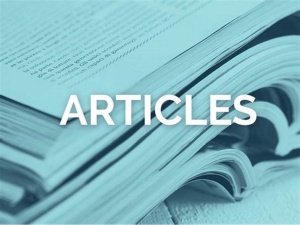
Question: What is the general task of turning rolling bearing rings?Answer: The main tasks of general turning of rolling bearing rings are: 1. For general forging blanks, remove the hard oxide layer on the surface.2. For bars and tubes, remove excess metal.3. Obtain the shape, size and position accuracy of turning processing.4. Leave a certain depth of allowance evenly on the surface to be processed. 5. Process the auxiliary surfaces (chamfers, grooves, slots, etc.).
2024-12-04
More >>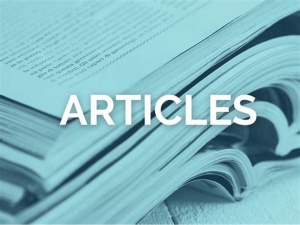
Rolling mills are critical equipment in industries such as steel, aluminum, and other metal manufacturing. Bearings in rolling mills play a vital role in ensuring smooth operation under extreme conditions such as high loads, high speeds, and elevated temperatures. The material used in rolling mill bearings is crucial for their performance, durability, and ability to withstand demanding operating conditions. This article explores the common materials used in rolling mill bearings and their specific properties.Common Materials for Rolling Mill Bearings1. High-Carbon Chromium Steel (GCr15 or Equivalent)High-carbon chromium steel, often referred to as GCr15 (equivalent to 52100 in AISI standards), is one of the most commonly used materials for rolling mill bearings. This material offers excellent properties for high-load and high-speed applications.Properties: High hardness after heat treatment, which provides excellent wear resistance. Superior fatigue strength for withstanding repetitive stress cycles. Good dimensional stability under high temperatures. Cost-effective and widely available. Applications: Used in rolling mill applications where moderate heat and wear resistance is sufficient. Suitable for bearings in support rollers, guide rollers, and backup rollers. 2. Case-Hardened SteelCase-hardened steel is another popular material for rolling mill bearings. Unlike through-hardened steel, case-hardened steel has a hard outer surface and a tough, ductile core, making it ideal for applications where impact resistance is essential.Properties: The hard outer layer resists wear, while the soft core absorbs shock and impact. Improved resistance to cracking under heavy loads. Long fatigue life under challenging operating conditions. Applications: Suitable for bearings in heavy-duty rolling mills where high impact loads are common, such as hot rolling mills. 3. Bainitic SteelBainitic steel is a specialized material known for its excellent toughness and wear resistance. It is often used in rolling mill bearings that operate in extreme conditions.Properties: Excellent thermal stability, making it suitable for high-temperature environments. High toughness to resist cracking and deformation under heavy loads. Superior wear resistance compared to standard bearing steels. Applications: Ideal for bearings in hot rolling mills and continuous casting machines where high temperatures and heavy loads are prevalent. 4. Stainless SteelStainless steel is used in rolling mill bearings that require high corrosion resistance due to exposure to water, chemicals, or other corrosive environments.Properties: Excellent corrosion resistance, even in wet or chemically aggressive conditions. Moderate load and wear resistance compared to chromium or bainitic steels. Suitable for environments with high humidity or cooling water exposure. Applications: Bearings in rolling mills used for aluminum or other non-ferrous metals, where cooling water or corrosive environments are common. 5. Special Alloy SteelsCustom alloy steels are often developed for rolling mill bearings to meet specific demands, such as extreme temperature resistance or improved fatigue performance. These materials may include added elements like molybdenum, vanadium, or nickel to enhance particular properties.Properties: Tailored to provide a balance of hardness, toughness, and thermal stability. Enhanced fatigue and wear resistance for demanding applications. Ability to perform well under both high loads and temperatures. Applications: Used in high-performance rolling mills such as tandem mills or heavy plate mills.
2024-11-26
More >>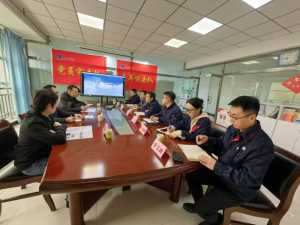
On November 19, Li Heng, chief expert of SINOMACH and chief engineer of Guilin Electrical Equipment Scientific Research Institute Co., Ltd., and his team visited the company for research and exchange. Li Wenchao, deputy general manager and chief engineer of ZYS, and Sun Xiaobo, general manager of the manufacturing service division, also participated in the exchange. Li Wenchao introduced the company's development history, scientific research strength, production and operation, and Li Heng spoke highly of the company's achievements in technology research and development and business. The two sides conducted in-depth discussions on key issues such as the test plan, performance requirements, and product schedule of the "wear-resistant slider". Both parties expressed that they will strengthen communication and exchanges in the future to develop new growth points for cooperation and new highlights of the industry in areas such as resin raw materials and insulating materials to achieve win-win cooperation. Li Heng and his party also visited the "wear-resistant slider" production line and expressed full recognition of the processing methods and production processes.
2024-11-20
More >>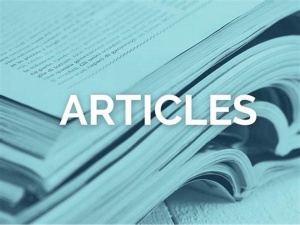
CSK series wedge-type overrunning clutch is also called one-way bearing, and its dimensions are the same as those of 62 series deep groove ball bearing. It is a combination of deep groove ball bearing and wedge-type clutch (except CSK40), and its interior is filled with grease. The torque transmission is generally an interference fit, where the outer ring is pressed against the machine body with a tolerance of N6, and the inner ring is pressed against the working shaft with a tolerance of N6. According to user needs, the inner and outer rings can be made with keyways. The model with the inner ring made with keyways is CSK-P, and the model with both the inner and outer rings having keyways is CSK-PP. It is suitable for printing machinery, packaging machinery, etc.CSK series clutch bearings have the following features:1. Low friction resistance, low power consumption, high mechanical efficiency, and easy starting.2. Standardized dimensions, interchangeability, easy installation and disassembly, and convenient maintenance.3. Compact structure, light weight, and smaller axial dimensions.4. High precision, high speed, low wear and long service life.5. Can bear radial and thrust combined loads at the same time;6. Unique design can achieve excellent performance in a wide range of load and speed; 7. Bearing performance is relatively insensitive to fluctuations in load, speed and operating speed.
2024-11-13
More >>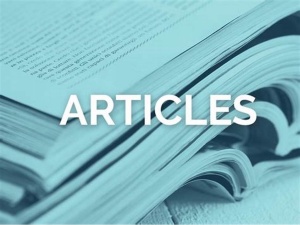
As an important component in the field of engineering machinery, slewing bearings are widely used in cranes, excavators, concrete mixers and other mechanical equipment. With the vigorous development of the construction industry and the increasing demand for engineering machinery, slewing bearing technology is facing new development opportunities and challenges. This article will discuss the development trend of slewing bearing technology from the aspects of market demand, technological innovation, and international market expansion.1. Market demand continues to growWith the acceleration of urbanization and the continuous advancement of infrastructure construction, the demand for construction machinery market continues to grow, providing a broad space for the development of the slewing bearing market. According to data from the China Construction Machinery Industry Association, in 2023, the total sales of automobile cranes, crawler cranes, truck cranes, tower cranes, etc. in my country will be 69,856 units, and the sales of excavators will be 195,018 units, showing strong market demand. This trend directly promotes the growth of the slewing bearing market, and market demand will continue to rise steadily in the future.2. Technological innovation promotes industrial upgradingIn order to meet the increasing requirements of the technical performance of slewing bearings in the field of engineering machinery, manufacturers are constantly upgrading and innovating their technology. The application of new materials and new processes has become the key to promoting the development of slewing bearing technology. For example, the application of high-strength, high-toughness, and high-wear-resistant materials makes the slewing bearing more stable and reliable when bearing large loads. At the same time, improvements in manufacturing processes such as quenching and heat treatment have further improved the mechanical properties and service life of the slewing bearing.In addition, the development of intelligent and automated technologies has also brought new opportunities to the slewing bearing industry. By introducing intelligent components such as sensors and control systems, remote monitoring, fault diagnosis, and predictive maintenance of slewing bearings can be achieved, improving the operating efficiency and safety of equipment.3. Accelerated international market expansionAs the competitiveness of Chinese engineering machinery brands in the international market continues to increase, the export volume of slewing bearings is also gradually increasing. The expansion of the international market not only brings new growth points to the slewing bearing industry, but also promotes technical exchanges and cooperation. Through cooperation with internationally renowned companies, Chinese manufacturers can introduce advanced production technology and management experience to enhance their competitiveness.At the same time, the support of policies such as the Belt and Road Initiative and Made in China 2025 also provides strong guarantees for the international market expansion of the slewing bearing industry. These policies encourage enterprises to "go global", participate in international competition, and promote the transformation and upgrading of China's manufacturing industry.4. Increasing demand for customization and diversificationWith the continuous development of the field of engineering machinery, the application demand for slewing bearings is becoming more and more diversified. Different fields have different performance requirements for slewing bearings, and manufacturers need to customize and develop products according to market demand. For example, in the field of cranes, slewing bearings need to withstand large axial forces and overturning moments; in the field of excavators, there are higher requirements for the wear resistance and stability of slewing bearings. Therefore, customized production will become an important trend in the slewing bearing industry in the future.5. Green production and sustainable developmentWith the global emphasis on environmental protection and sustainable development, green production has become an important issue in all walks of life. The slewing bearing industry is no exception. In the manufacturing process, energy conservation and emission reduction and the application of green production technology will become an important direction for the development of the industry. By optimizing production processes, improving resource utilization efficiency, reducing waste emissions and other measures, the green and sustainable development of the slewing bearing industry can be achieved.In summary, slewing bearing technology is facing broad market prospects and continuous challenges of technological innovation. With the continuous growth of market demand, the continuous advancement of technological innovation, the accelerated expansion of the international market, and the increase in customized and diversified demands, the slewing bearing industry will usher in a broader development space. At the same time, green production and sustainable development will also become an important direction for the development of the industry. In the future, slewing bearing technology will continue to promote the transformation and upgrading of the industry and sustainable development while meeting market demand.
2024-11-07
More >>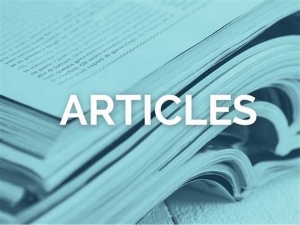
Application: Bearing vibration measuring instrument is suitable for testing in the measuring room and production site of the bearing plant, analysis and research of bearing manufacturing process, and quality identification of bearing users for purchased bearings.Features of bearing vibration measuring instrument:● Special bearing instrument for vibration (acceleration or speed) of deep groove ball bearings, angular contact ball bearings, cylindrical roller bearings and tapered roller bearings.● The vibration measurement displays the vibration acceleration value of the bearing in the direct frequency, high frequency, intermediate frequency and low frequency band, as well as the single peak value of the bearing vibration signal. The loudspeaker can synchronously output the abnormal sound generated when the bearing rotates. The results of instrument measurementare in full compliance with the relevant assessment criteria of the national bearing vibration technical conditions.● Owns the advantages of reasonable design, strong practicability and stable performance.● Equipped with oscilloscope, it can display the time domain waveform of bearing vibration.Power box includes single meter head power box (pass frequency) and five meter head power box (pass frequency, peak frequency, high frequency, medium frequency, low frequency), for users to choose. ● The electrical cabinet includes single-head electric box (direct frequency) and five-head electric box (direct frequency, peak frequency, high frequency, intermediate frequency, low frequency) for users to choose.
2024-11-01
More >>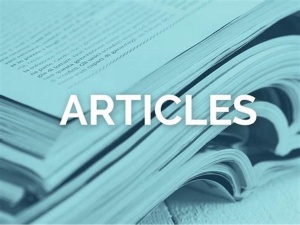
Tapered roller bearings are essential components in a wide range of industrial applications, renowned for their ability to support both radial and axial loads efficiently. These bearings are constructed with inner and outer rings with tapered raceways and tapered rollers, providing high radial and axial load-carrying capacities.One of the distinctive features of taper roller bearings is their ability to handle both thrust and radial forces due to their design. The tapered geometry of the rollers and raceways allows for smooth distribution of loads, enabling the bearing to operate at high speeds while maintaining precision and reliability.Taper roller bearings are commonly utilized in automotive applications, where they are employed in wheel hubs, transmissions, and differentials. Their robust construction and ability to withstand heavy loads make them ideal for these demanding environments. Additionally, they are extensively used in industries such as aerospace, construction, mining, and agriculture.The versatility of taper roller bearings lies in their various designs and configurations, including single-row, double-row, and four-row variants. These bearings can be customized with different cage materials, such as steel, brass, or polyamide, to optimize performance in specific operating conditions.Moreover, taper roller bearings are known for their high durability and long service life, contributing to reduced maintenance costs and increased operational efficiency. Proper lubrication and maintenance can further enhance the performance and longevity of these bearings, ensuring smooth and reliable operation over extended periods. In conclusion, taper roller bearings are integral components in machinery and equipment requiring reliable and efficient load-bearing capabilities. Their versatility, durability, and ability to withstand high loads make them indispensable in a wide array of industries, playing a vital role in ensuring the smooth operation of various mechanical systems.
2024-10-25
More >>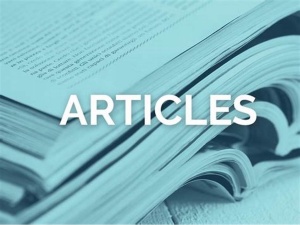
Tapered roller bearings are robust components designed to withstand heavy loads and harsh operating conditions. However, like any mechanical part, they can experience failures due to various factors. Some common causes of taper roller bearing failure include: Improper Installation: Incorrect installation practices, such as applying excessive preload or improper fitting, can lead to premature bearing failure. It's crucial to follow manufacturer guidelines for correct installation procedures. Lubrication Issues: Inadequate or excessive lubrication can cause increased friction, leading to overheating and premature wear of the bearing components. Contaminated lubricants can also accelerate bearing degradation. Misalignment: Taper roller bearings are designed to accommodate limited misalignment, but excessive misalignment can result in uneven loading, increased stress on the rollers, and premature failure. Overloading: Operating the bearing beyond its specified load capacity can cause excessive stress on the components, leading to fatigue failure or permanent deformation. Impact Loads: Sudden impact or shock loads can damage the rollers and raceways, reducing the bearing's lifespan. Proper handling and protection against impact loads are essential to prevent premature failure. Corrosion: Exposure to moisture or corrosive environments can lead to rust formation on the bearing surfaces, affecting their smooth operation and ultimately causing failure. Fatigue: Continuous cyclic loading can lead to fatigue failure over time, especially if the bearing is subjected to high loads or frequent start-stop operations without adequate rest periods. Contamination: Dust, dirt, metal particles, or other contaminants entering the bearing assembly can compromise the lubrication film and lead to increased friction, wear, and eventual failure. Temperature Extremes: Operating the bearing at temperatures beyond its design limits can cause thermal expansion, affecting the clearances and causing premature failure. Material Defects: In rare cases, manufacturing defects in the bearing components or poor-quality materials can lead to premature failure. Regular quality checks and sourcing from reputable manufacturers can help mitigate this risk. Regular inspection, proper maintenance, correct installation, and using the right lubrication are crucial steps to prevent taper roller bearing failures and ensure their optimal performance and longevity.
2024-10-22
More >>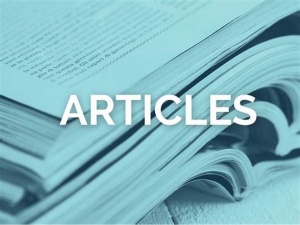
Maintaining ball screw bearings is crucial for ensuring optimal performance, longevity, and reliability in industrial applications. Proper maintenance practices can help prevent premature wear, reduce downtime, and extend the service life of the bearings. Here are some key maintenance requirements for ball screw bearings in industrial settings:1. Regular Lubrication Frequency: Ball screw bearings require regular lubrication to reduce friction, prevent wear, and maintain smooth operation. The frequency of lubrication depends on factors such as operating conditions, load, speed, and the type of lubricant used. Lubricant Selection: Choose the appropriate lubricant recommended by the bearing manufacturer based on factors such as temperature range, speed, load, and environmental conditions. Improper lubrication can lead to premature wear and failure of the bearings. Proper Application: Ensure that the lubricant is applied correctly and in the right quantity to all contact surfaces of the ball screw bearings. Over-lubrication can be as detrimental as under-lubrication, leading to overheating and performance issues. 2. Monitoring and Inspection Regular Inspections: Perform routine visual inspections of the ball screw bearings to check for signs of wear, damage, or contamination. Look for abnormal noise, vibration, or irregularities in motion, which may indicate potential issues that require attention. Cleanliness: Keep the surrounding area clean to prevent the ingress of contaminants such as dust, debris, and moisture, which can accelerate wear and compromise the performance of the bearings. 3. Alignment and Installation Proper Installation: Ensure that the ball screw bearings are installed correctly and aligned according to the manufacturer's specifications. Improper installation can lead to misalignment, increased friction, and premature failure of the bearings. Alignment Checks: Periodically check the alignment of the ball screw bearings with the shaft and other components to ensure that they are operating within the specified tolerances. Misalignment can result in uneven wear and reduced efficiency. 4. Temperature and Environmental Conditions Temperature Control: Maintain the operating temperature within the recommended range to prevent overheating or cold-start issues that can affect the performance of the bearings. Environmental Protection: Shield the ball screw bearings from harsh environmental conditions such as moisture, humidity, and corrosive substances that can degrade the lubricant and lead to premature wear. 5. Replacement and Upkeep Scheduled Replacements: Plan for scheduled replacements of ball screw bearings based on the manufacturer's recommended maintenance intervals or signs of wear and degradation observed during inspections. Documentation: Keep detailed records of maintenance activities, including lubrication schedules, inspections, replacements, and any issues encountered. This information can help track the performance of the bearings and guide future maintenance efforts. By adhering to these maintenance requirements and practices, industrial operators can ensure the optimal performance and longevity of ball screw bearings in their machinery and equipment. Regular maintenance not only improves the efficiency and reliability of industrial processes but also helps prevent costly downtime and repairs associated with bearing failures.
2024-10-11
More >>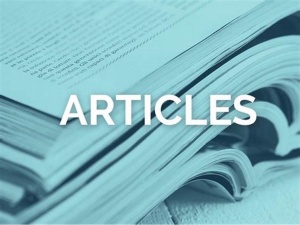
In the realm of motion control systems, precision is paramount. Whether it's in manufacturing, robotics, or aerospace, the ability to manipulate movement with accuracy and efficiency is a defining factor in the success of any application. Ball screw support bearings play a crucial role in achieving this precision, providing stability and smooth operation in high-load and high-speed scenarios.Understanding Ball Screw Support BearingsBall screw support bearings are specialized components designed to support the axial and radial loads that occur in ball screw applications. Ball screws are commonly used in various industrial machinery and automation systems to convert rotational motion into linear motion efficiently. However, the performance of a ball screw greatly depends on the support bearings that help to maintain its rigidity and accuracy.Key Features and Benefits Axial and Radial Support: Ball screw support bearings are engineered to provide both axial and radial support, ensuring the smooth and precise movement of the ball screw under heavy loads. High Rigidity: These bearings are designed to withstand high levels of axial and radial forces without compromising on rigidity, making them ideal for applications where stability is critical. Reduced Friction: By minimizing friction between the components, ball screw support bearings contribute to smoother operation and increased efficiency in motion control systems. Enhanced Precision: The combination of high rigidity and low friction results in enhanced precision, allowing for accurate positioning and repeatability in various industrial processes. Long Service Life: With proper maintenance and lubrication, ball screw support bearings can have a long service life, contributing to the overall reliability of the machinery they are installed in. Applications in Various Industries Manufacturing: In CNC machines and precision machining tools, ball screw support bearings play a vital role in achieving the accuracy required for complex manufacturing processes. Robotics: In robotic arms and automation systems, these bearings help in precise movement control, enabling robots to perform tasks with speed and accuracy. Aerospace: Ball screw support bearings are used in aerospace applications where precision and reliability are critical for the safe operation of aircraft and spacecraft. Considerations for Selection and MaintenanceWhen selecting ball screw support bearings for a specific application, factors such as load capacity, speed, rigidity, and operating environment must be taken into account. It is crucial to follow manufacturer recommendations for installation, lubrication, and maintenance to ensure optimal performance and longevity of the bearings.In conclusion, ball screw support bearings are indispensable components in motion control systems, enabling precise and reliable operation in a wide range of industrial applications. Their ability to handle high loads, provide rigidity, reduce friction, and enhance precision makes them essential for achieving efficiency and accuracy in modern machinery and automation systems. As technology continues to advance, the demand for higher precision and efficiency in motion control systems will only increase, further underscoring the importance of ball screw support bearings in the industrial landscape.
2024-10-08
More >>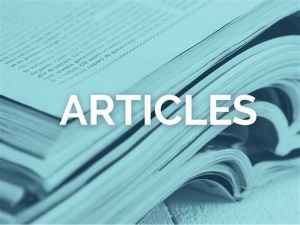
Bearings are crucial components in various machines and mechanisms, enabling smooth rotation and reducing friction between moving parts. Traditionally, bearings are lubricated to minimize wear and heat generation, ensuring their longevity and efficient operation. However, the question arises: Can bearings be used without lubrication?Understanding the Role of LubricationLubrication in bearings serves multiple key purposes:Reduction of Friction: Lubricants create a thin film between the moving parts, reducing direct contact and frictional resistance.Heat Dissipation: By reducing friction, lubricants help in dissipating heat generated during operation, preventing overheating and premature failure.Corrosion Prevention: Lubricants protect bearing surfaces from corrosion and wear, enhancing their lifespan.Noise Reduction: Proper lubrication can help dampen noise generated by the moving parts.Lubrication Methods for BearingsVarious lubrication methods are employed in bearings, including:Grease Lubrication: Grease is a common lubricant in bearings, offering good sealing properties and longevity.Oil Lubrication: Oil provides better heat dissipation and is often used in high-speed applications where continuous lubrication is required.Dry Lubrication: Some modern bearings are designed to operate without traditional lubrication, using solid lubricants or self-lubricating materials.Challenges of Using Bearings Without LubricationWhile it is technically feasible to operate bearings without traditional lubrication, several challenges must be considered:Increased Friction: Without lubrication, friction between bearing components can increase significantly, leading to accelerated wear and reduced efficiency.Heat Build-Up: Lack of lubrication impedes heat dissipation, potentially causing overheating and premature failure.Corrosion Risk: Unprotected bearing surfaces are more prone to corrosion and surface damage.Noise Generation: Operating bearings without lubrication can increase noise levels due to enhanced friction.Specialized Applications for Dry LubricationIn certain specialized applications where traditional lubrication is not feasible or practical, dry lubrication technologies are employed. These can include:Solid Lubricants: Bearings infused with solid lubricants like graphite or PTFE can operate effectively without traditional lubrication.Self-Lubricating Bearings: Some bearings are designed with self-lubricating properties, using materials that release lubricants during operation.Extreme Conditions: In environments where contamination or maintenance is a concern, dry lubrication methods can offer advantages.While it is possible to use bearings without traditional lubrication in certain cases, it is crucial to consider the specific requirements of the application. Lubrication plays a vital role in the performance and longevity of bearings, and alternative methods like dry lubrication should be chosen carefully based on the operating conditions.In conclusion, while bearings can technically operate without lubrication, it is generally recommended to use appropriate lubricants to ensure optimal performance and longevity. Proper maintenance and lubrication practices are essential in maximizing the efficiency and lifespan of bearings in various applications.
2024-09-25
More >>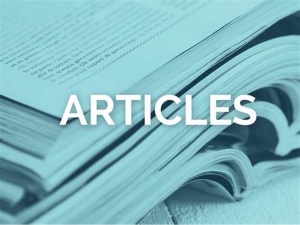
Bearings are vital components in machinery, providing smooth rotation and reducing friction between moving parts. Over time, bearings can wear out or become rough due to factors like insufficient lubrication, contamination, or heavy loads. In such cases, the question arises: Can relubrication help make rough bearings smooth again?Understanding Rough BearingsRough bearings can exhibit various symptoms:Increased Friction: Rough bearings often experience higher levels of friction, leading to inefficiencies and potential damage.Noise: Roughness can cause bearings to generate more noise during operation.Vibration: Unsmooth rotation can result in increased vibration, impacting the overall stability of the machinery.Relubrication: Potential Benefits and ConsiderationsRelubrication can offer several potential benefits in addressing rough bearings:Improved Lubrication: Applying fresh lubricant can help reduce friction, improving the smoothness of operation.Heat Dissipation: Proper lubrication aids in heat dissipation, preventing overheating and premature wear.Reduced Wear: Adequate lubrication can help reduce wear on bearing surfaces, extending their lifespan.Noise Reduction: By reducing friction, relubrication can contribute to noise reduction in bearings.Factors to ConsiderWhile relubrication can help improve the performance of rough bearings, several factors should be taken into account:Proper Lubricant Selection: Choosing the right lubricant based on the bearing type, operating conditions, and load is crucial for effective relubrication.Cleaning: Before relubricating, it is essential to clean the bearing thoroughly to remove contaminants and old lubricant residues.Quantity: Applying the correct amount of lubricant is important to ensure optimal performance without causing issues like overheating or leakage.Frequency: Regular maintenance and relubrication schedules should be established based on the operating conditions and manufacturer recommendations.When Relubrication May Not SufficeIn some cases, relubrication may not fully address rough bearing issues:Irreversible Damage: If the roughness is due to significant wear or damage to bearing surfaces, relubrication may not be sufficient to restore smooth operation.Contamination: Severe contamination or lack of proper sealing can hinder the effectiveness of relubrication efforts.Misalignment or Improper Installation: Roughness may be caused by factors like misalignment or improper installation, which may require corrective actions beyond relubrication.Relubrication can be a valuable maintenance practice in addressing rough bearings by reducing friction, improving smoothness, and extending bearing life. However, it is essential to consider factors like proper lubricant selection, cleaning, and maintenance practices to maximize the benefits of relubrication.In conclusion, while relubrication can help make rough bearings smoother and more efficient, it is crucial to assess the underlying causes of roughness and implement appropriate maintenance practices to ensure optimal bearing performance and longevity. Regular monitoring, cleaning, and relubrication can contribute to the smooth operation of bearings and the overall efficiency of machinery.
2024-09-23
More >>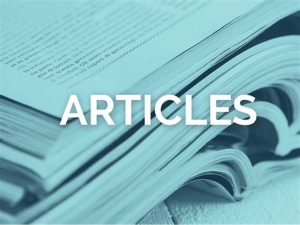
Rotary table bearings play a crucial role in various industries where precise and smooth rotation is required. These specialized bearings are designed to support heavy loads while allowing for smooth and accurate rotation, making them essential components in machinery such as indexing tables, turntables, and other rotating equipment.Rotary table bearings are typically constructed with an inner and outer ring with a set of balls or rollers sandwiched between them. The design allows for high load-carrying capacity and smooth rotation with minimal friction. The materials used in the construction of these bearings are often high-quality steel or other alloys to ensure durability and longevity.The primary function of a rotary table bearing is to support radial, axial, or combined loads while facilitating smooth rotation. These bearings are designed to handle both static and dynamic loads, making them suitable for a wide range of applications where rotational movement is required.ApplicationRotary table bearings find applications in various industries, including:Machine Tool Industry: Rotary table bearings are commonly used in milling machines, lathes, and other machining equipment to facilitate accurate positioning and rotation of workpieces.Robotics: In robotics, rotary table bearings play a vital role in enabling precise movement and positioning of robotic arms and joints.Medical Equipment: Rotary table bearings are used in medical equipment such as CT scanners and X-ray machines to facilitate precise rotation and positioning.Aerospace: These bearings are also used in aerospace applications, where precision and reliability are critical for the functioning of various components.Advantages of Rotary Table BearingsHigh Load Capacity: Rotary table bearings are designed to support heavy loads while maintaining smooth rotation.Precision and Accuracy: These bearings offer high precision and accuracy, making them ideal for applications where precise positioning is required.Durability: Rotary table bearings are built to withstand harsh operating conditions and provide long service life.Low Friction: The design of these bearings minimizes friction, resulting in smooth rotation and reduced wear and tear.Maintenance and CareProper maintenance is essential to ensure the optimal performance and longevity of rotary table bearings. Regular inspection, lubrication, and replacement of worn-out components are key to preventing breakdowns and extending the life of the bearings.In conclusion, rotary table bearings are indispensable components in various industries where precise rotation and high load capacity are required. Their robust construction, high precision, and durability make them a preferred choice for applications ranging from machine tools to robotics. By understanding the importance of these bearings and following proper maintenance practices, industries can ensure smooth operations and enhanced productivity in their rotating equipment.
2024-09-14
More >>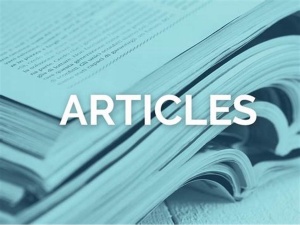
Selecting the right rotary table bearing for an application requires careful consideration of several key factors to ensure optimal performance and longevity. Here are the critical factors to keep in mind when choosing a rotary table bearing:Load Capacity:Radial Load: Consider the maximum radial load that the bearing will need to support during operation.Axial Load: Determine the maximum axial load that the bearing will be subjected to.Combined Load: Evaluate if the bearing needs to support both radial and axial loads simultaneously.Speed and Precision:Operating Speed: Determine the rotational speed at which the bearing will need to operate.Precision Requirements: Consider the level of precision needed for the application to ensure accurate positioning and smooth rotation.Size and Mounting:Space Constraints: Take into account the available space for the bearing and ensure that the selected size fits within the designated area.Mounting Configuration: Choose a bearing that is compatible with the mounting configuration of the equipment.Environmental Conditions:Temperature Range: Consider the operating temperature range of the application and select a bearing that can withstand these conditions.Corrosive Environments: If the application operates in a corrosive environment, choose a bearing with appropriate corrosion resistance.Lubrication and Maintenance:Lubrication Requirements: Determine the lubrication method required for the bearing and ensure that it is compatible with the application.Maintenance Needs: Consider the maintenance requirements of the bearing and choose one that aligns with the maintenance schedule of the equipment.Cost and Availability:Budget Constraints: Take into account the budget allocated for the bearing and find a balance between cost and performance.Availability: Ensure that the selected bearing is readily available and can be sourced in a timely manner when needed.Application-Specific Requirements:Industry Standards: Check if there are specific industry standards or regulations that the bearing needs to comply with.Special Features: Consider any special features or customizations required for the application, such as seals for contamination protection or preload options for enhanced rigidity.By carefully evaluating these factors and selecting a rotary table bearing that meets the specific requirements of the application, you can ensure optimal performance, reliability, and durability of the equipment. Consulting with bearing manufacturers or industry experts can also provide valuable insights and assistance in choosing the right bearing for your application.
2024-09-11
More >>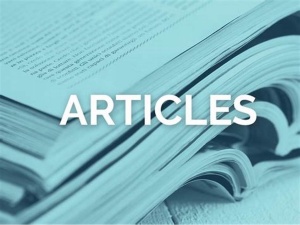
Various types of lubricants are used for bearings, each with its specific properties and suitability for different applications. Here are some common types of lubricants used for bearings:1. Grease:Composition: Grease is a semi-solid lubricant composed of a base oil thickened with a soap, such as lithium, calcium, or polyurea.Advantages: Grease provides excellent sealing properties, corrosion protection, and is easy to apply. It is commonly used in applications where frequent relubrication is not feasible.2. Oil:Composition: Oil lubricants can be mineral-based, synthetic, or vegetable oils.Advantages: Oil offers low friction, high heat dissipation, and is suitable for high-speed applications. Oil lubrication is often used in systems with continuous lubricant supply.3. Solid Film Lubricants:Composition: Solid film lubricants, such as molybdenum disulfide (MoS2) or graphite, form a thin film on the bearing surfaces.Advantages: Solid film lubricants provide excellent anti-wear properties, reduce friction, and are suitable for high-temperature and extreme pressure conditions.4. Dry Lubricants:Composition: Dry lubricants, like PTFE (Teflon), do not contain oils or greases and are applied as a coating or powder.Advantages: Dry lubricants offer good chemical resistance, low friction, and are suitable for applications where traditional lubricants may not be ideal.5. Silicone Lubricants:Composition: Silicone lubricants are based on silicone oil and provide good thermal stability and water resistance.Advantages: Silicone lubricants are suitable for high-temperature applications, have good sealing properties, and are compatible with a wide range of materials.6. High-Temperature Greases:Composition: High-temperature greases are formulated to withstand extreme temperatures without losing their lubricating properties.Advantages: These greases are designed for applications where conventional greases would break down under high temperatures.7. Biodegradable Lubricants:Composition: Biodegradable lubricants are environmentally friendly and are often used in applications where there is a risk of environmental contamination.Advantages: These lubricants offer good lubrication properties while being eco-friendly and biodegradable.8. Specialty Lubricants:Composition: Specialty lubricants are tailored for specific applications, such as high-load, high-speed, extreme pressure, or food-grade applications.Advantages: Specialty lubricants are designed to meet unique performance requirements and environmental conditions.Choosing the right type of lubricant for bearings depends on factors such as operating conditions, temperature, speed, load, contamination risks, and maintenance requirements. By selecting the appropriate lubricant, engineers can ensure optimal performance, reduced wear, and extended bearing life in a wide range of industrial applications.
2024-09-04
More >>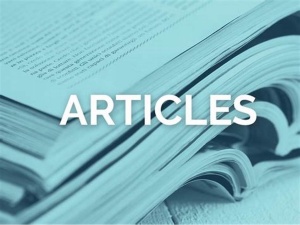
Selecting the correct lubricant for a bearing is crucial for ensuring optimal performance, longevity, and reliability. The choice of lubricant depends on various factors, including the operating conditions, speed, load, temperature, and environmental factors. Here are the key steps to determine the right lubricant for a bearing:1. Understand Operating Conditions:Load and Speed: Consider the load capacity and speed requirements of the bearing to select a lubricant that can withstand the anticipated operating conditions.Temperature: Determine the operating temperature range as some lubricants perform better at high temperatures, while others are suitable for low-temperature applications.2. Type of Bearing:Different types of bearings (e.g., ball bearings, roller bearings) may have specific lubrication requirements based on their design and operating characteristics. Ensure the lubricant is compatible with the bearing type.3. Lubrication Properties:Viscosity: Choose a lubricant with the appropriate viscosity to provide sufficient film thickness for load-bearing and to reduce friction effectively.Additives: Consider the need for additives such as anti-wear, corrosion inhibitors, and extreme pressure additives based on the application requirements.4. Environmental Factors:Contamination: Assess the risk of contamination from dust, water, chemicals, or other contaminants and select a lubricant that offers adequate protection against ingress.Cleanliness: In applications requiring high cleanliness standards, choose a lubricant that minimizes the risk of particle contamination.5. Compatibility:Ensure compatibility between the lubricant and the bearing material, seals, and other components to prevent adverse reactions that could impact performance or cause damage.6. Frequency of Maintenance:Consider the maintenance schedule and frequency of relubrication. Some lubricants may offer longer service intervals, reducing maintenance requirements.7. Consult Manufacturer Recommendations:Manufacturers often provide guidelines and recommendations for suitable lubricants based on the specific bearing model, application, and operating conditions. Refer to these guidelines for accurate lubricant selection.8. Testing and Monitoring:Conduct tests or trials with different lubricants to evaluate performance under actual operating conditions. Monitor factors such as temperature, vibration, and wear to ensure the chosen lubricant is effective.9. Document and Track Performance:Keep records of the lubricant used, application conditions, and maintenance intervals. Regularly monitor bearing performance and condition to ensure the selected lubricant is providing the desired results.By following these steps and considering the specific requirements of the application, engineers and maintenance professionals can effectively determine the right lubricant for a bearing, leading to improved performance, reduced wear, and extended bearing lifespan.
2024-09-03
More >>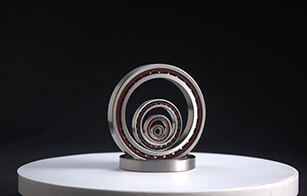
The advantages of grease lubrication are simple sealing structure and lubricating facilities, easy maintenance,, no leakage of grease, certain ability of preventing water, gas, dust and other harmful impurities from invading bearings. So grease lubrication is widely used.Oil lubrication can be used in heavy load, high speed, high temperature and other occasions.Solid lubrication can also be used in some special environments, such as high temperature and vacuum conditions.
2024-08-29
More >>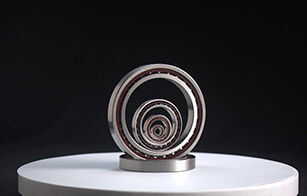
The limit speed of rolling bearing is the speed limit value when bearing reaches the highest heat balance temperature under certain working conditions.Factors of limit speed:1. Bearing type2. Structural dimension3. Bearing load4. Lubricant grades and lubricating methods5. Bearing tolerance grade6. Clearance7. Cage structure and material8. Cooling condition
2024-08-26
More >>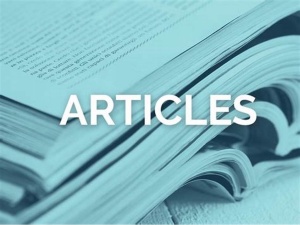
Bearing rings are the key components of ball bearings and roller bearings, which are used to reduce friction between moving parts within a machine. They are typically made of high-quality steel or other durable materials and are precision-engineered to exact specifications to ensure smooth and efficient operation.Types of Bearing RingsThere are two main types of bearing rings:Inner Ring: Also known as the race or cone, the inner ring is the stationary part of the bearing that is mounted onto a shaft. It provides a smooth surface for the rolling elements to move against.Outer Ring: The outer ring, also called the outer race or cup, is the part of the bearing that encloses and retains the rolling elements. It fits into a housing and serves as a mounting surface.Functions of Bearing RingsSupporting Loads: Bearing rings support the weight and loads that are transmitted through the bearing, allowing for smooth rotation of the shaft or other moving parts.Reducing Friction: By providing a smooth surface for the rolling elements to move against, bearing rings help reduce friction and wear within the bearing, thereby extending its lifespan.Maintaining Alignment: The precise design and manufacturing of bearing rings help maintain proper alignment between the inner and outer races, ensuring smooth and efficient operation of the bearing.Absorbing Shock: Bearing rings also help absorb shock and vibration that may occur during operation, protecting the machinery from damage and ensuring consistent performance.Importance of Quality Bearing RingsThe quality of bearing rings directly impacts the performance and longevity of the bearing and the machinery in which it is installed. High-quality bearing rings are essential for smooth operation, reduced maintenance requirements, and increased reliability.ConclusionIn conclusion, bearing rings are essential components of ball bearings and roller bearings that play a critical role in the functionality of various types of machinery. Their ability to support loads, reduce friction, maintain alignment, and absorb shock is vital for ensuring the smooth and efficient operation of mechanical systems. Understanding the significance of bearing rings can help engineers and technicians optimize the performance and reliability of machinery across various industries.
2024-08-22
More >>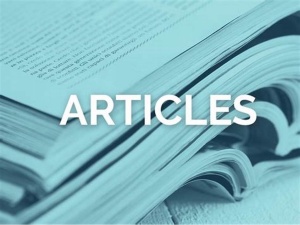
Installing and maintaining ceramic bearings properly is crucial to ensure optimal performance, longevity, and reliability. Here are some key points to consider for the installation and maintenance of ceramic bearings:Installation of Ceramic Bearings:Handling Precautions:Handle ceramic bearings with care to avoid damage to the delicate ceramic surfaces. Use clean gloves and tools to prevent contamination. Cleanliness:Ensure that the mounting surfaces and shaft are clean and free of debris, dirt, or old lubricant. Contaminants can cause premature wear and damage to the bearings. Fitting:Use appropriate tools and techniques to ensure a proper fit. Avoid excessive force during installation, as this can lead to damage to the bearing components. Mounting:Follow the manufacturer's recommendations for mounting the ceramic bearings onto the shaft and into the housing. Use the correct tools and techniques to prevent misalignment or damage. Lubrication:Apply the recommended lubricant sparingly and evenly to the bearing surfaces. Ensure that the lubricant is compatible with ceramic materials to avoid damage. Alignment:Properly align the bearings to prevent misalignment, which can cause increased friction, wear, and premature failure. Securing:Secure the bearings in place using the appropriate locking devices or methods to prevent movement during operation. Maintenance of Ceramic Bearings:Regular Inspection:Periodically inspect the ceramic bearings for signs of wear, damage, or contamination. Address any issues promptly to prevent further damage. Lubrication:Follow the manufacturer's recommendations for lubrication intervals and types of lubricants to use. Over-lubrication can lead to overheating, while under-lubrication can cause premature wear. Temperature Monitoring:Monitor the operating temperature of the bearings regularly. Excessive heat can indicate lubrication issues or misalignment, which should be addressed promptly. Vibration Analysis:Perform vibration analysis to detect any abnormalities in the bearing operation. Unusual vibrations can indicate misalignment, imbalance, or other issues that require attention. Cleaning:Keep the bearings clean by regularly removing dirt, dust, and contaminants. Use appropriate cleaning methods and solvents to avoid damaging the ceramic surfaces. Re-Greasing:Re-grease the bearings at recommended intervals to ensure proper lubrication and prevent dry running, which can lead to premature wear and failure. Storage:Store spare ceramic bearings in a clean, dry environment to prevent contamination and damage. Follow proper storage guidelines to maintain the integrity of the bearings. By following these installation and maintenance guidelines, you can maximize the performance and longevity of ceramic bearings in various applications, ensuring smooth operation and minimizing the risk of premature failure.
2024-08-19
More >>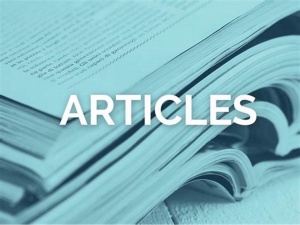
A motorized spindle is a set of components that includes the spindle itself and its accessories: the motorized spindle, the high-frequency inverter, the oil mist lubricator, the cooling unit, the built-in encoder, and the tool changer.1. High-speed bearing technologyElectrospindles usually use dynamic and static pressure bearings, composite ceramic bearings or electromagnetic levitation bearings. Hydrostatic bearings have high stiffness and damping, can greatly improve machining efficiency, machining quality, extend tool life, reduce machining costs. Composite ceramic bearings are currently widely used in electric spindle units. The rolling elements of this type of bearings use hot-pressed Si3N4 ceramic balls, and the bearing rings are still steel rings. They have a high degree of standardization, require little change to the machine tool structure, and are easy to maintain. Electromagnetic suspension bearings have good high-speed performance, high precision, and are easy to diagnose and monitor online. However, due to the complexity of the electromagnetic measurement and control system, the price of this type of bearing is very expensive and has remained high for a long time, and has not yet been widely used.2. High-speed motor technologyThe electric spindle is a product of the fusion of the motor and the spindle. The rotor of the motor is the rotating part of the spindle. In theory, the electric spindle can be regarded as a high-speed motor. The key technology is dynamic balancing at high speed.3. LubricationThe lubrication of the electric spindle generally adopts timed and quantitative oil-gas lubrication; grease lubrication can also be used. The so-called timing means injecting oil at a certain time interval. The so-called quantitative means that the amount of lubricating oil each time is accurately controlled through a device called a quantitative valve. Oil-gas lubrication refers to the lubricating oil being blown into the ceramic bearing under the influence of compressed air. The oil quantity control is very important. Too little will not play a lubricating role; too much will cause heat due to the resistance of the oil when the bearing rotates at high speed.4. Cooling deviceIn order to dissipate the heat of the high-speed electric spindle as quickly as possible, a circulating coolant is usually passed through the outer body of the electric spindle. The function of the cooling device is to maintain the temperature of the coolant.5. Built-in pulse encoderIn order to realize automatic tool change and rigid tapping, the electric spindle has a built-in pulse encoder to achieve accurate phase angle control and coordination with feed.6. Automatic tool changerIn order to be used in machining centers, the electric spindle is equipped with an automatic tool changer, including disc springs, broaching cylinders, etc.7. High-frequency frequency conversion device To achieve a speed of tens of thousands or even hundreds of thousands of revolutions per minute for the electric spindle, a high-frequency frequency conversion device must be used to drive the built-in high-speed motor of the electric spindle. The output frequency of the frequency converter must reach thousands or several kilohertz.
2024-08-15
More >>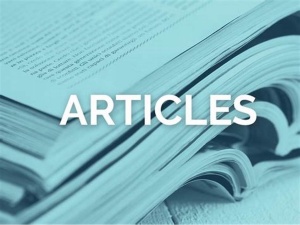
In the realm of machining and industrial manufacturing, where precision is paramount and efficiency is key, the motorized spindle stands as a testament to human ingenuity and technological advancement. This crucial component plays a central role in various machining processes, enabling high-speed rotation with exceptional accuracy and reliability. Let's delve into the intricacies of the motorized spindle, exploring its design, functionality, and applications.Understanding the Motorized SpindleAt its core, a motorized spindle is a rotating axis that houses a motor to drive a cutting tool or workpiece. The spindle's primary function is to provide the necessary speed and power for cutting, drilling, milling, or grinding operations. By integrating a motor directly into the spindle unit, manufacturers can achieve higher rotational speeds and greater control over machining processes.Design and ComponentsMotorized spindles come in a variety of designs tailored to specific applications and performance requirements. However, most motorized spindles share common components:Motor: The motor serves as the powerhouse of the spindle, converting electrical energy into mechanical energy to drive the spindle's rotation. High-performance motors are crucial for achieving precise speeds and torque levels.Bearings: Precision bearings are essential in motorized spindles to reduce friction, support high speeds, and maintain stability during operation. Common types include angular contact bearings and ceramic bearings.Spindle Shaft: The spindle shaft is the central rotating element that connects the motor to the cutting tool or workpiece. It must be rigid, durable, and balanced to ensure smooth operation and minimal vibration.Cooling System: To prevent overheating and maintain optimal performance, motorized spindles often incorporate cooling systems such as air or liquid cooling.Functionality and AdvantagesMotorized spindles offer several key advantages that make them indispensable in modern manufacturing processes:High Speeds: Motorized spindles can achieve significantly higher rotational speeds than traditional belt-driven spindles, enabling faster machining and improved surface finishes.Precision and Accuracy: The direct integration of the motor into the spindle results in enhanced control over speed, acceleration, and position, leading to superior accuracy and repeatability.Compact Design: Motorized spindles are typically more compact and lightweight compared to conventional spindles, making them ideal for applications where space is limited.Versatility: Motorized spindles can be customized to suit a wide range of machining tasks, from light-duty milling to heavy-duty cutting operations.ApplicationsMotorized spindles find application in various industries, including aerospace, automotive, medical device manufacturing, and electronics. They are commonly used in CNC machining centers, grinding machines, milling machines, and other precision machining equipment where speed, accuracy, and reliability are paramount.ConclusionIn the world of modern manufacturing, where efficiency and precision are non-negotiable, the motorized spindle stands out as a marvel of engineering excellence. Its ability to deliver high-speed rotation, exceptional accuracy, and reliability has revolutionized the way we approach machining processes. As technology continues to advance, motorized spindles will undoubtedly play a crucial role in shaping the future of industrial manufacturing.
2024-08-12
More >>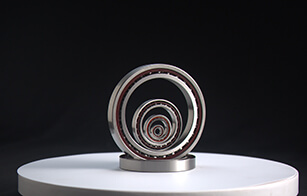
There are many types of materials for engine bearings, each with its own unique performance and application scenarios. The following are some common engine bearing materials:1.Steel-based alloy: Steel-based alloy is one of the common materials in engine bearings and is favored for its good strength and wear resistance. Some special types of steel-based alloys, such as stainless steel, also have excellent corrosion resistance.2.Copper-based alloys: Copper-based alloys have good thermal and electrical conductivity, as well as high strength and wear resistance. This enables copper-based alloy bearings to maintain good performance under high temperature and high load conditions.3.Aluminum-based alloys: Aluminum-based alloys have lower density and good thermal conductivity, which helps reduce the weight of bearings and improve heat dissipation efficiency. However, their strength and wear resistance are relatively low, so they are usually used for bearings with light loads or under specific conditions.4.Ceramic materials: Ceramic bearings are made of special materials such as zirconia ceramics, which have excellent wear resistance, corrosion resistance and high temperature resistance. Ceramic bearings perform well under high temperature, high speed and high load conditions, but the cost is relatively high.5.Plastic material: Plastic bearings are made of synthetic materials such as polytetrafluoroethylene and nylon, and have the characteristics of light weight, low friction, corrosion resistance, and long service life. However, their load bearing capacity is relatively low and they are usually suitable for bearings with low loads and low speeds.When selecting engine bearing materials, it is necessary to comprehensively consider factors such as specific application scenarios, working conditions, loads, and speeds. Different materials have different properties and characteristics, and choosing the right material is crucial to ensuring the reliability, durability, and performance of engine bearings.
2024-08-09
More >>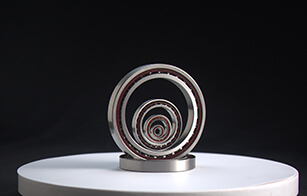
When we think about motorcycles, we often envision sleek designs, powerful engines, and the thrill of the open road. However, beneath the surface of these iconic machines lies a complex network of components that work together to ensure a smooth and safe ride. One such crucial component that often goes unnoticed but plays a vital role in the performance of a motorcycle is the deep groove ball bearing.Understanding Deep Groove Ball BearingsDeep groove ball bearings are a type of rolling-element bearing that are widely used in various applications, including motorcycles. These bearings are designed to support radial and axial loads, allowing for smooth rotation of the shaft. The deep groove design enables the bearings to accommodate high speeds and operate with low friction.Importance in MotorcyclesIn motorcycles, deep groove ball bearings are found in numerous critical areas such as the wheels, transmission system, engine,and suspension components. These bearings play a pivotal role in ensuring the smooth operation of these systems, contributing to overall performance, efficiency, and safety.Wheels: Deep groove ball bearings are commonly used in motorcycle wheels to facilitate smooth rotation and reduce friction. They help the wheels spin freely, allowing for efficient movement and steering control.Transmission System: In the transmission system of a motorcycle, deep groove ball bearings are employed to support the rotating shafts and gears. These bearings help transmit power from the engine to the wheels, ensuring seamless gear shifting and optimal performance.Engine: Deep groove ball bearings are also utilized in various parts of the motorcycle engine, such as the crankshaft and camshaft. These bearings help reduce friction and vibrations, leading to increased engine efficiency and longevity.Suspension Components: The suspension system of a motorcycle relies on deep groove ball bearings to enable smooth movement and absorb shocks and vibrations while riding. These bearings contribute to rider comfort and stability on different road surfaces.Benefits of Deep Groove Ball Bearings in MotorcyclesDurability: Deep groove ball bearings are known for their durability and long service life, even under high-speed and high-load conditions. This reliability is crucial for the safety and performance of motorcycles.Low Friction: These bearings are designed to operate with minimal friction, which helps improve fuel efficiency and overall performance by reducing energy loss in the system.High-Speed Capability: Deep groove ball bearings can withstand high rotational speeds, making them ideal for motorcycle applications where speed is a crucial factor.Maintenance: Due to their robust construction, deep groove ball bearings require minimal maintenance, contributing to cost-effectiveness and ease of ownership for motorcycle riders.In conclusion, deep groove ball bearings are essential components in motorcycles that significantly impact their performance, efficiency, and safety. Whether it's ensuring smooth wheel rotation, supporting the transmission system, powering the engine, or enhancing the suspension system, these bearings play a critical role in the overall functioning of a motorcycle. Riders and manufacturers alike rely on the durability, low friction, and high-speed capabilities of deep groove ball bearings to deliver an exhilarating and reliable riding experience.
2024-08-05
More >>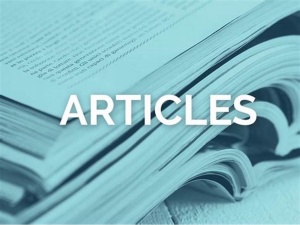
In the realm of industrial machinery, proper lubrication is paramount to ensure smooth operation, reduce wear and tear, and extend the lifespan of moving parts. Among the various lubrication methods available, oil mist lubrication has gained significant traction for its ability to deliver precise lubrication to critical components effectively. This article delves into the intricacies of oil mist lubrication devices, highlighting their benefits, applications, and importance in modern industrial settings.Understanding Oil Mist LubricationOil mist lubrication is a method where a fine mist of oil droplets is delivered to the lubrication point by a stream of compressed air. This mist of oil particles is carried by the air flow to the target area, where it forms a thin film on the moving parts to reduce friction and wear. The oil mist system typically consists of a lubricator, a mixing valve, and a delivery system that disperses the oil mist to the required components.Benefits of Oil Mist LubricationEfficient Lubrication: Oil mist lubrication provides a constant and reliable supply of lubricant, ensuring that the moving parts are adequately lubricated at all times.Reduced Maintenance: By delivering oil in a controlled manner, oil mist lubrication helps reduce maintenance intervals and the need for frequent manual lubrication, thus saving time and resources.Cooling Effect: The oil mist can also act as a coolant, dissipating heat generated during machinery operation and helping to maintain optimal operating temperatures.Cleaner Environment: Compared to traditional oil lubrication methods, oil mist lubrication produces less waste and ensures a cleaner working environment as there is minimal oil spillage.Applications of Oil Mist LubricationOil mist lubrication finds applications in a wide range of industries and machinery types, including:Rotating Equipment: Such as pumps, compressors, turbines, and electric motors where precise lubrication is crucial for smooth operation.Bearings: Oil mist lubrication is particularly effective for high-speed bearings where maintaining consistent lubrication is essential for performance and longevity.Metalworking Machinery: In metal cutting and forming machines where the cooling effect of the oil mist can help improve machining efficiency and tool life.Importance in Industrial SettingsIn industrial settings where machinery operates under high loads and speeds, the use of oil mist lubrication devices can significantly enhance operational efficiency and reliability. By ensuring proper lubrication of critical components, these devices help reduce downtime, minimize maintenance costs, and extend the lifespan of machinery.ConclusionOil mist lubrication devices represent a sophisticated and efficient method of lubricating machinery in various industrial applications. Their ability to provide precise and continuous lubrication offers numerous benefits, including improved efficiency, reduced maintenance requirements, and enhanced equipment longevity. As industries continue to prioritize performance and reliability, the adoption of oil mist lubrication systems is likely to increase, playing a crucial role in the optimization of industrial processes.
2024-07-26
More >>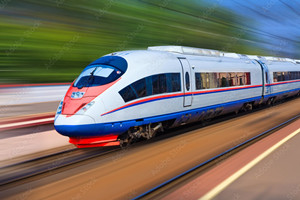
When selecting bearings for high-speed railway applications, several key factors should be considered to ensure optimal performance, safety, and reliability. These factors include:Load Capacity: High-speed trains experience significant loads due to the combination of their own weight and the forces generated during acceleration, braking, and cornering. It is crucial to choose bearings with adequate load-carrying capacity to handle these dynamic loads without excessive wear or premature failure.Speed Capability: High-speed railways demand bearings capable of operating at elevated speeds while maintaining stability and minimizing heat generation. The selected bearings should have high rotational speed ratings to accommodate the specific requirements of the application.Friction and Efficiency: Reduced friction is essential to minimize energy losses and enhance the overall efficiency of high-speed railway systems. Bearings with low friction characteristics help optimize power transmission and reduce heat generation, contributing to improved energy efficiency and reduced operating costs.Temperature and Lubrication: High-speed operations generate heat, and bearings must be able to withstand the resulting elevated temperatures. Additionally, proper lubrication is crucial to ensure smooth operation and reduce friction and wear. Consideration should be given to selecting bearings with appropriate temperature resistance and lubrication requirements for high-speed railway applications.Vibration and Noise: High-speed trains often produce significant vibrations and noise. Bearings with superior damping characteristics can help mitigate vibrations and reduce noise levels, contributing to passenger comfort and system performance.Reliability and Maintenance: Reliability is paramount in high-speed railway applications. Bearings should be selected based on their proven track record and reliability under similar operating conditions. Additionally, accessibility for maintenance and inspection should be considered, as regular monitoring and timely maintenance are crucial for ensuring long-term performance and minimizing downtime.Environmental Conditions: High-speed railway systems operate in various environmental conditions, including extreme temperatures, moisture, and contaminants. Bearings should be chosen based on their ability to withstand these conditions and provide reliable performance throughout the expected service life.Standards and Regulations: Compliance with relevant industry standards and regulations is essential when selecting bearings for high-speed railway applications. Adhering to established standards ensures the use of bearings that meet specific safety and performance requirements, providing peace of mind and maintaining compliance with applicable regulations.Supplier Expertise and Support: Collaborating with experienced bearing manufacturers or suppliers who specialize in high-speed railway applications is beneficial. They can provide valuable guidance, technical expertise, and ongoing support throughout the selection, installation, and maintenance processes.By considering these key factors, railway operators and engineers can make informed decisions when selecting bearings for high-speed railway applications. Taking a comprehensive approach ensures the bearings chosen are well-suited to the unique demands of high-speed operations, leading to safe, efficient, and reliable railway systems.
2024-07-20
More >>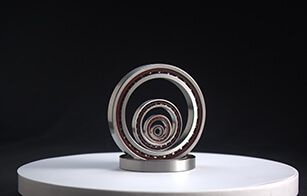
Different materials and heat treatments are used for bearings in different parts, such as heat treatment methods to improve the mechanical properties of 40CrMo steel at low temperatures (ambient temperature -40℃∽-30℃, bearing operating temperature around -20℃) such as impact energy, and control of the hardened layer depth, surface hardness, soft zone width and surface cracks of surface induction quenching.The speed increaser bearing is made of steel equivalent to foreign STF and HTF steel and the optimal content of retained austenite is controlled; the spindle bearing is made of electroslag remelting carburizing steel ZG20Cr2Ni4A as the quality of domestic vacuum degassed steel is still far behind.
2024-07-15
More >>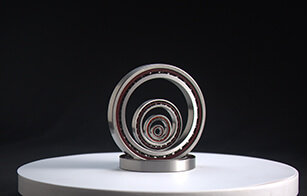
Introduction:Deep groove ball bearings are a fundamental component in various mechanical systems, playing a crucial role in enabling smooth and efficient rotational motion. These bearings are widely used in a wide range of applications, including automotive, industrial machinery, appliances, and more. In this article, we will explore the construction, working principle, advantages, and common applications of deep groove ball bearings.Construction:Deep groove ball bearings consist of four main components: an outer ring, an inner ring, a cage, and rolling elements (balls). The outer and inner rings have raceways that form a deep groove, hence the name "deep groove ball bearing." The rolling elements are positioned within the raceways and separated by the cage, which ensures their proper alignment and distribution.Working Principle:The primary function of a deep groove ball bearing is to support radial and axial loads while enabling smooth rotational motion. When a radial load is applied, the load is distributed evenly across the balls, which roll along the raceways. This design minimizes friction and reduces energy loss, allowing the bearing to operate with high efficiency. Additionally, deep groove ball bearings can accommodate axial loads in both directions, making them versatile for various applications.Advantages:Versatility: Deep groove ball bearings are available in a wide range of sizes, designs, and materials, making them suitable for diverse applications and operating conditions.High Speed Capability: These bearings are designed for high-speed rotation with low friction and reduced heat generation. They can handle rotational speeds of several thousand revolutions per minute (RPM), enabling efficient operation in demanding applications.Low Maintenance: Deep groove ball bearings are known for their durability and long service life. They require minimal maintenance, resulting in cost savings and increased productivity.Cost-Effective: With their widespread availability and competitive pricing, deep groove ball bearings offer a cost-effective solution for many industries.Applications:Deep groove ball bearings find applications in numerous industries and equipment, including:Automotive: They are used in wheel hubs, transmissions, engines, and other automotive components.Industrial Machinery: Deep groove ball bearings are employed in various machinery, such as electric motors, pumps, conveyors, and gearboxes.Appliances: They are found in household appliances like washing machines, refrigerators, and fans, ensuring smooth and reliable operation.Power Tools: Deep groove ball bearings are essential in power tools, such as drills, grinders, and saws, delivering precision and efficiency.Agricultural Machinery: These bearings are utilized in agricultural equipment like tractors, combines, and harvesters, enduring harsh conditions and heavy loads.Conclusion:Deep groove ball bearings are indispensable components that facilitate smooth and efficient rotational motion in a wide range of applications. Their versatility, high-speed capability, low maintenance requirements, and cost-effectiveness make them a preferred choice for engineers and designers. Whether in automotive, industrial, or household applications, deep groove ball bearings continue to play a vital role in ensuring reliable and precise mechanical performance.
2024-07-10
More >>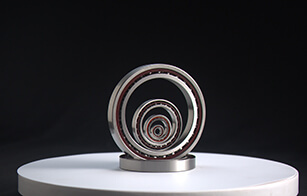
Proper maintenance practices play a crucial role in extending the service life of spherical roller bearings. Here are some key maintenance practices that can help maximize the lifespan of these bearings:Lubrication: Adequate lubrication is essential for the proper functioning of spherical roller bearings. Regularly lubricating the bearings with the recommended lubricant, in the right quantity and at the correct intervals, helps reduce friction, minimize wear, and prevent premature failure. It's important to follow the manufacturer's guidelines for lubrication, including the type of lubricant, viscosity, and re-greasing frequency.Contamination Control: Keeping spherical roller bearings free from contamination is vital for their longevity. Dust, dirt, moisture, and other contaminants can lead to increased wear, corrosion, and reduced performance. Implementing effective contamination control measures such as proper sealing, using protective covers, and maintaining clean operating environments can significantly extend the bearing's service life.Proper Handling and Installation: Correct handling and installation procedures are critical to prevent damage to spherical roller bearings. Care should be taken to avoid dropping or impacting the bearings during transportation or installation. Additionally, ensuring proper alignment, shaft and housing fits, and the correct tightening of fasteners can help distribute loads evenly and prevent excessive stress and premature failure.Regular Inspection and Monitoring: Regular inspection of spherical roller bearings allows for the early detection of potential issues and enables timely corrective actions. Periodic visual inspections, vibration analysis, temperature monitoring, and other condition monitoring techniques can help identify signs of wear, misalignment, lubrication issues, or other problems that may impact bearing performance. Promptly addressing any identified issues can prevent further damage and extend the bearing's service life.Replacement of Worn Bearings: When spherical roller bearings show signs of significant wear, damage, or reduced performance, they should be promptly replaced. Continuing to operate worn bearings can lead to increased friction, heat generation, and potential catastrophic failure. Regularly monitoring bearing condition and scheduling timely replacements when necessary is essential for maintaining optimal performance and preventing costly equipment downtime.Training and Knowledge: Ensuring that maintenance personnel are properly trained and have a good understanding of the specific maintenance requirements for spherical roller bearings is crucial. Training programs and access to technical resources provided by bearing manufacturers can help maintenance personnel acquire the necessary knowledge and skills to perform effective maintenance practices.By implementing these proper maintenance practices, industrial equipment owners can effectively extend the service life of spherical roller bearings, reduce downtime, and minimize overall maintenance costs. It is important to refer to the specific manufacturer's recommendations and guidelines for maintenance procedures relevant to the particular spherical roller bearings being used.
2024-07-04
More >>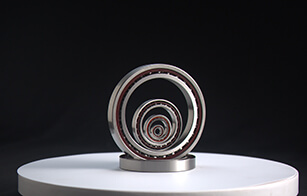
Premature spherical roller bearing failure can occur due to various factors. Some of the most common causes include:Insufficient Lubrication: Lack of proper lubrication or using the wrong type of lubricant can lead to increased friction, excessive heat, and accelerated wear. Insufficient lubrication can result in metal-to-metal contact, causing premature bearing failure.Contamination: Contamination, such as dust, dirt, water, or other foreign particles, can enter the bearing and cause abrasive wear, corrosion, or lubricant deterioration. Contaminants can disrupt the smooth operation of the bearing and lead to premature failure.Overloading: Applying excessive loads beyond the bearing's rated capacity can result in increased stress and fatigue, leading to premature failure. Overloading can occur due to incorrect bearing selection, improper installation, or changes in operating conditions.Misalignment: Improper alignment between the shaft and housing can cause excessive forces and misalignment stresses on the bearing. Misalignment can result from incorrect installation, shaft deflection, or thermal expansion. Spherical roller bearings are designed to handle some degree of misalignment, but excessive misalignment can lead to premature failure.Improper Handling and Installation: Mishandling or improper installation practices, such as dropping or impacting the bearing, incorrect fits, or improper tightening of fasteners, can cause damage to the bearing surfaces, raceways, or rolling elements. These damages can lead to premature failure during operation.Inadequate Maintenance: Neglecting regular maintenance activities, such as lubrication, inspection, and monitoring, can contribute to premature bearing failure. Lack of proper maintenance allows issues like lubrication degradation, contamination buildup, or early signs of wear to go unnoticed and unaddressed, leading to accelerated bearing deterioration.High Temperatures: Excessive heat generated due to high operating temperatures can degrade the lubricant, reduce its effectiveness, and cause thermal expansion and accelerated wear. Elevated temperatures can result from factors such as insufficient cooling, high friction, or prolonged operation in demanding conditions.Improper Shaft or Housing Fits: Inappropriate fits between the bearing, shaft, and housing can result in excessive clearance or interference, leading to increased stress and premature failure. The selection of the correct fits is crucial to ensure proper load distribution and minimize the risk of failure.Fatigue and Material Issues: Spherical roller bearings are subject to fatigue failure over time due to repeated stress cycles. Poor bearing design, substandard materials, or manufacturing defects can contribute to premature fatigue failure.Environmental Factors: Harsh operating environments, such as exposure to corrosive substances, excessive moisture, or abrasive contaminants, can accelerate bearing deterioration and lead to premature failure.It's important to note that these causes are not exhaustive, and multiple factors can interact to contribute to premature spherical roller bearing failure. To mitigate these risks, proper maintenance practices, adherence to manufacturer guidelines, regular inspection, and timely replacement of worn or damaged bearings are essential.
2024-07-01
More >>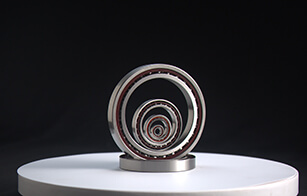
Slewing bearings are widely used in construction machinery, including earth-moving machinery, excavators, dismantling machines, stackers, graders, rollers, compactors, rock drills, tunneling machines, etc.1. Trailers: This type of bearing is used in many applications, the most important of which are in the transport industry, agricultural trailers, irrigation systems and airport luggage racks. In vehicle applications, the bearings transmit axial loads, radial loads and torque. In other applications, they mostly transmit axial loads.2. Wind power: Wind turbine bearings usually include yaw bearings, pitch bearings, and transmission system bearings (main shaft and gearbox bearings). ZYS provides customers with yaw bearings and pitch bearings. The yaw bearing is installed at the connection between the tower and the cabin, and the pitch bearing is installed at the connection between the root of each blade and the hub. Each wind turbine uses one set of yaw bearings and three sets of pitch bearings.3. Solar energy: Rotating solar panels are a good solution to increase energy. Due to the very compact design of the ZYS bearing, it can supply solar power fields.4. Medical equipment: The high-precision, low-noise, long-life, and high-reliability series of medical equipment spindle turntable slewing bearings developed by ZYS Bearings have been widely used in large medical equipment such as gamma knives, CT machines, and MRI machines.5. Industrial robot: ZYS turntable bearings are installed in the joints of the robot. This structure can achieve incredibly high-precision rotational motion.
2024-06-28
More >>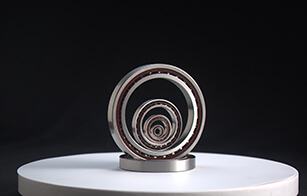
Slewing bearings are also called turntable bearings. Unlike ordinary bearings, slewing bearings usually have mounting holes, internal or external gears, lubricating oil holes and seals. Therefore, this product has the characteristics of compact structure, convenient guidance and convenient maintenance. Slewing bearings are composed of outer rings, inner rings, rolling elements, etc. They are mechanical parts that can withstand large axial, radial and tipping moments and have good load-bearing capacity.Advantages of slewing bearings1. The size of slewing bearings is generally large, with a diameter of 0.4~10 m, and some even reach 40 m. The bearings can be customized according to the characteristics of the mechanical equipment.2. Slewing bearings usually bear multiple loads, including axial force, radial force, and huge overturning moment. Therefore, slewing bearings can play the role of several sets of ordinary rolling bearings.3. The speed of the slewing bearing is relatively low, usually not exceeding 10 rpm. In addition, in most cases, the slewing bearing does not rotate continuously, but only rotates back and forth at a specific angle, just like a "swing bearing".4. There are great differences between slewing bearings and rolling bearings in manufacturing process, materials and heat treatment. The slewing bearing has a gear ring for rotary drive and a seal for dust prevention.5. The size of the slewing bearing is very large. Unlike ordinary bearings, it is not mounted on the central shaft and installed in the bearing box, but is fastened to the upper and lower supports with screws.
2024-06-25
More >>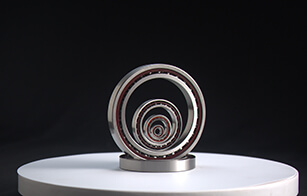
Thrust angular contact bearings are a type of precision bearings designed to handle both axial (thrust) and radial loads. They belong to the family of angular contact bearings, which are characterized by the contact angle between the bearing's inner and outer raceways.Thrust angular contact bearings are widely used in the following industries:Aerospace: Thrust angular contact bearings are extensively utilized in the aerospace industry for applications such as aircraft engines, landing gear systems, and control surfaces. These bearings provide high load-carrying capacity, precise axial positioning, and reliable performance in demanding aerospace environments.Automotive: The automotive industry relies on thrust angular contact bearings for various components, including transmissions, wheel hubs, and steering systems. These bearings handle both axial and radial loads, ensuring smooth and efficient operation of automotive systems.Industrial Machinery: Thrust angular contact bearings find widespread use in industrial machinery such as machine tools, pumps, compressors, and gearboxes. They offer high-speed capability, excellent rigidity, and the ability to withstand heavy thrust loads, making them essential for industrial applications.Energy and Power Generation: In the energy sector, thrust angular contact bearings are utilized in generators, turbines, and other power generation equipment. These bearings provide reliable support, high rotational accuracy, and resistance to axial forces, ensuring efficient and durable operation in power generation facilities.Oil and Gas: Thrust angular contact bearings are commonly employed in oil and gas exploration, production, and refining equipment. They are used in pumps, compressors, and drilling machinery, where they handle high axial loads and provide long-lasting performance under harsh operating conditions.Heavy Machinery and Construction: Thrust angular contact bearings play a crucial role in heavy machinery and construction equipment, such as cranes, excavators, and loaders. They enable efficient load distribution and withstand heavy axial and radial forces encountered in these applications.These are just a few examples of the industries where thrust angular contact bearings are widely applied. Their versatility, load-carrying capacity, and ability to handle both axial and radial loads make them essential components in numerous industrial sectors.
2024-06-19
More >>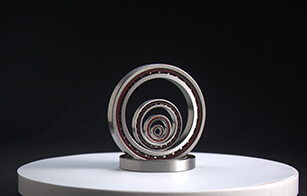
Machine tool spindles typically use precision bearings that can handle high speeds, high accuracy, and withstand both radial and axial loads. The specific types of bearings commonly used in machine tool spindles include:01Deep Groove Ball BearingsThese bearings are primarily used to withstand radial loads. They are pre-assembled with a fixed clearance and cannot be adjusted, making them suitable for applications that do not require high precision or preload, such as ordinary drilling spindle.02Angular Contact Ball BearingsThese bearings can withstand both radial and axial loads. They need to be installed in pairs and can improve the spindle stiffness through preload. Angular contact ball bearings come in various contact angles, such as 15°, 25°, 40°, each with specific application scenarios.03Double Direction Thrust Angular Contact Ball BearingsThese bearings typically have a contact angle of 60° and are suitable for applications that require bidirectional axial loads. They are often used in combination with double row cylindrical roller bearings for lathe, grinder, drill, milling machine, and boring machine spindles.04Double Row Cylindrical Roller BearingsThese bearings can withstand large radial loads and allow for high speeds. They are commonly used in high-speed rotating machine tool spindles.05Tapered Roller BearingsTapered roller bearings also have high speed and load-carrying capabilities, being able to withstand both radial and axial loads. Double row tapered roller bearings can handle bidirectional axial loads as well.Each of these bearing types has its own characteristics. Depending on the specific requirements and performance needs of the machine tool, the appropriate bearing type can be chosen for use.
2024-06-18
More >>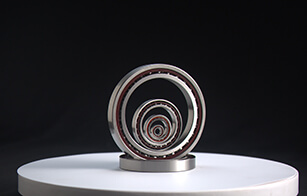
IntroductionCross roller bearings represent a significant advancement in mechanical engineering, playing a vital role in various industries such as robotics, machine tools, medical equipment, and aerospace. These bearings are designed to withstand high radial, axial, and moment loads while maintaining superior accuracy and rigidity. In this article, we delve into the features, benefits, and applications of cross roller bearings, highlighting their efficiency and versatility in modern engineering.Understanding Cross Roller BearingsCross roller bearings, also known as crossed roller bearings or crossed roller slide bearings, are a type of rolling element bearing that combines cylindrical rollers arranged in a crisscross pattern. The rollers are positioned orthogonal to each other between two parallel inner and outer rings. This unique design allows for high load-carrying capacity, precise rotational motion, and reduced frictional resistance.Key Features and Benefits2.1 High Load Capacity: Cross roller bearings are engineered to support both radial and axial loads simultaneously. The crisscross arrangement of cylindrical rollers distributes the load evenly, ensuring optimal load-carrying capacity and improved operational efficiency.2.2 Rigidity and Accuracy: The crossed roller design provides exceptional rigidity, allowing for precise and repeatable motion control. These bearings exhibit minimal elastic deformation, ensuring accurate positioning and reduced backlash, essential in applications that demand high precision.2.3 Compact Design: Cross roller bearings have a compact structure due to their roller arrangement, enabling them to fit into tight spaces and applications with limited radial or axial room. Their compactness enhances the overall system design and allows for increased flexibility in various machinery configurations.2.4 Frictional Resistance: Cross roller bearings significantly reduce friction due to the rolling motion of the cylindrical rollers. This results in smoother and more efficient operation, translating into energy savings and extended service life.Applications of Cross Roller Bearings3.1 Robotics: Cross roller bearings find extensive use in robotic systems, where precision, rigidity, and compactness are crucial. They are employed in robot joints, rotary tables, and manipulators, enabling smooth and accurate motion control for tasks such as assembly, welding, and pick-and-place operations.3.2 Machine Tools: Cross roller bearings are widely used in machine tools, including milling machines, lathes, and grinding machines. Their high rigidity and accuracy contribute to improved machining precision and surface finish. They facilitate the smooth movement of spindles, tables, and tool carriers, enhancing the overall performance of these machines.3.3 Medical Equipment: Cross roller bearings play a vital role in medical devices such as X-ray machines, CT scanners, and surgical robots. The bearings' ability to handle high loads, maintain precision, and operate in confined spaces ensures the reliability and accuracy of these critical medical instruments.Maintenance and ConsiderationsTo ensure optimal performance and longevity of cross roller bearings, regular maintenance is essential. Proper lubrication, periodic inspection for wear, and protection from contamination are crucial factors to consider. Additionally, understanding the specific load requirements, speed limits, and operating conditions is vital for selecting the appropriate cross roller bearing for a given application.Cross roller bearings are integral components in diverse industries, providing exceptional load-carrying capacity, rigidity, and accuracy. Their compact design and reduced frictional resistance make them an ideal choice for applications where space constraints and energy efficiency are paramount. By incorporating cross roller bearings into engineering designs, manufacturers can achieve enhanced performance, increased productivity, and improved product quality in a wide range of applications.
2024-06-14
More >>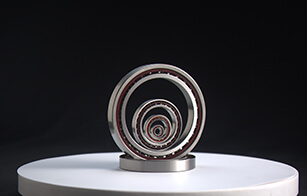
When selecting the appropriate cross roller bearing for a specific application, several key design considerations should be taken into account. These considerations ensure that the bearing can meet the performance requirements and operate efficiently in the intended environment. Here are some essential factors to consider:1. Load Requirements: Determine the expected radial, axial, and moment loads that the bearing will need to support. It is crucial to select a cross roller bearing with a load capacity that exceeds or matches the anticipated loads to ensure reliable and long-lasting performance.2. Rigidity and Accuracy: Consider the required level of rigidity and accuracy for the application. Applications demanding high precision, such as robotics or machine tools, require bearings with excellent rigidity and minimal elastic deformation to achieve accurate positioning and reduce backlash.3. Space Constraints: Assess the available space for bearing installation. Cross roller bearings are known for their compact design, making them suitable for applications with limited radial or axial room. Ensure that the selected bearing can fit within the available space without compromising performance.4. Speed and Operating Conditions: Determine the rotational speed and operating conditions of the application. Cross roller bearings have specific speed limits, and exceeding these limits can lead to premature wear or failure. Consider factors such as temperature, humidity, and exposure to contaminants when selecting a bearing suitable for the operating environment.5. Mounting and Assembly: Evaluate the mounting and assembly requirements of the bearing within the overall system. Consider factors such as ease of installation, alignment, and any special mounting considerations specific to the application. Some cross roller bearings may require additional components or customized mounting arrangements.6. Lubrication and Maintenance: Understand the lubrication requirements and maintenance procedures for the selected bearing. Proper lubrication is crucial for reducing friction and wear, ensuring smooth operation and extending the bearing's service life. Consider the accessibility for lubrication and any maintenance requirements in the application.7. Cost and Availability: Consider the overall cost and availability of the selected cross roller bearing. Evaluate factors such as the initial cost, potential maintenance costs, and the availability of spare parts. It's essential to balance performance requirements with cost considerations to achieve the optimal solution for the application.By carefully considering these design considerations, engineers and designers can select the most suitable cross roller bearing for a specific application, ensuring optimal performance, longevity, and reliability.
2024-06-12
More >>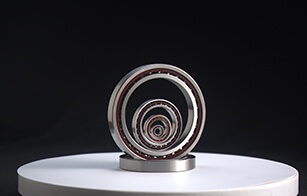
Slewing bearings can be categorized into three types: external tooth slewing bearings, internal tooth slewing bearings, and toothless slewing bearings. When choosing between internal tooth and external tooth slewing bearings, it is important to consider their advantages and disadvantages.Internal tooth slewing bearing: The internal gear of this type is located inside the slewing bearing, giving it a relatively clean appearance. The engagement between the driving gear and the slewing bearing takes place internally, eliminating the need for a safety cover. The internal gear provides better resistance to dust, and the lubricant can be retained for a longer duration. The contact stress during internal tooth meshing is low, resulting in minimal wear and a longer service life. However, due to the size limitations of the internal tooth slewing bearing, the internal space is relatively compact. This can make installation and initial debugging more challenging, as well as fault diagnosis and gear meshing inspection in later stages.External tooth slewing bearing: The teeth of the external tooth slewing bearing are located outside the slewing bearing, making it easier to install and allowing for maximum utilization of the limited space within the bearing. Fault diagnosis and gear meshing inspection are simpler in this configuration. The larger pitch diameter of the ring gear enables a higher transmission ratio and significantly reduces the circumferential force and torque on the pinion.In summary, the choice between internal tooth and external tooth slewing bearings depends on the specific requirements of the application. Internal tooth slewing bearings offer advantages such as cleanliness, better dust resistance, lower wear, and longer service life. However, they may pose challenges in terms of limited internal space and installation/debugging processes. On the other hand, external tooth slewing bearings are easy to install, allow for efficient space utilization, and facilitate fault diagnosis and gear meshing inspection. They are particularly suitable for applications requiring a higher transmission ratio and reduced circumferential force and torque on the pinion.
2024-06-06
More >>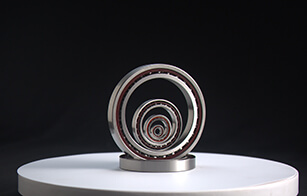
The thermal processing link is indispensable for the working of a slewing bearing. It is crucial to thermally process the pulley part of the slewing bearing to ensure its proper functioning. The pulley part plays a vital role in effectively supporting all objects, making it necessary to consider various aspects during the hot processing stage. Today, we will provide you with detailed instructions on the hot processing of slewing bearings.In general, the hot processing of slewing bearings follows a set of correct operational procedures. The typical process steps include forging, roughing, quenching and tempering, finishing, flame surface quenching of the raceway surface, and raceway surface grinding. The flame quenching is specifically applied to one of the raceway surfaces to create a soft belt. The soft belt refers to the area that has not undergone heat treatment, and its formation is essential for the heat treatment process. Due to the relatively large diameter of the raceway circle in slewing bearings, flame surface quenching is commonly employed. This method involves heating the workpiece's surface with acetylene and then rapidly cooling it with water. The process is performed continuously by moving the heated flame gun and water gun along the circle of the workpiece.When the movement approaches 360 degrees, the heating and water spray must be immediately halted. The circular areas of heating and water spray should not overlap, as overlapping can lead to cracks in the workpiece (heat treatment at an angle greater than 360 degrees on the circle). The tangential width of the unheated area, known as the soft belt in the slewing ring, is typically 15 mm. The specific position of the soft belt is usually marked with the letter "S" on the workpiece, which is a crucial indication found in both imported and domestically produced standard products.The precautions for the slewing bearing during the hot working process align with the information we provided earlier. It is essential to be attentive and follow these precautions uniformly to ensure the correct operation of the pulley part in the slewing bearing.
2024-06-04
More >>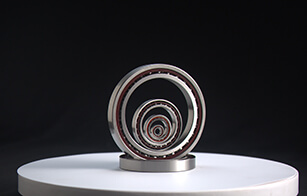
Recently, according to the "Notice on the Evaluation Results of the Construction of the Provincial Green Manufacturing System in Henan Province in 2024" issued by the Henan Provincial Department of Industry and Information Technology, Luoyang Bearing Research Institute Co., Ltd. was awarded the honorary title of "Provincial Green Factory". This is another achievement certification obtained by ZYS after passing the "Energy Management System Certification". It is a recognition of ZYS's long-term adherence to energy conservation and consumption reduction, clean production, and green development. It marks that ZYS has taken a new step in the construction of green manufacturing systems such as low-carbon management, energy consumption improvement and resource utilization."Green Factory" is a national selection activity organized by the Ministry of Industry and Information Technology. It is divided into national, provincial and municipal levels. It is an authoritative recognition given to enterprises that meet the "green development" requirements. It aims to improve my country's green manufacturing system, comprehensively promote green manufacturing, and help the industrial field achieve carbon peak and carbon neutrality goals.In recent years, Luoyang Bearing Research Institute Co., Ltd. has continued to improve production efficiency, reduce energy consumption and waste generation, and achieve efficient use of energy through technological innovation, management optimization, and process equipment improvement, with remarkable results. In May, the "High-end Precision Bearing Intelligent Manufacturing Demonstration Production Line" project of the Precision Bearing Manufacturing Department of Luoyang Bearing Research Institute Co., Ltd. won the second prize in the second "Zero Carbon Zhongyuan Cup" Henan Green Manufacturing Technology Application Innovation Competition, which is a full affirmation of the company's promotion of green and low-carbon technology applications in the bearing industry.Being rated as a provincial green factory is a concentrated reflection of Luoyang Bearing Research Institute Co., Ltd.'s full role as a leading enterprise in the bearing industry, its active implementation of the "dual carbon" strategy, and its demonstration of the results of green development and construction. Next, ZYS will take this provincial green factory certification as an opportunity to continue along the direction of digital and green development, enhance energy-carbon construction, actively promote the creation of national green factories, and use practical actions to lead the bearing industry towards a greener and more sustainable future, and help my country's bearing industry develop in a green, low-carbon and high-quality manner.
2024-05-31
More >>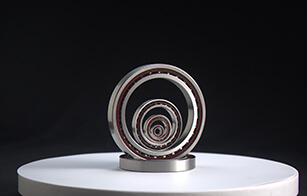
Rolling bearing has two kinds of structure with and without cage. Large bearings are generally required to withstand large loads, it is possible to not with cage, but in the inner and outer raceway filled with rolling elements. But: most small and medium-sized rolling bearings are with cage, the main role of the cage is:The bearing cage separates the rolling elements at equal distances and spreads them evenly around the circumference of the raceway to prevent the rolling elements from colliding and rubbing against each other;Guide and drive the rolling body on the correct raceway;The bearing cage space can store grease;In separating types of bearings, the cage can combine the rolling element and the collar to prevent the rolling element from falling out.Nylon bearing cages have low vibration, low noise, low heat generation, high load carrying capacity, which can improve the limiting speed and life of bearings, and usually can work stably for a long time in the temperature range of -40℃ to +80℃, and have compatibility with bearing lubricants, nylon bearing cages are suitable for electric motors, machine tools, gear transmission shafts, pumps, compressors and other fields.Nowadays, nylon bearing cages are used more and more, so what are its advantages?The nylon cage of bearings is a new generation of products to replace the copper cage and iron cage, which has many advantages compared with the metal cage:First, it is light in weight, which improves the flexibility of the bearings, and if it is used in electrical appliances or energy-consuming products, it has a great effect on energy saving.Second, it is light in weight, bearing in the rotation process, the centrifugal force generated by itself is relatively small, more suitable for high-speed working conditions.Thirdly, it has low noise, which is the first choice for manufacturing silent bearings, especially for electrical appliances with high noise requirements, nylon cages are the first to be chosen.Fourthly, it has low friction, which can effectively extend the service life of the bearings. The friction of nylon cage on rolling body is lower than the friction of metal cage on steel ball, which greatly extends the service life of the bearings.Fifth, it is simple to manufacture, greatly improving production efficiency and reducing production costs.Although nylon cages have so many advantages, there are also many disadvantages in the process of bearing use, mainly:Nylon bearing cage bearings can only be operated at room temperature.The compressive strength of nylon bearing cages is not as high as that of sheet metal cages, and the capacity of the load is not as high.Nylon bearing cage bearings can not be used in the corrosive effect on its environment to use.In short, the bearing metal cage and nylon cage have their own advantages and disadvantages, in the choice according to the use of requirements, such as the requirements of low-noise electrical appliances to use, we must choose nylon cage bearings. In the high temperature, load, vibration equipment, give preference to pressed steel cage.
2024-05-27
More >>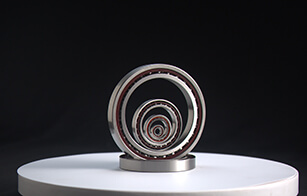
Machine tool bearings, as essential components of machine tools, must possess specific mechanical characteristics to meet the requirements of their applications. These characteristics include:High precision:Machine tool bearings must exhibit high manufacturing accuracy to ensure the precision and stability of the machine tool. This includes precise control of rotation accuracy and pre-tightening force in spindle bearings, guaranteeing the desired machining accuracy.High-speed operation:Modern machine tools operate at increasingly higher speeds, necessitating bearings with enhanced speed capacity and stability. Additionally, bearings used in high-speed applications should demonstrate excellent heat dissipation and friction performance to ensure reliable operation.Large load-bearing capacity:Machine tools encounter substantial loads during the machining process, demanding bearings with a significant load-bearing capacity and rigidity. This ensures that the machine tool remains free from excessive deformation or vibration when subjected to heavy loads.Long service life:The service life of machine tool bearings has a direct impact on maintenance costs and machine tool efficiency. High-quality bearings maintain stable performance over an extended period, reducing the frequency of maintenance and replacement.Good lubrication performance:Effective lubrication is crucial for reducing friction and wear in bearings, leading to prolonged service life. Lubricants also aid in heat dissipation and noise reduction. Therefore, selecting suitable lubricants and implementing appropriate lubrication methods significantly influences the performance and longevity of machine tool bearings.Impact resistance and vibration:Machine tools experience various external forces during the machining process. Hence, bearings need to possess excellent impact resistance and vibration damping capabilities, ensuring that the machine tool remains undamaged and free from excessive deformation when subjected to external forces.Strong adaptability:Machine tool bearings should exhibit adaptability to different working conditions and environments, including temperature, humidity, and atmosphere. This ensures that the machine tool maintains stable performance and accuracy across diverse operating conditions.
2024-05-23
More >>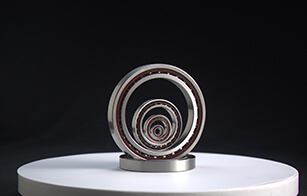
Definition of ultra-low temperature bearings:Ultra-low temperature bearings are bearings specifically designed to function in environments characterized by extremely low temperatures, typically below -150 ℃. These bearings incorporate special materials and designs to ensure optimal performance and stability under such extreme cold conditions. They find widespread applications in industries such as aerospace, liquefied natural gas, and cold chain logistics.Applications of ultra-low temperature bearings:Ultra-low temperature bearings find widespread utilization across various industries, including aerospace, liquefied natural gas, and cold chain logistics. In the aerospace sector, they are employed in critical components such as gesture control systems and propulsion mechanisms for satellites and rockets. Within the liquefied natural gas industry, ultra-low temperature bearings are integral to the transmission systems of storage and transportation equipment. In cold chain logistics, these bearings facilitate the smooth operation of transmission systems in refrigeration equipment, ensuring stability in low-temperature environments.Materials for ultra-low temperature bearings:The selection of materials plays a critical role in the performance of ultra-low temperature bearings. To withstand the challenges of extremely low temperature environments, these bearings employ materials known for their low-temperature resistance, such as stainless steel and nickel-based alloys. These materials retain favorable mechanical properties and stability even at exceedingly low temperatures, enabling the bearings to operate reliably over extended periods.Design considerations for ultra-low temperature bearings:The design of ultra-low temperature bearings is of paramount importance. In addition to conventional rolling elements and cages, special attention must be given to the choice of lubricants and sealing performance. Lubricants tend to solidify or thicken at extremely low temperatures, necessitating the use of specialized lubricants like grease or solid lubricants in ultra-low temperature bearings. Effective sealing is also crucial to prevent external impurities and gases from infiltrating the bearing's interior.Working temperature range of ultra-low temperature bearings:The working temperature range of ultra-low temperature bearings varies depending on the specific application field. In the aerospace industry, ultra-low temperature bearings typically operate within a range of -150 ℃ to -270 ℃. For liquefied natural gas applications, the working temperature range is typically around -163 ℃. In cold chain logistics, the working temperature range is determined by specific requirements, commonly falling between -40 ℃ and -70 ℃.
2024-05-20
More >>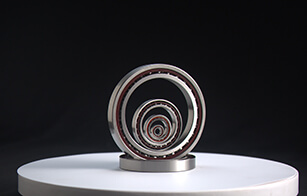
Here are the key points about ceramic bearings:What is ceramic?· Ceramic materials are derived from clay and made through a heating/baking process. They are commonly found in art objects, utensils, tiles, brake discs, etc.Properties of ceramic bearings:· Ceramic bearings are lighter, more wear-resistant, and electrically insulating compared to standard steel bearings.· There are two main types:1. Hybrid bearings - have ceramic balls/rollers and steel rings2. Full ceramic bearings - made entirely of ceramics like silicon nitride or zirconium oxide· Key advantages:· Electrically insulating - prevent current flow that can damage bearings· Suitable for high speeds· Highly resistant to wear, abrasion, corrosion, and high temperatures· Ceramic bearings have longer life and require less maintenance than steel bearings.Considerations:· The manufacturing process for ceramic bearings is complex and energy-intensive, making them more expensive.· It's important to determine which features are most important for your specific application before choosing between steel, hybrid, or full ceramic bearings.Overall, ceramic bearings offer significant benefits in certain applications, especially with the growth of electric vehicles, but the production costs must be weighed against the performance advantages.
2024-05-17
More >>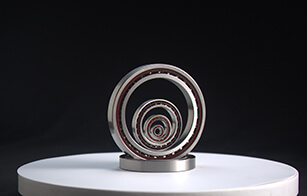
The electric spindle is a precision component characterized by high speed and high rigidity. To ensure its optimal performance and longevity, it is crucial to adhere to proper operating procedures. ZYS BEARING recommends the following guidelines for users:Before starting the machine, ensure that the spindle cooling system is functioning correctly. Only operate the electric spindle when the cooling system is active. It is essential to check the fan and pump functionality beforehand. For water-cooled spindles, inspect the cooling water for impurities and ensure smooth water flow through the pipes.When using the electric spindle, follow the practice of gradually increasing the speed from low to high, allowing for preheating. Once the spindle reaches the required speed and exhibits stable no-load operation, commence the processing. This approach protects the spindle and minimizes wear.Avoid knocking or impacting the spindle fixture and rotor end threads during operation. Such actions can reduce the lifespan of parts and impact the spindle's performance.When replacing the cutting tool, ensure it is done correctly. Apply even force during tool loading, align the tool thread with the rotor end thread, and then secure it. If a tool change is necessary during operation, allow the spindle to cool down before proceeding.If the fixture becomes stuck on the rotor end of the spindle during operation, never attempt to remove it by tapping. Use appropriate tools to extract the clamp without damaging the rotor threads. Clean the rotor taper holes and fixtures to prevent premature spindle wear and maintain the quality of processed workpieces. If the fixture has lost its accuracy, it should be promptly replaced.ZYS offers training programs on spindle operation and maintenance for electric spindle operators. For spindle inquiries, please contact sales@zys.com.cn.
2024-05-11
More >>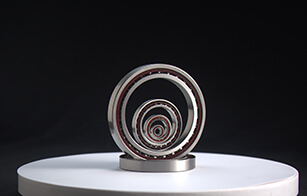
The function of thin-walled bearings is to separate the rotating body by a certain distance, prevent the rotating body from falling into the rolling bearing, and correctly control the rotation of the rotating body. During operation, rolling friction will cause heat and damage, especially in the case of high-speed operation, friction damage and heat will increase, and in more serious cases, damage will increase. It will cause the rolling bearing to catch fire, crack, and lead to failure.Among the reasons for the damage of thin-walled bearings, the quality of bearing materials is one of the key reasons. Therefore, the raw materials are required to have the following characteristics as much as possible:1. Have stable compressive strength and plastic deformation, can withstand certain loads and impact forces, and have good plastic deformation and bending strain. 2. The friction with the rotating body is small and the wear resistance is good. 3. The heat transfer coefficient should be as high as possible. 4. The proportion is small, and the thermal expansion coefficient is similar to the inverted type. 5. Since the maintenance of steel frame structures is usually complicated, the materials used are required to have high-quality manufacturing performance. 6. The raw materials for metal material mold forming must have high-quality plastic deformation and plasticity. 7. The material has high-quality fiber laser cutting performance. 8. The raw materials for the introduction of thin-walled bearings must have high-quality introduction performance.Thin-walled bearings can also be coated to improve internal fit and achieve the desired running characteristics.
2024-05-09
More >>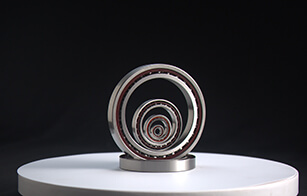
On December 2, the key project "Research and Application of Key Technologies for High-Performance Motor Insulated Bearings" of the national key R&D program "Manufacturing Basic Technologies and Key Components" led by ZYS held a comprehensive performance evaluation meeting in Luoyang. More than 40 people including project leaders, subject leaders, project technical backbones and project management personnel attended the meeting. Gao Yuanan, Secretary of the Party Committee and Chairman of the Institute of ZYS, attended the meeting and delivered a speech. The meeting was chaired by Li Wenchao, deputy general manager and chief engineer of ZYS.At the meeting, each project team reported on the implementation of the project. Project responsible expert Chen Bingkui and special experts Li Dongru and Wang Shaoping, as well as 7 peer experts including Zhou Yu, Chairman of the China Bearing Industry Association, formed a review expert group to review the data for each topic. Questions and comments. In the end, all five topics passed the comprehensive performance evaluation.This project is led by ZYS, with participation from 9 units including including HIT, Shanghai Union Axis, Xi 'an CRRC, Xi 'an Jiaotong University, Lanhua Institute, River University of Science and Technology, Beijing Jiaotong University, Nanjing Tianma and Zhengzhou Sanmo Institute. The project is oriented towards traction Insulated bearings used in motors, wind turbines and other fields are faced with the problems of poor quality consistency, low life reliability and lack of performance evaluation system in batch manufacturing. Key issues such as bearing optimization design, coating preparation, precision machining, test evaluation and application verification have been carried out. Collaborative technological research has enabled applications in areas such as rail transit or wind turbines.This time, the five topics passed the comprehensive performance evaluation, which is crucial and significant to the overall acceptance of the project. As the project lead unit, ZYS will, as always, provide all-round guarantees for all project tasks to ensure that the project successfully passes acceptance. In the next step, we will strengthen the transformation of project results, break the foreign technology monopoly as soon as possible, realize the comprehensive domestic substitution of insulated bearings, strengthen my country's high-speed rail and wind power industry chain, and contribute to the comprehensive implementation of the manufacturing power and innovation-driven development strategy!About ZYSZYS focuses on developing high-performance bearing products for key units of national economic construction. We perform batch production of various high-rank bearing products and components with inner diameter of 0.6mm to outer diameter of 6.8m. We are mainly engaged in the research, development, production and sales of precision bearing, special bearing, high-speed machine tool spindle, bearing special equipment, bearing testing instruments, bearing testing machine and bearing special materials, which are widely used in the fields of aerospace, machine tools, wind power generation, mine metallurgy, petrochemical, medical equipment, automobiles and rail transit, construction machinery, intelligent manufacturing services, etc.Contact ZYSE-mail:sales@zys.com.cnTel: 0086-379-64884656Web:www.zysbearing.com
2023-12-05
More >>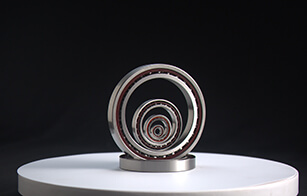
From November 27th to 30th, the head of quality management, deputy director of the cryogenic equipment design department and technical experts of a well-known Russian company formed an audit team to conduct an on-site two-party audit and certification of the ZYS Precision Components Division. ZYS Deputy General Manager Jiang Wei and General Manager of Precision Components Division Yang Hu attended the first review meeting.The audit team conducted a comprehensive and systematic inspection, evaluation and audit focusing on the production and manufacturing, quality control, human resources, safety and environmental protection of precision bearings. The Precision Components Division and relevant departments attached great importance to this audit. The review personnel actively and efficiently cooperated, and the on-site audit work was successfully completed according to the audit plan.At the final meeting, the audit team unanimously believed that ZYS has a good foundation and strength in quality assurance capabilities, production and supply capabilities, technical service capabilities, safety and environmental protection, etc., which meets its relevant requirements for qualified low-temperature bearing suppliers, and provided suggestions for improvement Communicate. After comprehensive evaluation, ZYS won high recognition from users with a high score of 94.27.Jian Xueli, director of the ZYS Quality Assurance Department, Guo Zhiguang, director of the Work Safety Department, Sun Dong, deputy general manager of the Precision Components Division, and relevant responsible persons attended the first meeting of the review.
2023-12-02
More >>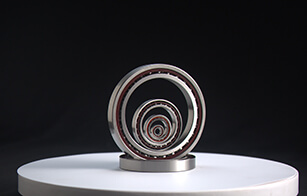
Recently, the Henan Provincial Science and Technology Research and Development Joint Fund (Industrial) approved the project "Research and Industrialization of Key Technologies for High-speed Oil-free Lubricated Bearings and Motors for Hydrogen". In order to smoothly carry out the project, develop a reasonable implementation plan, and clarify the project implementation plan, the leading unit ZYS successfully held a project kickoff meeting and implementation plan demonstration meeting in Luoyang on October 31st.Jiang Yongsheng, a fourth level researcher from the Luoyang Science and Technology Bureau, and Yao Tongwei, the chief of the department in charge of the project, attended the meeting and delivered a speech; Li Wenchao, Deputy General Manager and Chief Engineer of the ZYS, delivered a speech on behalf of the project team; More than 20 people, including 5 invited evaluation experts, project leaders, project management personnel, financial assistants, and R&D backbone, participated in this meeting, which was presided over by Yin Yanjing, Director of the Research Office of ZYS.This project belongs to the Henan Provincial Science and Technology Research and Development Joint Fund (Industrial), initiated by the Provincial Department of Finance and the Provincial Department of Science and Technology, and jointly funded by cities (counties), enterprises, and other non-profit funds. The support method is free funding, and it belongs to the category of provincial science and technology research and development plan joint funds; The project is led by ZYS and jointly participated by Henan University of Science and Technology, Beijing Jiaotong University, North China University of Water Resources and Hydropower, and Zhengzhou Abrasive Grinding Research Institute Co., Ltd. The project goal is to develop a full chain industrial technology capability for the production, testing, and application of ultra-high speed oil-free bearings, and to develop a mass production capability for 10-100 kW high-speed motors, which can be applied in fields such as hydrogen energy vehicles.At the kickoff meeting, the project executor Yu Xiaokai presented an overall project plan report from four aspects: the overall project situation, project implementation plan, project implementation mechanism, and project funding execution mechanism. Each participating research unit presented a project implementation plan report. The leaders of the competent department and evaluation experts evaluated the project and research implementation plan and proposed further improvement suggestions.The successful holding of the project kickoff meeting marks the entry of the feasibility study and analysis into the planning and implementation stage of the "Research and Industrialization of Key Technologies for High-speed Oil-free Lubricated Bearings and Motors for Hydrogen" project. It is a milestone at the beginning of the project, directly related to the smooth implementation of the project and preparing for better cooperation and implementation among various topics in the future. The implementation of this project will provide strong impetus for ZYS in the research and production of ultra-high speed oil-free bearings, and play a positive role in enhancing the overall strength of Luoyang's bearing industry, improving the bearing industry chain, and further promoting the innovative and high-quality development of the national bearing industry.
2023-11-15
More >>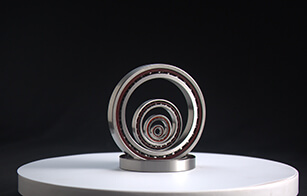
On September 26, 2023, the international standard ISO 24652 "Spherical plain bearings - Spherical plain bearings rod ends for hydraulic fluid power cylinders" in the field of rolling bearings, developed under the leadership of China, was officially released. This marks the first time that China has taken the lead in formulating an international standardization document in the field of rolling bearings, ISO/TR 20051:2010 "Derivation of Rated Load Coefficient of Spherical plain bearings", and has also taken the lead in formulating a formal international standard in the field of rolling bearings, thus achieving another breakthrough in China's international standardization work in rolling bearings.ISO 24652 was led by Luoyang Bearing Research Institute Co., Ltd., and jointly drafted by Fujian Longxi Bearing (Group) Co., Ltd., Taizhou Kejin Bearing Co., Ltd., and Shanghai Bearing Technology Research Institute. This international standard is based on the industry standard JB/T 13611-2019 "Spherical plain bearings - Spherical plain bearings rod ends for hydraulic fluid power cylinders" in China. It was established in November 2019 and has undergone 12 international and 7 domestic working group meetings, lasting for nearly 4 years. Finally, it has been successfully released.Spherical plain bearings rod ends for hydraulic fluid power cylinders are mainly used on the piston rod of hydraulic cylinders, transmitting large institutional loads by connecting the cylinder body and accessories. This type of Spherical plain bearings is widely used in hydraulic cylinders on various construction equipment, agricultural machinery, lifting equipment, and heavy-duty control equipment. ISO 24652 specifies the structural types, dimensions, tolerances, and technical requirements of Spherical plain bearings rod ends for hydraulic fluid power cylinders, which helps to unify the delivery of Spherical plain bearings rod ends for hydraulic fluid power cylinders by manufacturers from various countries and ensure that users use standardized connectors.As a domestic technology counterpart of the International Organization for Standardization Rolling Bearing Technical Committee (ISO/TC4), ZYS will further consolidate industry strength and promote more Chinese technical solutions to the international standardization stage!
2023-10-09
More >>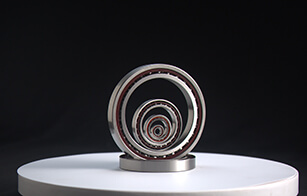
On September 21, ZYS Party Committee Secretary and Chairman Gao Yuanan was invited to attend the "Heli Cup" Second National Machinery Industry Product Quality Innovation Competition Award Ceremony. The "Overrunning Clutch Component Product Quality Innovation Project" applied by ZYS went through multiple rounds of fierce competition organized by industry experts, including online preliminary review, professional association review, and final review, and finally stood out from more than 440 applied projects across the country and won the award. Gold medal in the National Machinery Industry Product Quality Innovation Competition.The National Machinery Industry Product Quality Innovation Competition is a national quality evaluation activity for the machinery industry initiated by the China Machinery Industry Federation. The event focuses on the quality issues of machinery industry products, solving bottlenecks in development, continuously improving and perfecting the industry's scientific and technological innovation system, and promoting the transformation and upgrading of the machinery industry.Taking technological innovation as the guide and product quality as the guarantee is the only way and the fundamental strategy to achieve an everlasting business and practice high-quality development. ZYS will take this award as an opportunity to continue to adhere to innovation-driven, quality optimization and other measures, and create a "brand benchmark" for the machinery manufacturing industry with more original and breakthrough green, high-end, and localized solutions to promote implementation A manufacturing powerhouse and a quality powerhouse will inject surging momentum and contribute core strength!
2023-09-27
More >>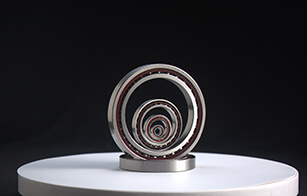
At the 2023 Dong'e China Bearing Rolling Element Industry High-Quality Development Conference held on July 17, Dong'e Steel Ball Group and Luoyang Bearing Research Institute Co., Ltd. signed the "Agreement on the Joint Construction of the National Rolling Element Technology R&D Center". The two parties will carry out in-depth industry-university-research cooperation in the field of rolling element research and development, and jointly build a national-level technology R&D center.Luoyang Bearing Research Institute Co., Ltd. is a high-tech enterprise specializing in the development of "High-end, precise, advanced, unique, Non-standard" bearing products for the key units in various fields of national economic construction. Its predecessor, Luoyang Bearing Research Institute, was established in 1958. It is the only state-level comprehensive research institute in China's bearing industry. In 1999, it entered China National Machinery Industry Group Co., Ltd. and transformed into a science and technology enterprise.ZYS focuses on developing high-performance bearing products for key units of national economic construction. We perform batch production of various high-rank bearing products and components with inner diameter of 0.6mm to outer diameter of 6.8m. We are mainly engaged in the research, development, production and sales of precision bearing, special bearing, high-speed machine tool spindle, bearing special equipment, bearing testing instruments, bearing testing machine and bearing special materials, which are widely used in the fields of, machine tools, wind power generation, mine metallurgy, petrochemical, medical equipment, automobiles and rail transit, construction machinery, intelligent manufacturing services, etc.
2023-07-20
More >>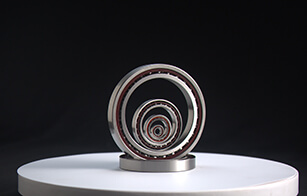
Angular contact ball bearings are a type of precision rolling element bearing widely used in various applications that involve rotational motion. These bearings are designed to handle both radial and axial loads simultaneously, making them ideal for applications where there is a combination of radial and axial forces acting on the bearing.The unique design of angular contact ball bearings allows them to accommodate high-speed and high-precision operations. They consist of inner and outer rings with a cage structure that holds the balls in place. The inner and outer raceways are designed at an angle to each other, typically 15 to 40 degrees, which enables the bearing to support axial loads in addition to radial loads.One of the key advantages of angular contact ball bearings is their ability to distribute the load evenly across the contact angle. This feature helps in reducing friction and minimizing heat generation, resulting in improved efficiency and extended bearing life. Additionally, the angular contact design provides increased rigidity and stiffness, ensuring precise positioning and minimizing deflection under load.Angular contact ball bearings are commonly used in a wide range of industries, including automotive, aerospace, machine tools, robotics, and industrial equipment. In automotive applications, they are found in wheel hubs, transmissions, and differentials, where they facilitate smooth rotation and efficient power transmission. In the aerospace industry, these bearings are utilized in aircraft engines, landing gears, and flight control systems to ensure reliable and precise operation.Machine tools heavily rely on angular contact ball bearings due to their ability to handle high speeds and accommodate combined loads. These bearings are commonly used in spindles, which are critical components in machining operations. By providing high rigidity and accuracy, angular contact ball bearings contribute to the precision and quality of machined parts.Angular contact ball bearings come in various designs and configurations to meet specific application requirements. These include single-row, double-row, and four-point contact bearings. They are available in different cage materials, such as steel, brass, or polyamide, depending on the desired performance characteristics and operating conditions.Regular maintenance and proper lubrication are essential for ensuring optimal performance and longevity of angular contact ball bearings. Periodic inspections and replacements, when necessary, help prevent premature wear and potential failures.In summary, angular contact ball bearings are precision components that offer high-speed capabilities, combined load handling, and exceptional accuracy. Their versatility and reliability make them indispensable in numerous industries, enabling smooth and efficient rotational motion in a wide range of applications.
2022-05-26
More >>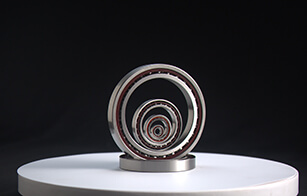
In a major breakthrough for the mechanical engineering industry, researchers and engineers have unveiled groundbreaking advancements in four-point contact ball bearing technology. These innovations are poised to revolutionize various sectors that heavily rely on precision motion control systems, including automotive, robotics, and industrial machinery.Here are the key highlights of this exciting development:Enhanced Load Capacity and Durability:Through meticulous design and engineering, experts have successfully increased the load capacity and durability of four-point contact ball bearings. This means that these bearings can now withstand heavier loads, making them even more versatile for a wide range of applications. Industries such as heavy machinery will greatly benefit from this increased load capacity, as it will lead to improved performance and reliability.Optimal Angular Contact:The latest advancements in four-point contact ball bearing technology have resulted in optimized angular contact capabilities. This means that the bearings can now maintain a constant and precise contact angle, even under heavy loads and high-speed rotations. Such stability ensures smoother and more efficient motion control, reducing friction, and minimizing wear and tear. This breakthrough will have a significant impact on industries that require precise and dynamic movement, such as robotics and automation.Improved Sealing Mechanisms:Addressing a long-standing challenge in bearing technology, engineers have introduced advanced sealing mechanisms for four-point contact ball bearings. These new seals offer enhanced protection against contaminants, such as dust, moisture, and debris, extending the lifespan of the bearings and reducing the need for frequent maintenance. The improved sealing technology will be particularly advantageous in demanding environments, including automotive applications and industrial machinery.
2022-05-20
More >>
1. Structural design of shaft system2. Assembly scheme of parts on the shaft3. Circumferential positioning of parts on the shaft4. Axial fixation of shafting5. Shaft adjustment6. The manufacturability of the shafting structure 7. Measures to improve the fatigue strength of the shaft and the stiffness of the shafting
2022-04-27
More >>
Bearing cage, also known as bearing retainer, is one of the main parts of the bearing. The function of the bearing cage is to wrap and isolate the rolling elements and move with them, and usually also has the function of guiding the rolling elements.The main function of the bearing cage:1. Keep an appropriate distance between the rolling elements to prevent the rolling elements from contacting each other to reduce friction;2. Make the rolling elements evenly distributed, so that the load is evenly distributed;3. Guide the rolling elements in the no-load area to improve the rolling conditions in the bearing and prevent destructive sliding.
2022-04-13
More >>
The main chemical components of bearing steel are carbon, chromium, silicon, manganese, nickel, molybdenum, vanadium and so on.I. Carbon effectsExcept carburized steel, the carbon content of bearing steel is 0.95-1.15%, which belongs to hypereutectoid composition. Thus, high hardness, high contact fatigue strength and wear resistance can be obtained after quenching and tempering at low temperature. In order to form enough carbides to increase the wear resistance, the carbon content should not be too low, but too high carbon content will increase the non-uniformity of the carbides and make the mechanical properties of the carbides decrease with the formation of reticular carbides.II. Effect of alloy elementsChromium is the main chemical component of bearing steel. Chromium can improve hardenability, reduce overheating tendency and improve low-temperature tempering stability. Silicon and manganese in bearing steel mainly improve hardenability. Nickel in Carburized bearing steel can improve the toughness and plasticity of steel. Nickel can improve the fatigue resistance of steel and reduce the sensitivity of steel to notch. Molybdenum in steel can improve hardenability and thermal strength, prevent tempering brittleness and increase corrosion resistance in certain medium. Vanadium increases the strength and yield ratio, especially the ratio limit and elastic limit, and reduces the decarburization sensitivity during heat treatment. Thus the surface quality of bearing steel without chromium and vanadium is improved.
2022-03-23
More >>
Bearing clearance is the clearance (or interference) inside a single bearing or a system composed of several bearings. The clearance can be divided into axial clearance and radial clearance, which depends on the bearing type and measurement method.Why should the bearing clearance be adjusted?If the bearing clearance is too large or too small, the working life of the bearing and even the stability of the entire equipment operation will be reduced.The method of clearance adjustment is determined by the bearing type, which can generally be divided into non-adjustable clearance bearings and adjustable bearings.The non-adjustable clearance bearing means that the clearance of the bearing is determined after the bearing leaves the factory. The well-known deep groove ball bearings, self-aligning bearings, and cylindrical bearings all belong to this category. Adjustable clearance bearing means that the relative axial position of the bearing raceway can be moved to obtain the required clearance. In this category, there are tapered bearings, angular contact ball bearings and thrust bearings.For non-adjustable bearing clearance, the industry has corresponding standard values (CN, C3, C4, etc.), and specific clearance ranges can also be customized.The choice of the best working clearance is determined by the application conditions (load, speed, design parameters) and expected working conditions (maximum life, best stiffness, low heat generation, ease of maintenance, etc.).
2021-11-16
More >>
From January to March, domestic crude steel production of bearing steel increased by 23.97% year-on-year, and the output of bearing steel increased by 17.08% year-on-year. Looking back at the bearing steel market in April, the domestic bearing steel market prices continued to rise, driven by the rising cost of steel mills and the strengthening of the futures market in late April. Up to now, the average price of domestic bearing round steel 50mm (continuous casting) is 6255 yuan/ton, an increase of 155 yuan/ton from the end of March, an increase of 2.54% month-on-month. At present, downstream procurement costs have increased significantly compared with previous years. Excessive capital pressure has led to a slight slowdown in downstream procurement efforts, and the overall acceptance of high levels by terminal enterprises is low. With the announcement of the cancellation of export tax rebates for steel products, enterprises are more concerned about the subsequent impact on the export of bearing steel. However, in the recent stage, under the background of good fundamentals and high demand, under the stimulus of the continuous increase in the price of high-quality steel, it is expected that the market price of bearing steel in May may continue to rise.
2021-05-07
More >>
Recently, Wuxi Huayang Rolling Bearing Co., Ltd. (hereinafter referred to as "Huayang") and Luoyang Bearing Research Institute Co., Ltd. held an unveiling ceremony for the "United Technology Center" jointly established. Senior leaders from both sides attended the unveiling ceremony.Huayang is a big enterprise integrating R&D, manufacturing and sales of rolling bearings, especially in the fields of deep groove ball bearings, one-way bearings. It has a high reputation at home and abroad. Luoyang Bearing Research Institute Co., Ltd., affiliated to China National Machinery Industry Corporation, is the only national comprehensive technical research institution in the domestic bearing industry and is well-known in the field of angular contact ball bearings. The two parties will carry out close and comprehensive cooperation in industrial development planning, technological innovation research and development, process tooling, testing, basic research and other comprehensive technologies based on the principle of mutual benefit.
2021-03-24
More >>
Recently, Five ministries including the National Development and Reform Commission jointly issued a document "Notice on the release of 2020 (27th batch) new certification and the list of all national enterprise technology centers" (Fagai High Technology [2020] No. 1918). The technology center of Luoyang Bearing Research Institute Co., Ltd. was newly recognized as a national enterprise technology center.
2021-01-05
More >>
Dear ZYS friends, Thank you for your long-term attention and support to ZYS Bearing! 2020 China International Bearing Industry Exhibition is about to open. We sincerely invite you to visit our booth to discuss and communicate with us. Look forward to seeing you!2020 CHINA INTERNATIONAL BEARING INDUSTRY EXHIBITIONDate:2020/12/09—12Address:National Exhibition and Convention Center (Shanghai)ZYS Booth No. : 4.1 A066 Website: www.zysbearing.comEmail: sales@zys.com.cn
2020-12-07
More >>
In May 2020, the first ISO standardization document ISO/TR 20051:2020 in the field of rolling bearings developed by China-\"Derivation of Rated Load Coefficient of Joint Bearings\" was officially released. This document is the first time that China has taken the lead, and led by Luoyang Bearing Research Institute Co., Ltd. with the participation of Fujian Longxi and Huangshan Colleges. Its release has achieved a zero breakthrough in the field of international standardization of rolling bearings in China.The ISO/TR 20051 project was established in May 2015. After the 4th edition of the WD draft and multiple CD draft revisions, it was finally successfully released and constituted a key supplement to another international standard ISO 20015:2017 \"Calculation of the rated dynamic and static load of Joint Bearings\". ISO 20015 gives the engineering calculation method for the rated dynamic and static load of joint bearings, but does not give the core content-the derivation method and recommended value of the rated load factor, that is, the theoretical basis, Mathematical model, derivation process and numerical results for determining the coefficient in each calculation formula. ISO/TR 20051 provides background information for this part of the content, which is an important supplement to ISO 20015, and forms a complete standard system together with ISO 20015. When countries have unified the rated load factors of joint bearings, the rated load values of joint bearings can be unified, so that users of joint bearings can use the same standard to measure the quality of bearings and help bearing manufacturers improve their quality.The successful release of ISO/TR 20051 marks the further improvement of China\'s influence and right to speak in the field of rolling bearing international standardization, and will also accumulate valuable experience for my country to undertake other rolling bearing international standard formulation projects in the future.
2020-08-17
More >>
Industrial robotic bearings are high end products that have evolved from the accelerated pace of industrialization within the country the market base is very broad. At the end of November ZYS’s new thin-section slewing bearing for heavy duty industrial robots came off the assembly line and was delivered to the customer. The successful development of this product has expanded ZYS’s market share in this field and allowed us to play a critical role for any Robotic manufacture this also allows ZYS to expand this high end product market. ZYS’s new heavy duty industrial robots thin walled bearings rolled smoothly off the assembly line and are sent to the customer. The successful development of this product has captured a segment of the company’s manufacturing base and is targeted for further expansion to play a critical role for the company’s growth in this high end products market.
2017-09-11
More >>
The State Administration of Industry and Commerce released the results of 2016 well-known Trademark in China on 8th, October, there are total 296 Well-known trademarks this year. It's the second time for ZYS to be identified as "Well-known trademarks in China".The "Well-known trademarks in China" identified by the State Administration of Industry and Commerce is China trademark that protected by International Law worldwide, it's the highest honor in trademark domain in China. After releasing, government will strengthen efforts to fight against the counterfeit, fake events of Well-known trademarks, to protect enterprises' legitimate rights and interests.
2017-08-22
More >>
ZYS will attend Bearingnet USA user Meeting from 7-9.9.2017.In this meeting,there are more bearing manufacturers and distributors there,and it's exactly matching our products--top quality bearings.We now mainly provide super precision robot bearings:angular contact ball bearings and crossed roller bearings.We also can offer other types of robot bearings according to customer's request. Welcome to contact our general manager Mr dong tel:18937963793,we can talk about our products face to face.
2017-08-18
More >>
ZYS Hybrid Ceramic Ball Bearing Line Ideal for Electrical Machinery and General Industry Applications - Excellent electric insulation properties with high-speed and temperature capabilities Plymouth, MI… ZYS Americas, the North American subsidiary of The ZYS Group, China’s largest bearing producer, and one of the world’s top 10 bearing manufacturers offers a wide range of hybrid ceramic ball bearings for electrical machinery and general industry applications. ZYS hybrid ceramic ball bearings are engineered to maximize the benefits of precision steel ring construction and lightweight ceramic balls. In addition to delivering excellent electric insulation properties, they provide a higher-speed and higher temperature capability and longer service life than all-steel bearings in most applications. The bearings are available in a variety of configurations with bores from 17 – 90 mm, ODs from 40 – 190 mm, and speed ratings as high as 21,600 RPM/min. Better high-speed, high temp capability ZYS hybrid ceramic bearings are constructed of steel rings and silicon nitride (Si3N4) balls, which are approximately 40% of the density of steel. This gives the bearings a lower inertia and better high-speed capability than standard bearings. The lower inertia results in less loading on the raceway and provides superior performance during rapid acceleration and deceleration. The silicon nitride balls also have a lower coefficient of friction so they generate less heat at high speed, greatly improving the life of the grease and the bearing. As a result, the bearings are less sensitive to temperature changes and high temperature operating conditions that can affect both running accuracy and internal clearance. Less wear and false brinelling The silicon nitride used in ZYS hybrid ceramic bearings is much harder than steel, which improves the overall stiffness of the bearings and makes them resistant to damage from contamination. ZYS hybrid ceramic bearings are also less susceptible to false brinells. When a stationary bearing is subjected to external vibration, the metal-to-metal contact between the balls and raceways can result in abrasions known as false brinells. The wear particles created by false brinells can contaminate and breakdown the lubricant, causing increased noise and vibration. Excellent electrical insulation ZYS hybrid ceramic bearings are ideal for use in electric motors and generators that are prone to stray electric currents. The bearing design insulates the inner ring and the outer ring of the bearing, effectively preventing the flow of stray currents. This helps to avoid arc-pits and secondary damage that can result in increased noise and vibration, heat generation, lubricant breakdown, and premature failure of the bearing. Replaces both hybrid ceramic and conventional bearings ZYS hybrid ceramic bearings can be used as direct replacements for existing hybrid ceramic bearings as well as conventional bearings in all applications. They are lubricated for life with Mobil Polyrex EM grease and sealed with low-torque, non-contact seals (-2RZ) to ensure optimum efficiency for torque-sensitive applications and adequate protection from contamination. Handling and mounting are identical to steel bearings, so standard installation tools and methods can be used. ZYS Americas offers a full line of bearing types and styles for use in original equipment manufacturing, aftermarket replacement, and MRO operations. The ZYS portfolio includes over 30,000 types of bearings in a wide range of specifications and sizes ranging from 1.5mm ID to 4000mm OD. As China’s largest bearing producer, and one of the world’s top 10 bearing manufacturers, ZYS utilizes the formidable production capabilities of its nine manufacturing centers, 34 bearing plants, and 22 vertically integrated component plants to produce over 2.8 million bearings per day. ZYS relies on state-of-the-art manufacturing and stringent QC in order to maintain its leadership position in the bearing market.
2017-08-14
More >>
The Ability Of ZYS Testing Bearing Improves Substantially.Recently, bearing test center of ZYS National Large Bearing Engineering Research Center has passed CNAS laboratory accreditation reassessment smoothly. Through continuous construction, adding testable inspection items and expanding testing scope, the ZYS’s ability of testing bearing has improved constantly. To pursue its fast development in bearings, recently, bearing test center added high-speed tester. Now it has been running on the spot and completed tests for high-speed bearings with multiple specifications, which made it possible that the new developed high-speed bearing was sufficiently validated in the lab. Besides, bearing test center also added dynamic balance detector for cages, high/low automatic impact testing machine, metallographical detector, hardness detector and so on, in order to provides a solid underpinning for improving accuracy of test data. ZYS bearing test center is a comprehensive bearing testing laboratory that combines with inspecting, testing, analyzing, researching, identifying and evaluating together. It owns many professional test platforms for windpower bearing, machine tool bearing, automotive bearing and railway bearing, and has the only one test machine in China to test over sized bearing. At present, the test scope and test ability of ZYS test center rank Top 1 in national bearing industry.
2017-08-04
More >>
ZYS Has The Ability To Carry Out Mass Production Of CC Design Spherical Roller Bearings CC design spherical roller bearings are mainly applied in industries of gearbox, blast blower, paper making, steel, shipping, coal mine machinery, power and so on. At present, multiple types of spherical roller bearings of ZYS have the ability to carry out mass production. Developing CC design spherical roller bearings is one of the key strategies of ZYS to adjust structure and upgrade products. ZYS is able to provide three series of spherical roller bearings with high quality including heavy, medium and light series, which have achieved the world-class level. On basis of advanced technical process, stable quality system and lean manufacturing mode, ZYS is offering customers superior products and services.
2017-08-03
More >>
ZYS takes the remanufacturing head start of shield tunneling machine in china Recently, ZYS. and China railway tunnel group jointly held Tunnel Boring Machine remanufacturing main bearing usage assessment meeting in Guangzhou. ZYS successfully passed the expert group evaluation for Guangzhou metro line No. 4 south 5 standard items project of Tunnel Boring Machine remanufacturing assort main bearing, which makes ZYS. become the first domestic through industry evaluation enterprise of Tunnel Boring Machine remanufacturing main bearing. It marks that firstly break Tunnel Boring Machine main bearing remanufacturing technology. The relevant responsible officer of ZYS introduce, Since last year's computer use the complete set of Tunnel Boring Machine remanufacturing main bearing which the enterprise assort for the project, so far it has been tunnelling 1.5 kilometers on the complex condition of Guangzhou metro line No. 4 south 5 standard items.
2017-07-27
More >>
High speed dental drill bearing is the heart of high speed dental handpiece. 17 years ago, ZYS was the first one to devote in its design and new material use. ZYS dental drill bearing can give a stable performance as 400 thousand revolutions per minZYS (RPM), which has led dental treatment to a painless era.S418 and S718 series dental drill bearing, the ferrule and balls are made of 440C stainless steel. ZYS also makes silicon nitride ceramic ones according to customer request. Currently, we are using stainless steel balls from Japan and Si3N4 silicon nitride ceramic balls from Saint-Gobain (USA).We use super resin material with titanium fibers to make ZYS’s self-developed S418 series dental drilling bearing support frame. Since the hardness of titanium fiber is much lower than fiber glass, it protects the counterpart from friction. We also added some portion of solid lubrication in this resin to reduce friction and let the bearing endure longer friction under high speed rolling. The lubrication capability of this material is quite suitable for dental drilling bearings to take high temperature and high pressure steam sanitization time after time, even in oilless condition. Because of the low friction of ZYS dental drilling bearings, it consumes less power but produces strong output performance. It also saves time and man power, preferred by many dental experts.
2017-07-24
More >>
ZYS Lubricant-free Bearings will Protect Environment The Iglidur plain bearings from Igus are tribologically optimised to ensure that no lubrication is ever required. Over 40% of all lubricants are ultimately released into the environment, seeping into water or soil, or evaporating into the atmosphere. A study by a research team of chemists, mechanical engineers and environmentalists at the RWTH University in Aachen, Germany, found that Germany alone consumes 250,000 tonnes of lubricants each year. To put this into perspective, this would fill 8000 standard tanker lorries. Most countries have a threshold level permissible in waste streams and hundreds of millions of pounds are spent annually treating aste water to get to acceptable levels. The Iglidur plain bearings from Igus are tribologically optimised to ensure that no lubrication is ever required. These bearings run without any oil or grease, so no contaminants escape into the environment. More and more applications which traditionally use lubricated metal plain bushes can now benefit from environmentally friendly plastic Iglidur bearings. While 15 litres of oil are required to produce 1 litre of aluminium and 11 litres of oil to make 1 litre of steel, only 1.8 litres of oil are necessary to produce 1 litre of plastic. In fact, only 4% of the world's oil production is used in the manufacture of plastics and this value is likely to decrease with the progress that is being made in the organic production of polymers. The first steps are being made in extracting carbon dioxide from power station emissions and using this to produce polymers such as polycarbonate and polyurethane. As well as the "no lubrication" environmental benefit of Iglidur bearings, there is also the issue of weight reduction. The light weight bearings help to reduce the fuel consumption and carbon dioxide output of vehicles, aircraft and plant machinery. The reduced weight leads to a lower required drive force and subsequently lower energy consumption. Iglidur polymer plain bearings have, as standard, high chemical resistance, whereas metal plain bearings often have to be coated to achieve this. The coating methods used include zinc plating, treatment and galvanising, consuming more energy. Iglidur plain polymer bearings are designed to be dimensionally interchangeable with lubricated plain metal bearings.
2017-07-21
More >>
ZYS will attend HANNOVER Show ZYS will attend hannover Show from 18-23.9.2017.In this exhibition,there are more bearing manufacturers and distributors there,and it's exactly matching our products--top quality bearings.We now mainly provide super precision robot bearings:angular contact ball bearings and crossed roller bearings.We also can offer other types of robot bearings according to customer's request. Welcome to visit our booth 006L53,we can talk about our products face to face.
2017-07-20
More >>
Recently, bearing test center of ZYS National Large Bearing Engineering Research Center has passed CNAS laboratory accreditation reassessment smoothly. Through continuous construction, adding testable inspection items and expanding testing scope, the ZYS’s ability of testing bearing has improved constantly.To pursue its fast development in bearings, recently, bearing test center added high-speed tester. Now it has been running on the spot and completed tests for high-speed bearings with multiple specifications, which made it possible that the new developed high-speed bearing was sufficiently validated in the lab. Besides, bearing test center also added dynamic balance detector for cages, high/low automatic impact testing machine, metallographical detector, hardness detector and so on, in order to provides a solid underpinning for improving accuracy of test data.ZYS bearing test center is a comprehensive bearing testing laboratory that combines with inspecting, testing, analyzing, researching, identifying and evaluating together. It owns many professional test platforms for windpower bearing, machine tool bearing, automotive bearing and railway bearing, and has the only one test machine in China to test over sized bearing. At present, the test scope and test ability of ZYS test center rank Top 1 in national bearing industry.
2017-07-12
More >>
In recent days, Luoyang Office of Science and Technology announced a list of Luoyang Science and Technology Progress Award in 2017, the project submitted related to critical technical research and application for heavy axle load railway wagon rolling bearing won the first prize, other four projects obtained second prize, for instance, critical technical research on reclaimer extra-large size thrust ball bearing, critical technology of self-lubricated high temperature bearing for metallurgical equipments, critical technology of cylindrical roller bearing unit for precision pump industry, critical technology research and application for high temperature sealed commercial vehicle eddy current retarder.The project of Critical Technology research and application for Heavy load railway wagon bearing, by deep in and research with proprietary intellectual property rights in design, manufacturing and testing to heavy load railway wagon bearing, and comparison testing with products from foreign famous company, reached equivalent life, can totally substitute imported railway wagon journal box bearing, and realize the situation of the heavy railway wagon bearing has been monopolized by overseas supplier, which guarantee the completion of the research on heavy axle load long consist heavy load railway wagon.By implement research and application to critical technology in heavy axle load railway wagon bearings, the company breakthrough critical technology in heavy axle load railway wagon, built heavy axle load railway wagon bearing research development platform and industrial base, which improves railway wagon bearing’s design and manufacturing level and market competitiveness.
2017-07-10
More >>
ZYS developed high-speed rail bearings reached the international advanced levelRecently, In ZYS large high-speed railway bearing testing machine, ZYS rail bearings that the speed of 350 km high-speed rail test mileage exceeded 1.08 million km.ZYS axle box bearing of 350 km per hour railway passenger has successfully completed the requirement of Ministry Industry, ZYS independent research and development of the country's only advanced testing platform, the company's commitment to the national "863" program of key projects for China's independent development of high-speed rail bearings to provide test data, so that China's railway bearing test technology reached the international advanced level.ZYS is the R&D railway bearing enterprises ,professional development and pruduct the railway bearing ,passenger baring,cargo bearing ,rolling bearing.and participation in the formulation of national standards for railway bearing,ZYS mainly produces high speed railway passenger car,truck,motorcycle,city subway and light rail trains and other specail bearings, ZYS invest 200000000 RMB to the latest CNC composite equipment abroad,the overall production equipment strength has reched the frist domestic,international advanced level,the whole company through the ISO9001 quality management system certification ,crcc certification,ZYS products are widely applied the railway truck bearing has been successfully exported to the international markets.
2017-07-04
More >>
ZYS developed the new type CT machine mainshaft bearingsOn the june10st, The new type CT machine mainshaft bearings developed by ZYS is offline in oversize bearings business division, and get through some foreign customer acceptance inspection. The bearing adopts the new structure of company research and development , high technical requirements, the noise of 120rpm≤68dB. The smooth acceptance inspection of this structured products lay a solid foundation for the company production higher speed CT machine mainshaft bearings. The picture shows that the staff are running-in test on the bearing.
2017-07-04
More >>
“China international bearing technology and service exhibition " is approved by China Ministry of Science and Technology of and the unique high-end exhibition platform focusing on "technological innovation and modern manufacturing services” in China bearing industry.The first exhibition will be held on October 19 to 21, 2015 in Luoyang. Luoyang is also rich in technology resources and high science and technology innovation for bearing industry, and the most important bearing industry gathering area and the equipment manufacturing base, having such as China YTO, CITIC and such heavy industries, which makes exhibitor resources and target customer resources abundant.The exhibition is co-sponsored and undertaken by the Chinese bearing industry's unique state-level scientific research institution, Luoyang Bearing Research Institute Co., LTD., National Bearing Quality Supervision and Inspection Center, and other companies. The exhibition has strong technical support and technical service can spread at home and abroad, so the exhibition effect will be remarkable.The exhibition mainly shows the latest scientific and technological achievements and products for bearing and relevant industries, including new technology, new materials, new equipments, new products, new technology, new standards, etc., at the same time providing technical, market, project, finance, talents, information, e-commerce and other technical service interactive platform fast passage for enterprises and merchants.The exhibition will hold series of activities, including scientific and technological achievements conference of scientific research institutes, universities, key enterprises; patent technology promotion and trading negotiation; bearing technology development peak seminar; British ROMAX and ZYS jointly developed bearing design software demonstration; the 2nd Session of the national bearing industry inspectors’ competition; bearing technical literature exhibition, talent exchange meetings between supply and demand of Henan University of Science and Technology and Luoyang Bearing Senior Technician School, etc.Autumn, harvest season! Well-known enterprises, colleges and universities, research institutions at home and abroad gather in Luoyang, pursuing bearing industry technology development.Sincerely invite your esteemed enterprise to exhibit and exchange, enhance the technology level, expand the development space, and create a better future!aa
2015-07-07
More >>
ON March 25th and 26th, 2013 ZYS distributors meeting was held in Luoyang Grand Hotel. More than 80 delegates of 47 participant units from all over China attended the meeting.Mr. Wang Jinghua, ZYS general manager, delivered a warm speech, and presented the recent development of ZYS to the delegates. Mr. Zhu Kongmin, director of operations, made the Company 2012 business report. Mr. Gu Wenhui from business planning department made a detailed description for the relevant provisions in the distributor agreement. Ms. Wu Suqin from information technology department demonstrated the product inventory querying system.2012 Excellent Distributors, Beijing Guangzhongshidai Technology Co., Ltd., Shanghai Xunsheng International Trading Co., Ltd. and Kaping Zhiye Bearing Co. ltd. were commended in the meeting.Each department of ZYS has held promoting and exchanging activities of their main products for delegates. These are special bearings, railway traffic bearings, precision bearings, electric spindle, heavy large bearing, large bearings, clutch, special material products, grease, bearing equipments, bearing testing machines, automobile bearings, agricultural machinery bearings. The delegates also visited the workshops in the first and second industrial parks.During the meeting, general manager, Mr. Wang Jinghua, and business planning department also interviewed the distributors and signed the "2013 task responsibility book".
2013-04-15
More >>
Recently, our company and its subsidiary company, Luoyang Bearing Research Institute Co., Ltd., both wan the second prize of the technical trading "Top Ten Units" which was first established by Luoyang government. Another subsidiary company, Luoyang Bearing Precision Machinery Co., Ltd. wan the technical trading "Top Ten Fast Units".To promote the combination of the technology and the economy, and to deepen the national innovation pilot city construction, Luoyang government annually established the special funds of two million RMB to award the "Top Ten Units" and "Top Ten Fast Units" in technical trading.To meet the qualification of the technical trading "Top Ten Units" and "Top Ten Fast Units", technical contract turnover in previous year must be in top ten, and its growing speed is also in top ten.The technical contracts turnover of "Top Ten Units" should not be less than 10 million RMB. "Top Ten Fast Units" should have the effective technical contract turnover in two consecutive years, and the technical contracts turnover should not be less than 500,000 RMB. Technical Trading "Top Ten Units" is divided into the first, second and third prize, respectively, being awarded 200,000 RMB, 100,000 RMB, 50,000 RMB. The Technical Trading "Top Ten Fast Units" are rewarded 100,000 RMB respectively.
2013-03-19
More >>
Recently, ZYS was selected in the whole province's 2013 100 high growing enterprises.Since 2011, the government of Henan province has started to choose 100 enterprises with large scale and benefit, and another 100 high growing enterprises within the province. The government set special policies and gave priority support to them. These enterprises will enjoy the preferential policies of credit funds, land use, coal oil and gas transporting security and so on.Company was selected in the Henan province “100 high growing enterprises” for three consecutive years.
2013-03-08
More >>
Recently, ZYS precision slewing bearing for large diameter telescope got the acceptance form the expert group. The bearing with heavy load and low friction was developed by ZYS itself. The key technical index of the rotating precision, friction torque reached the requirements of the precision slewing bearing, and could meet the requirements of the host machine. The quality in leading level of China filled the domestic blank.The bearing, the outside diameter of which is about 4 meters, is a kind of double-row different ball diameter slewing bearing. It requires high load carrying capacity, high precision, low friction torque, reliable sealing and lubricating.
2012-11-30
More >>
Sponsored by the China Bearing Industry Association, the thirteenth "2012 China International Bearing Industry Exhibition" was held from September 20th to September 23rd at the Shanghai World Expo Exhibition Center. The exhibition area was of 42,000 square meters, and there were 775 exhibitors from 15 countries and regions, over 67 foreign exhibitors.Our Company showed the products of high speed precision bearings for machine tool spindle, precision angular contact ball bearings for ball screw support, high-speed spindle bearings, precision bearings for machine tools in photovoltaic industry, turntable bearings, wind turbine bearings, rod ends bearings for shield tunneling machine, rolling mill bearings, high-speed rail bearings, auto bearings, crane sheave bearings, turbocharger bearings, hydrodynamic bearings, hybrid ceramic ball bearings, ceramic products, high-speed grinding spindle, cage materials , anti-rust lubricant, bearing induction heater, 3MK1320B Full automatic inner raceway grinder, PCR-120 cold rolling machine, XM200 surface profile measuring instrument, Y9030D and Y9014G roundness measuring instruments, X093 radial clearance measuring instrument, and etc., all of which represent our latest products of seven industry sectors.On September 20th afternoon, we held a new product release conference and four thematic technical exchange activities in the 6th conference room in the exhibition hall. On September 21st, the relevant technicians also participated in the docking meeting between bearing development and machine tool, construction machinery, automobile, which was also held by China Bearing Industry Association at the same time.During the exhibition, there were lots of visitors visiting our company’s booth, and more than ten thousand copies of the 20 different types of propaganda materials were almost distributed out. Our uniformed staff conducted the business duties well and received the visitors all over the world.The exhibition area was the largest to us, and we paid special attention to this exhibition. This exhibition showed our products well, enhanced our company's image, and we obtained the desired effect.
2012-11-02
More >>